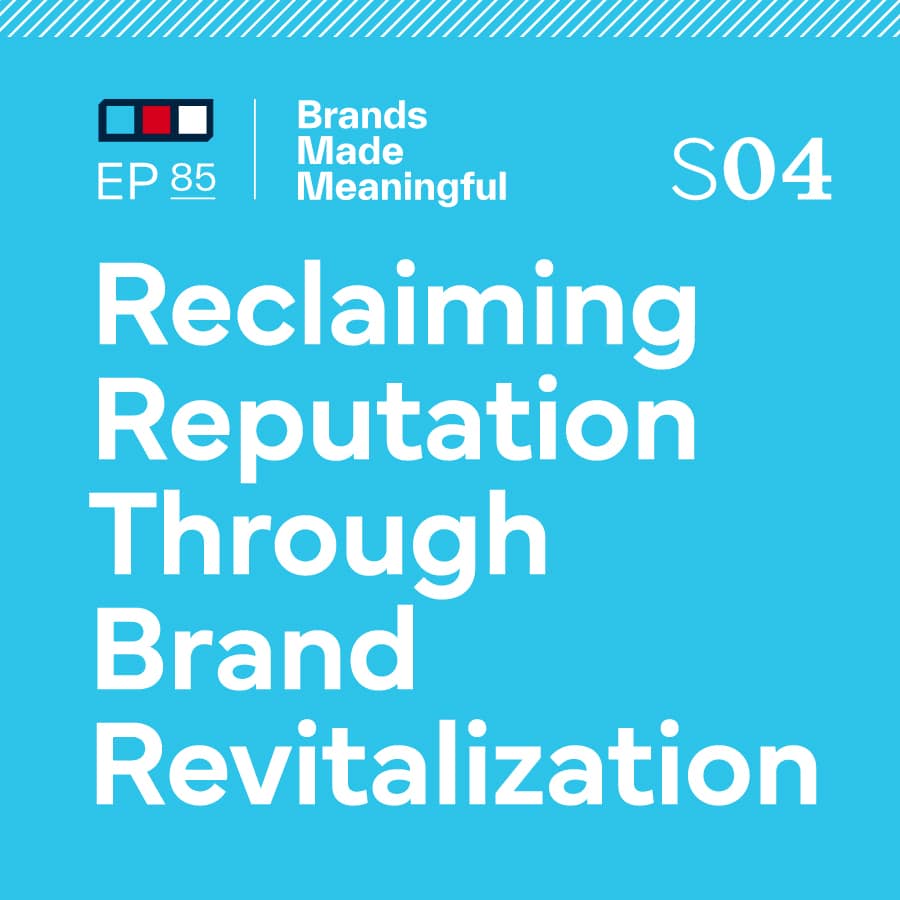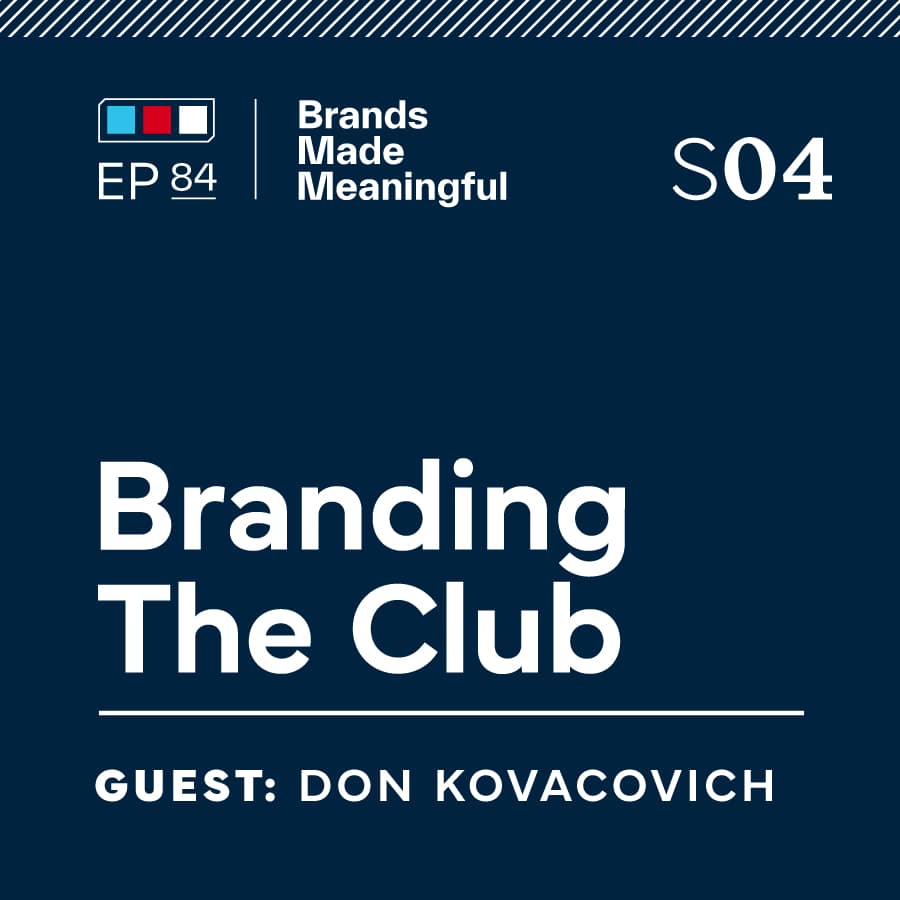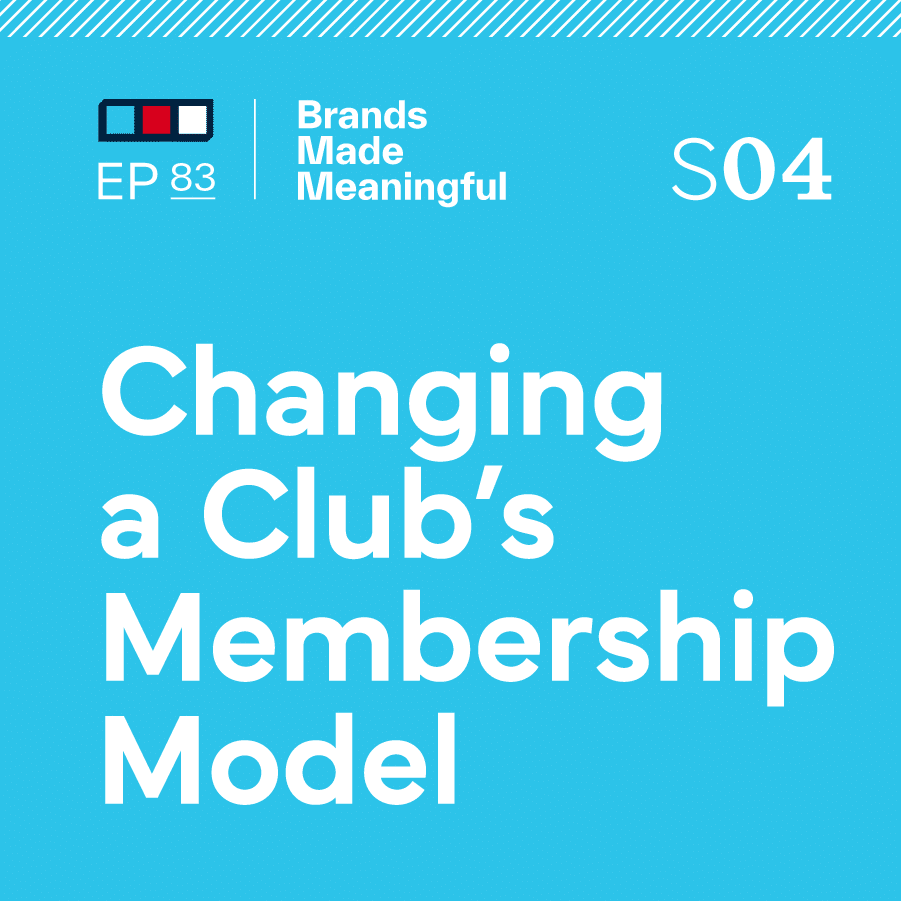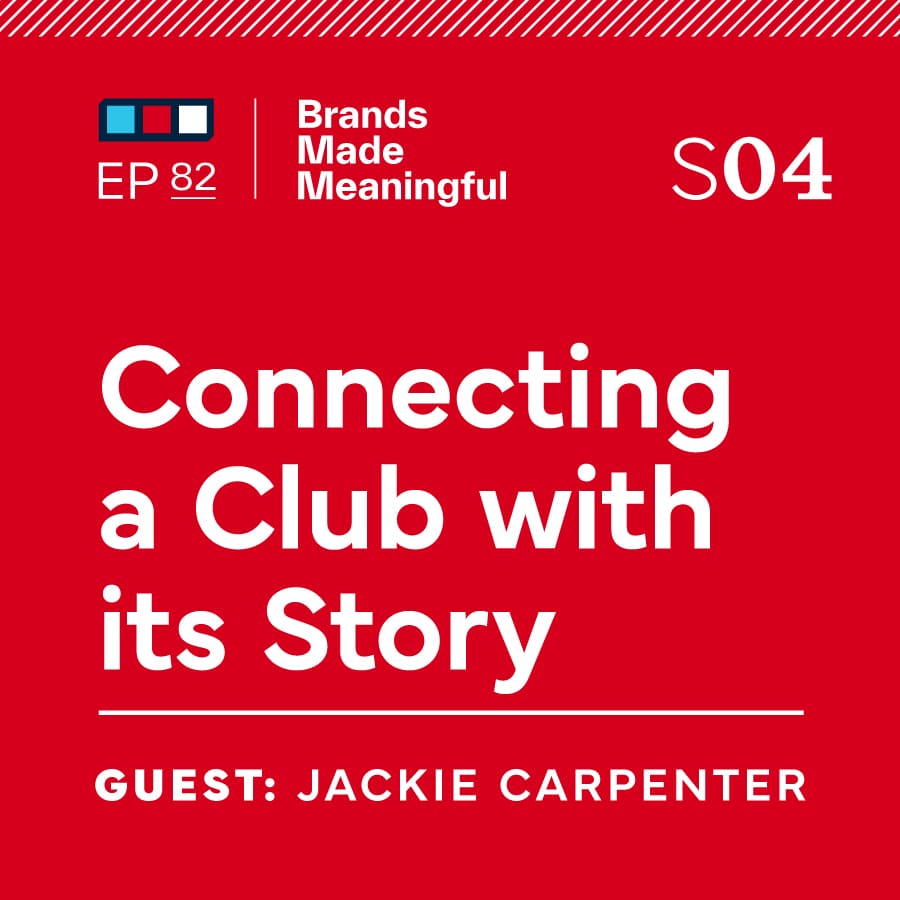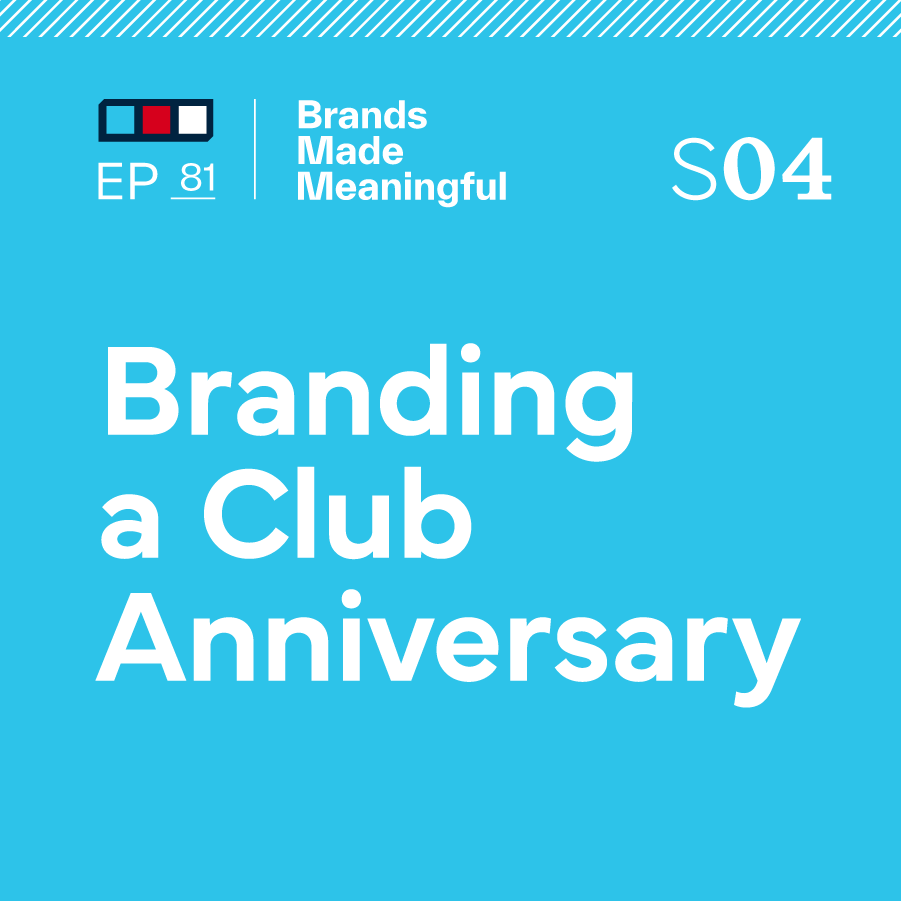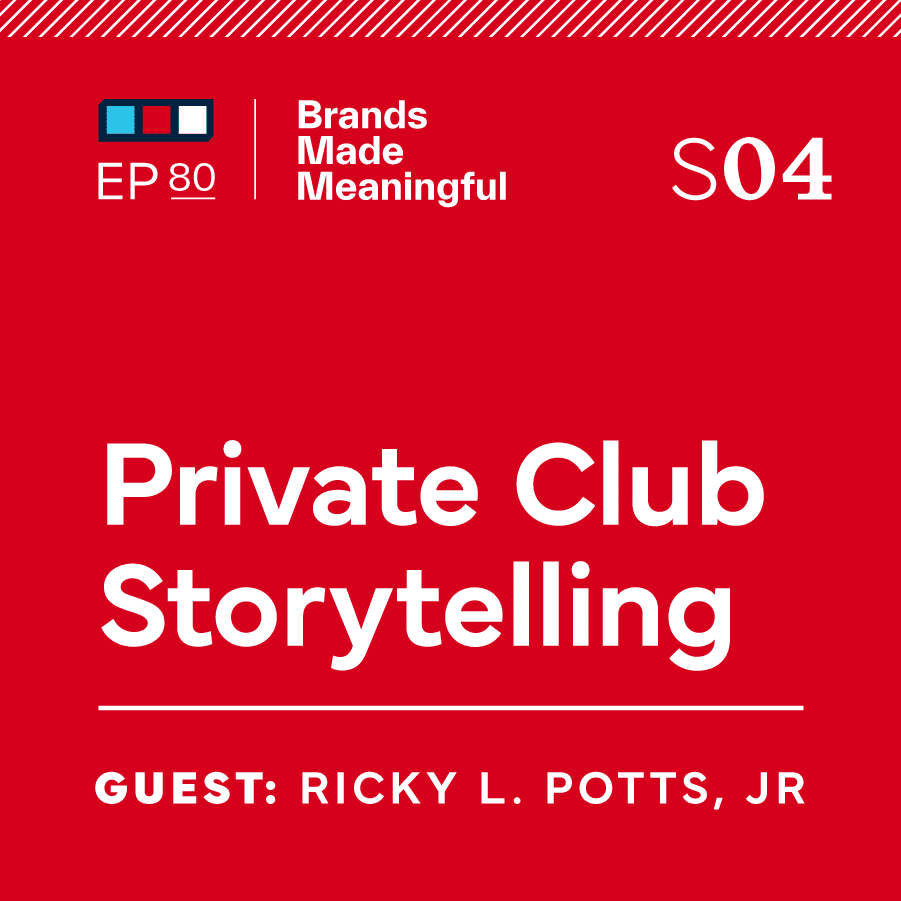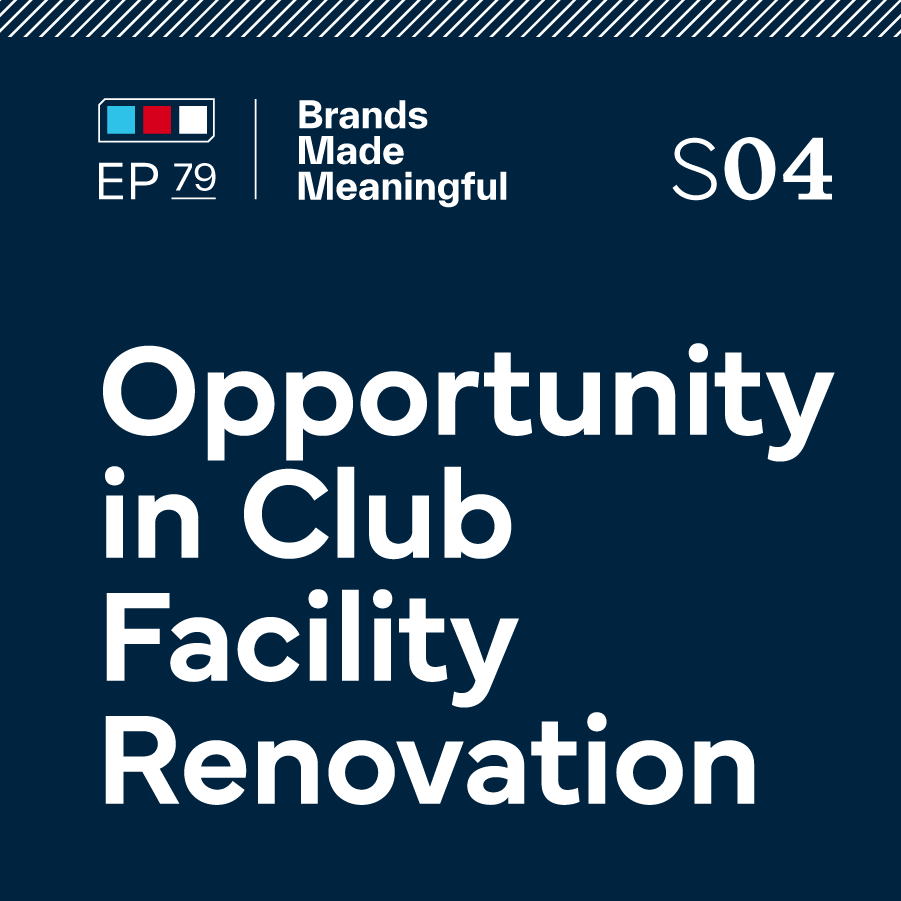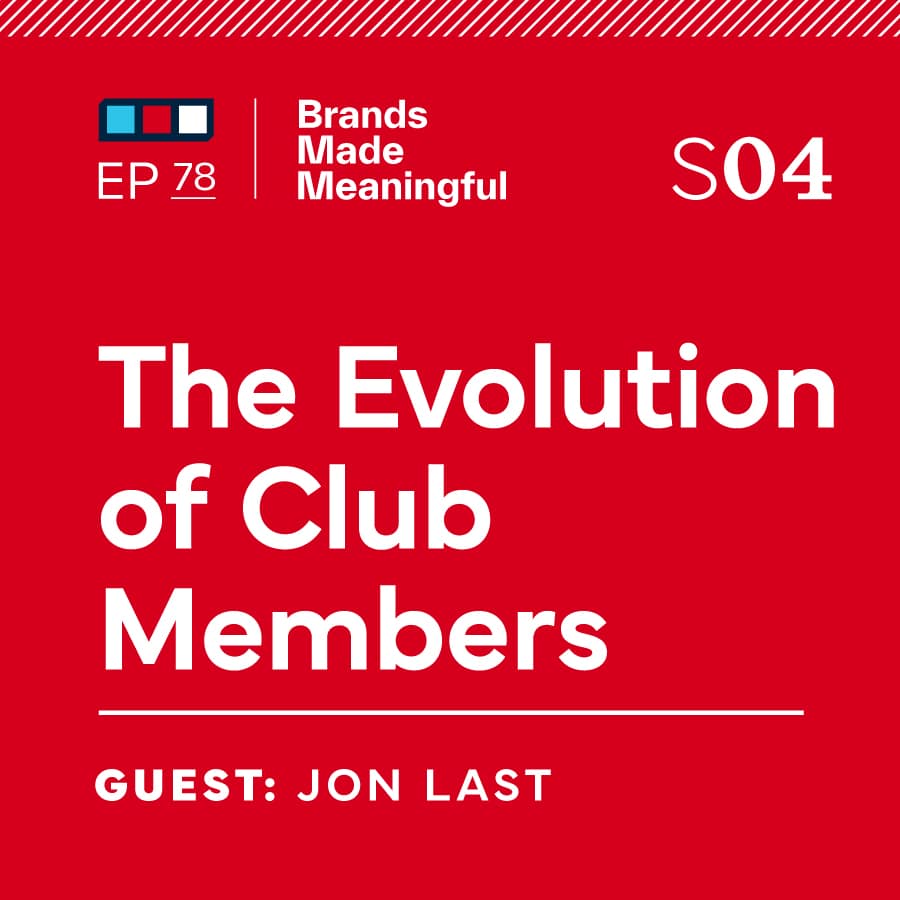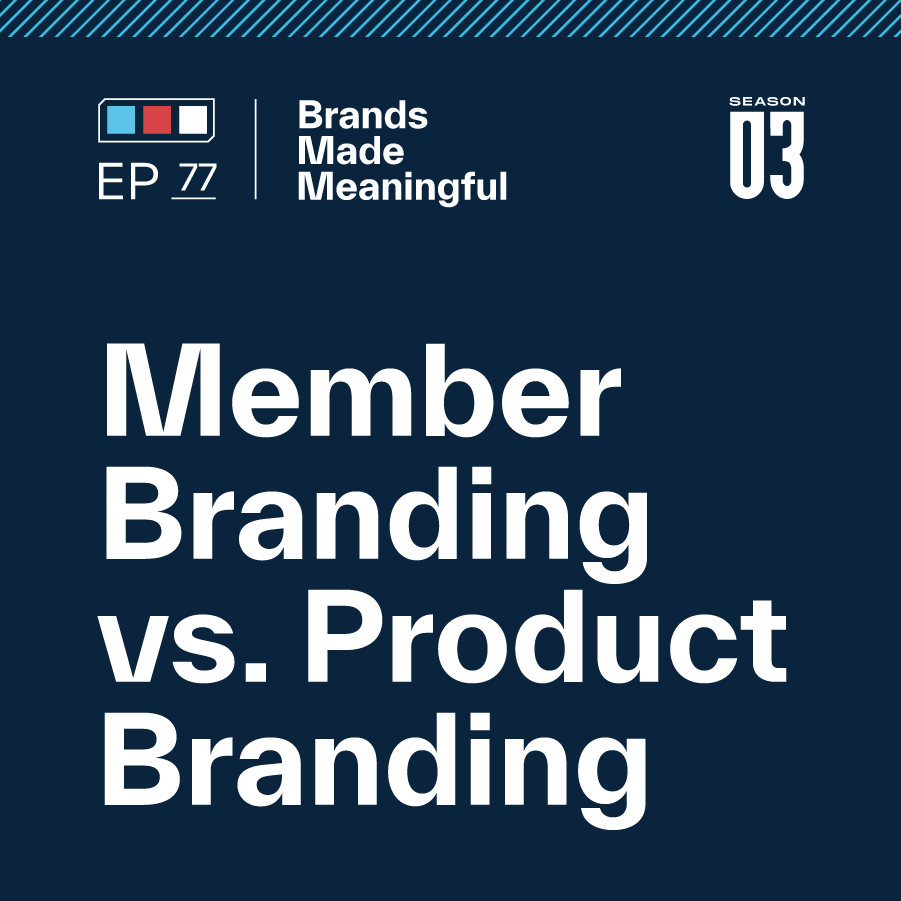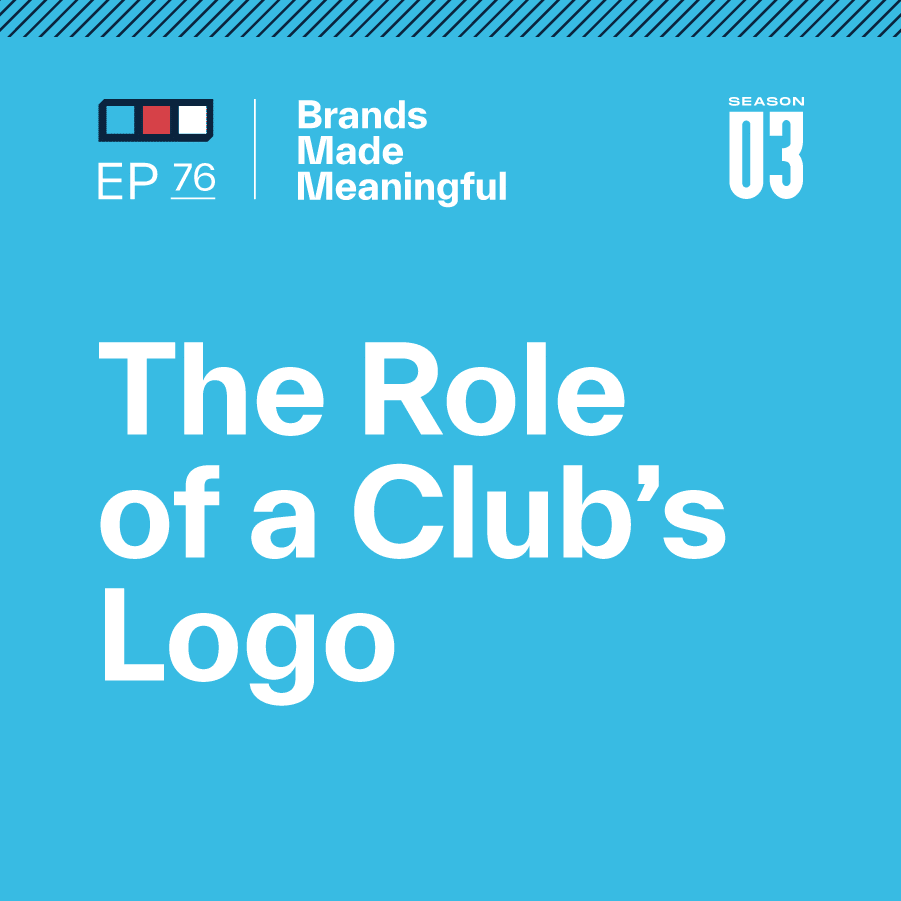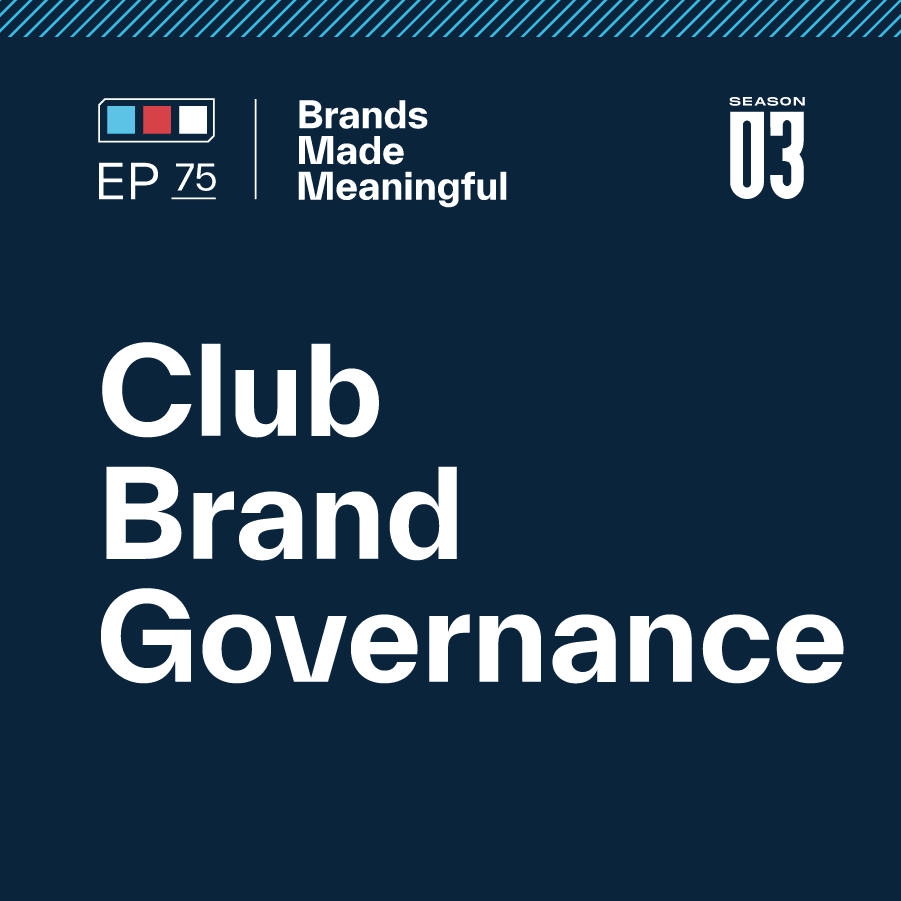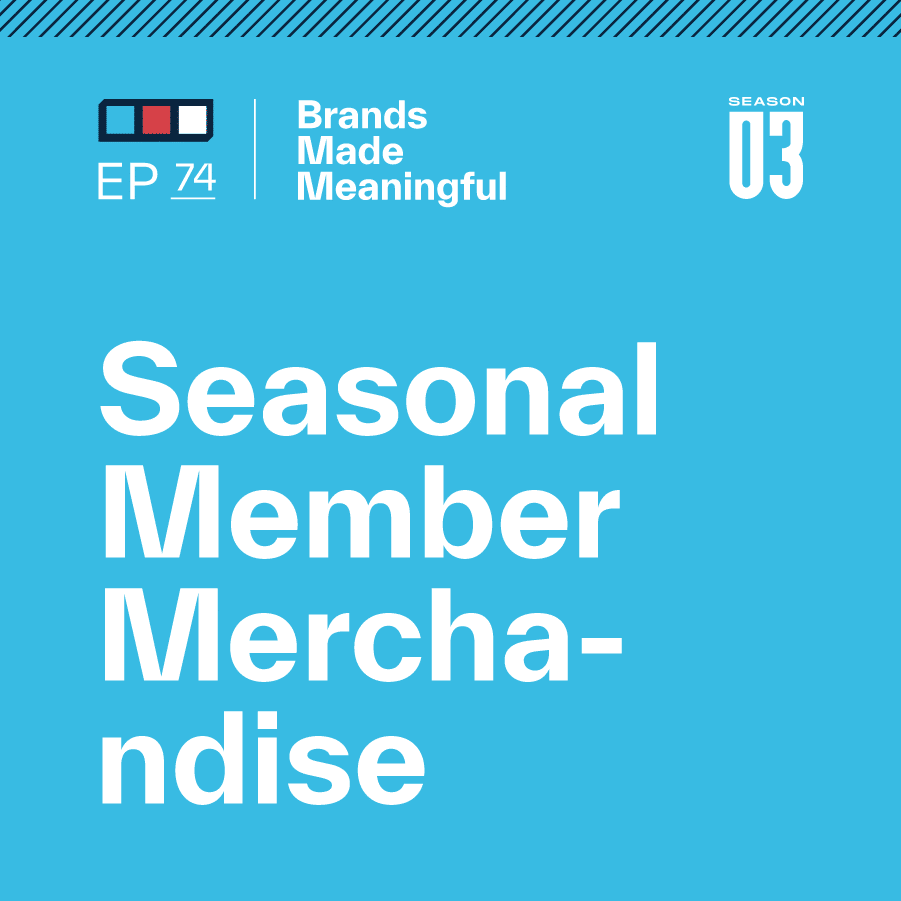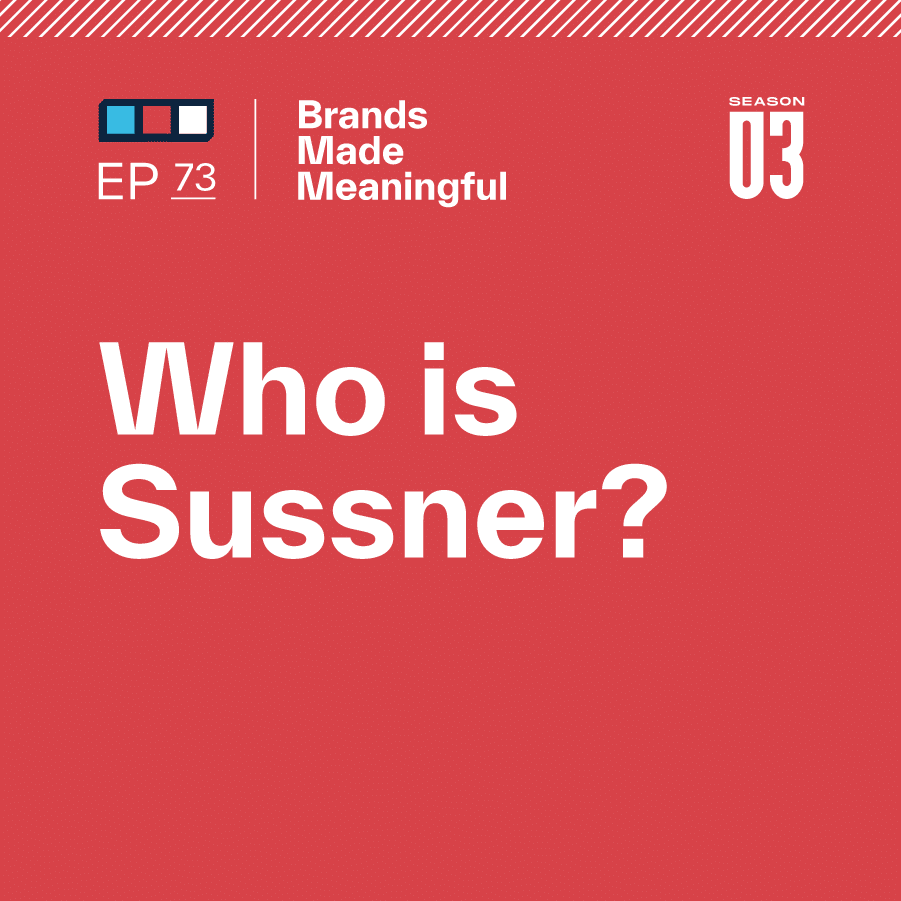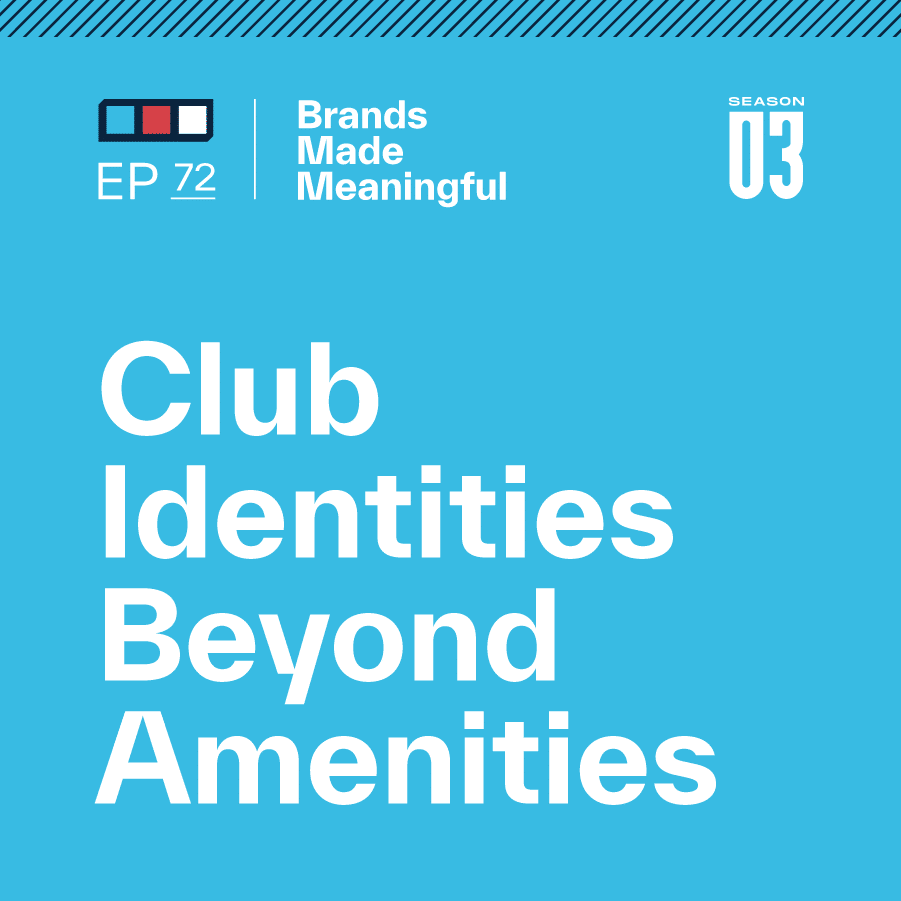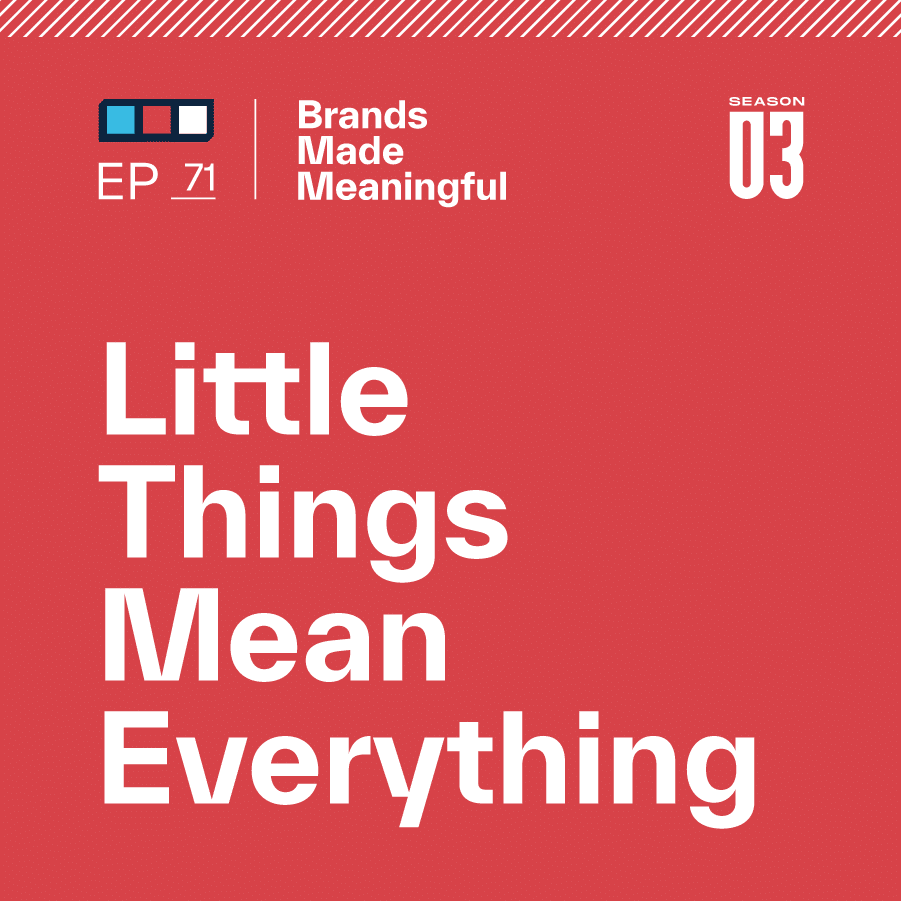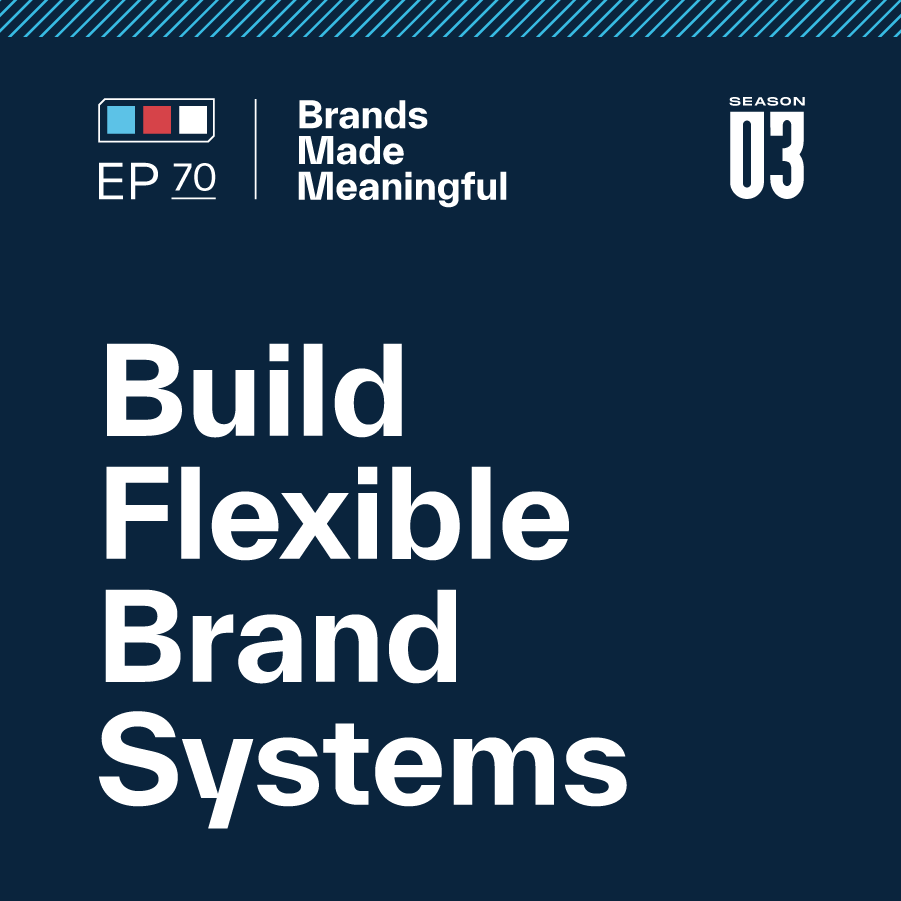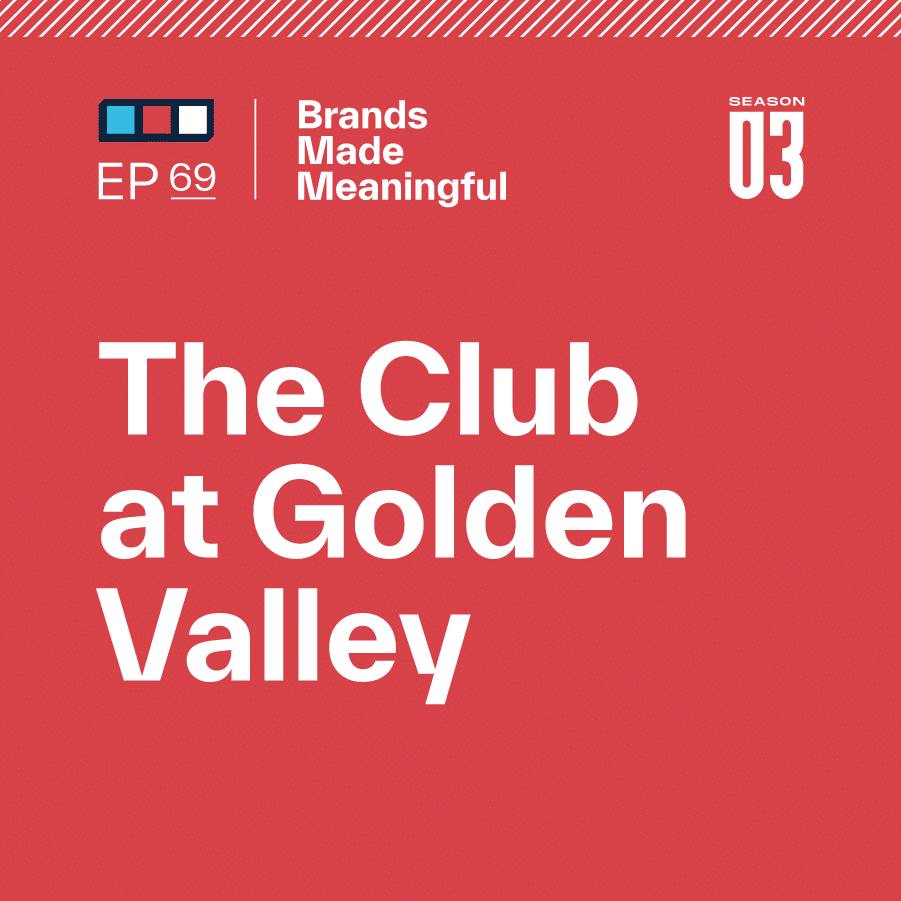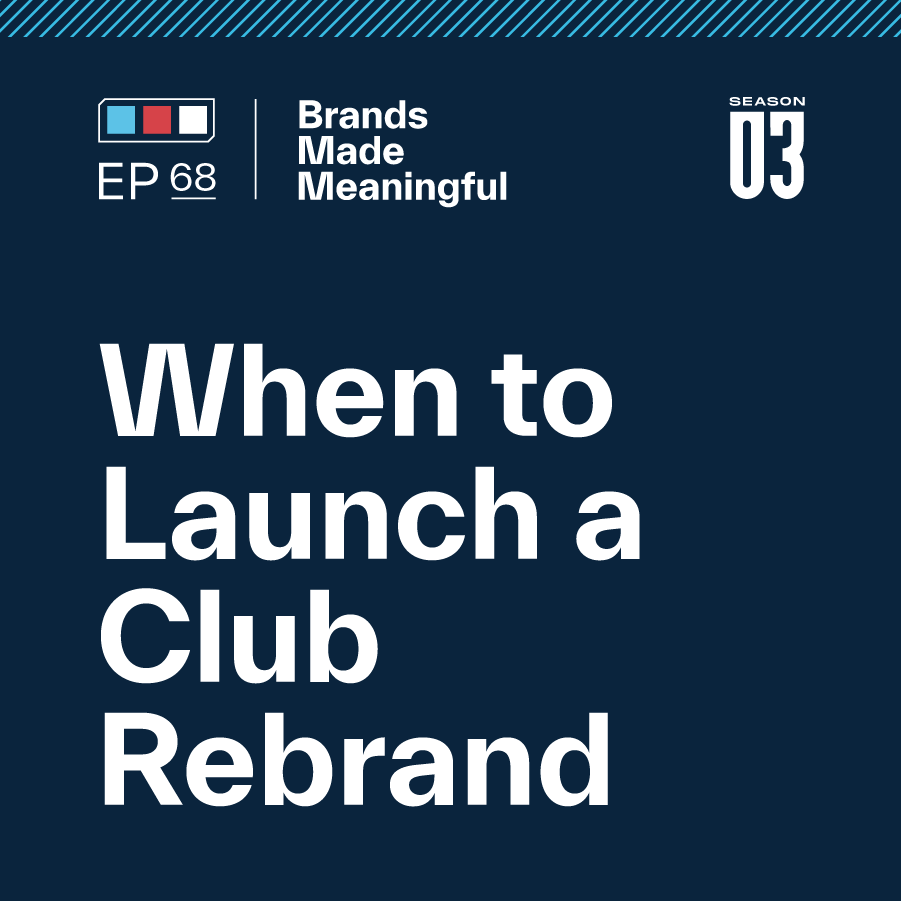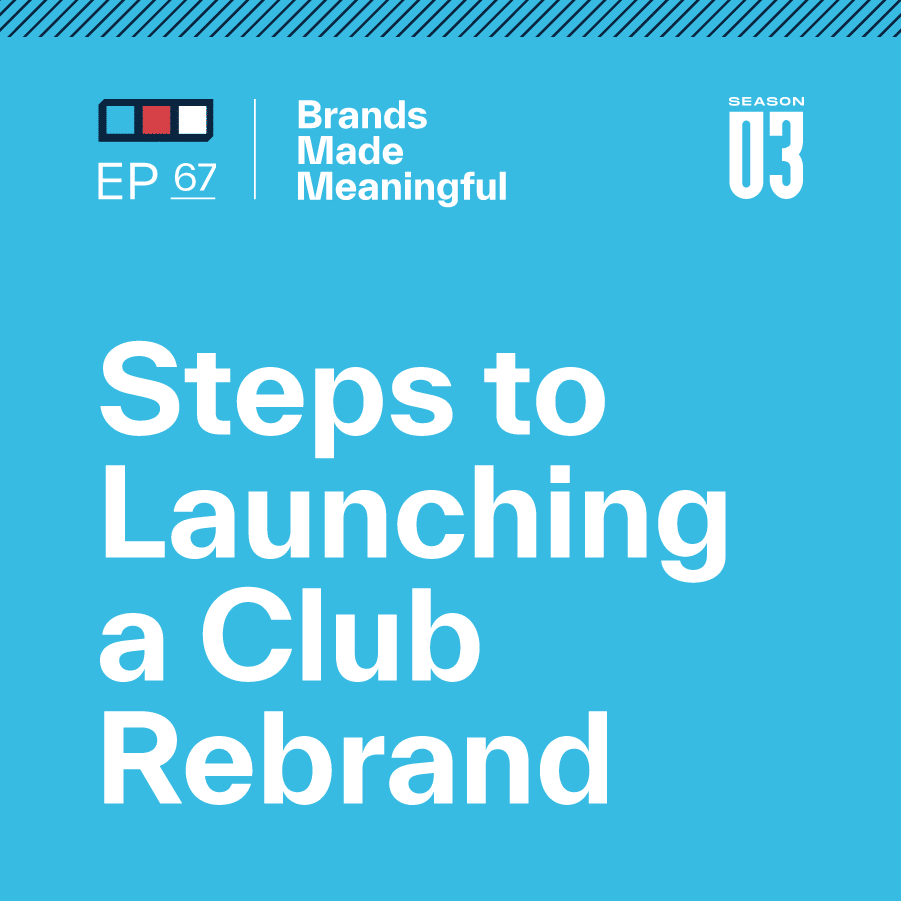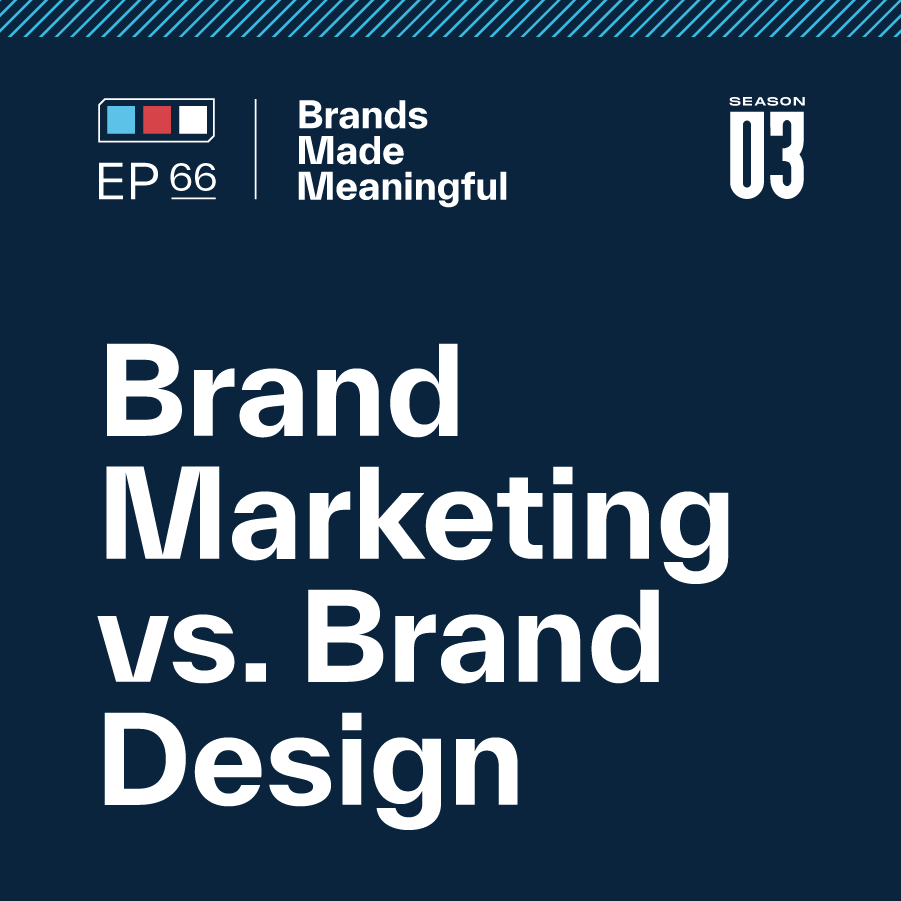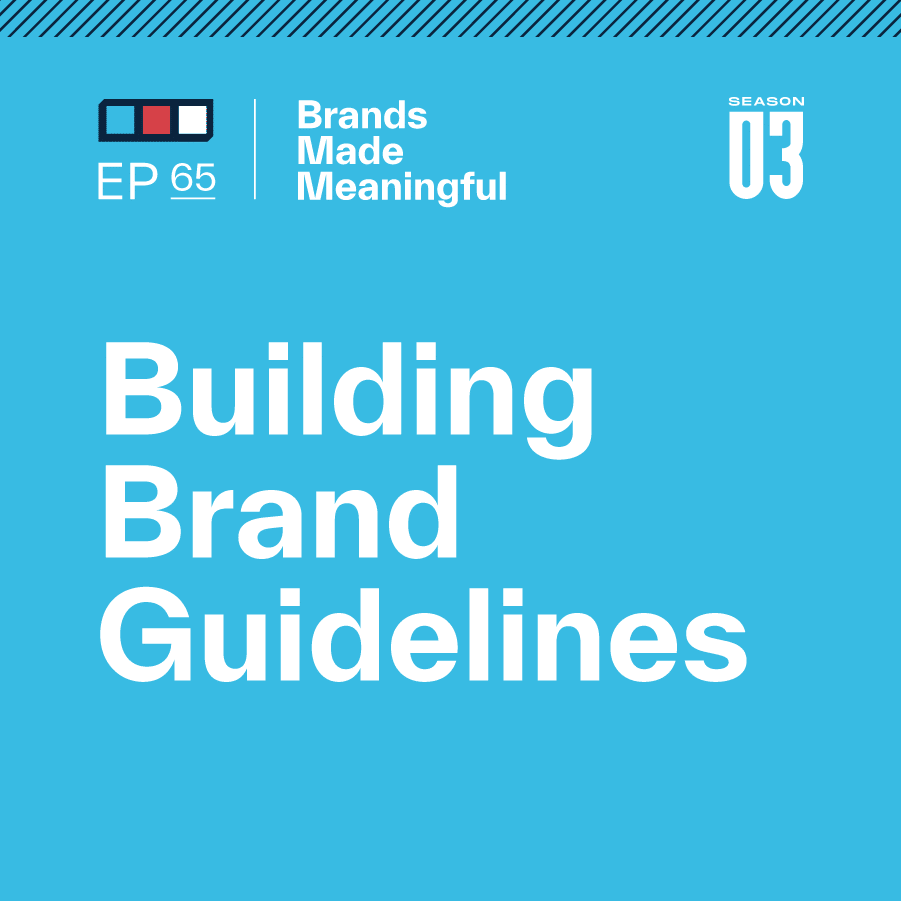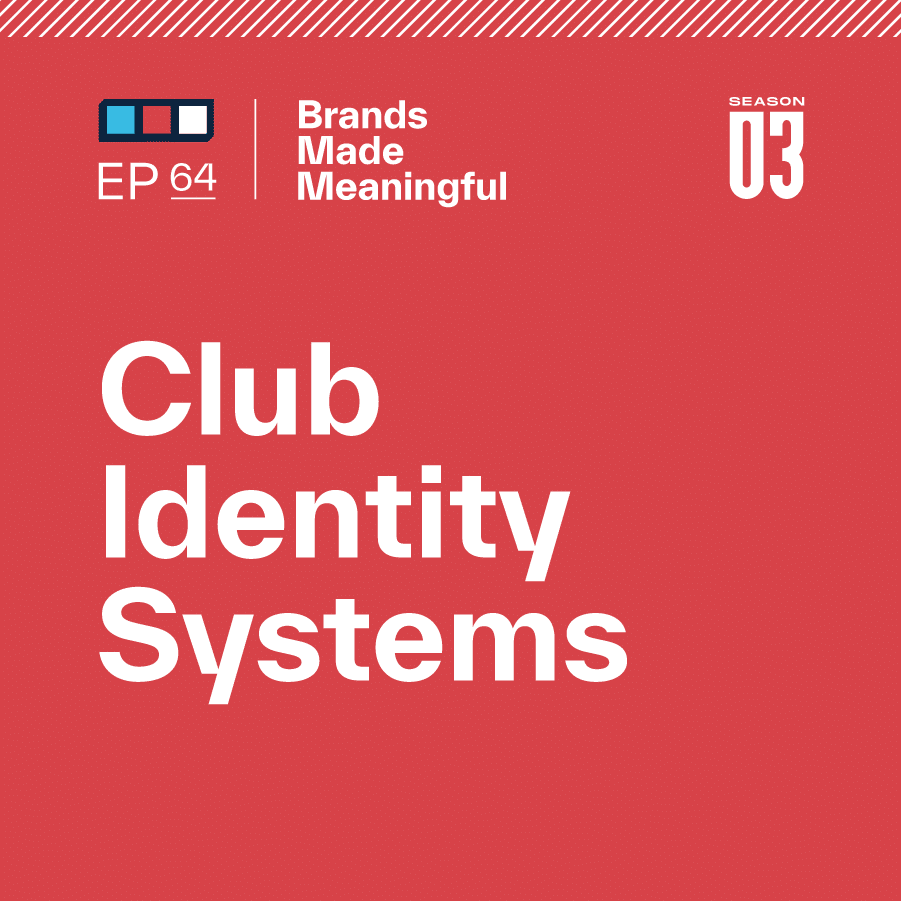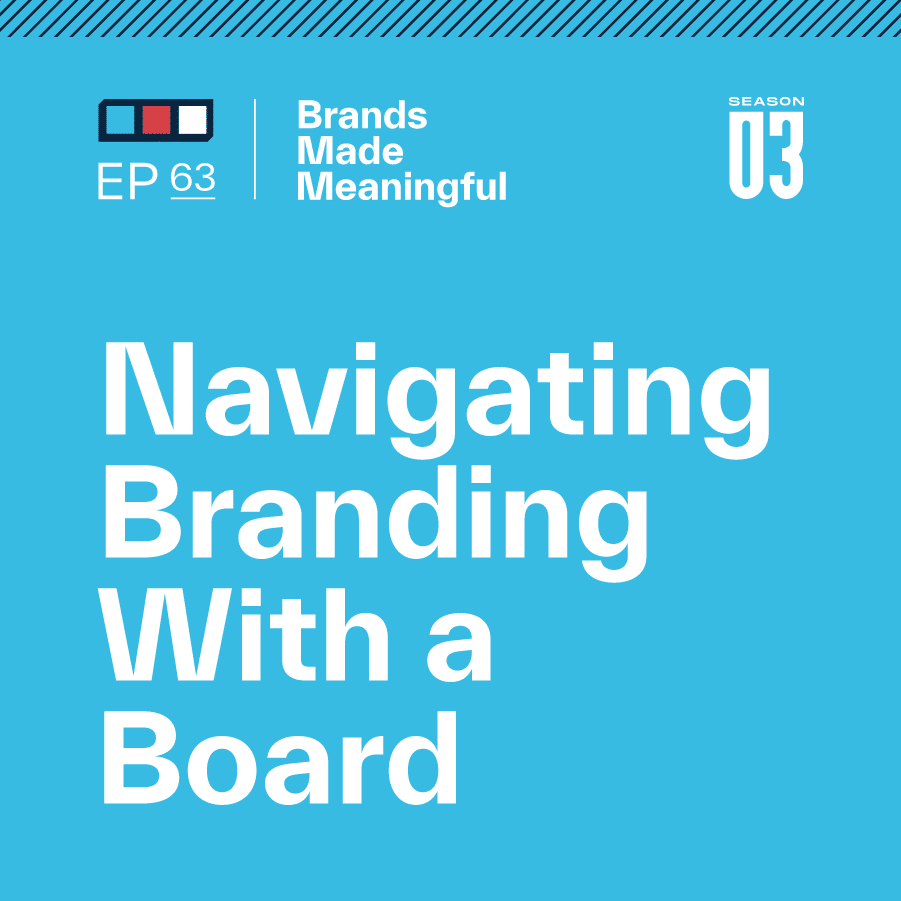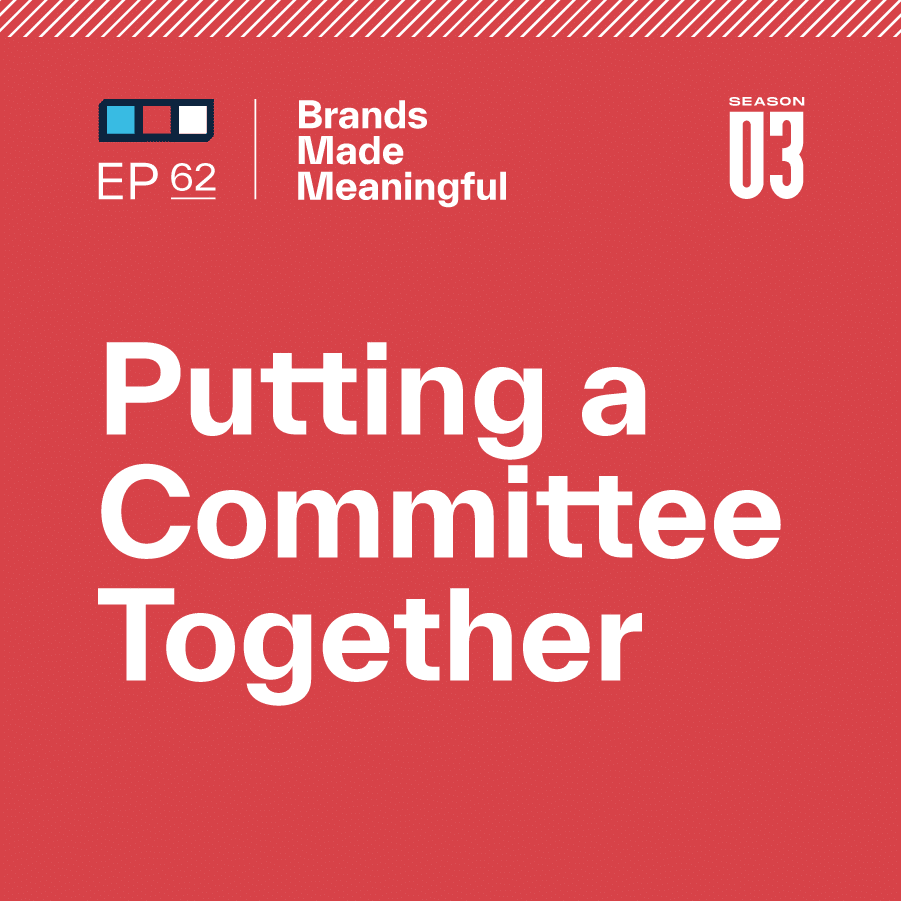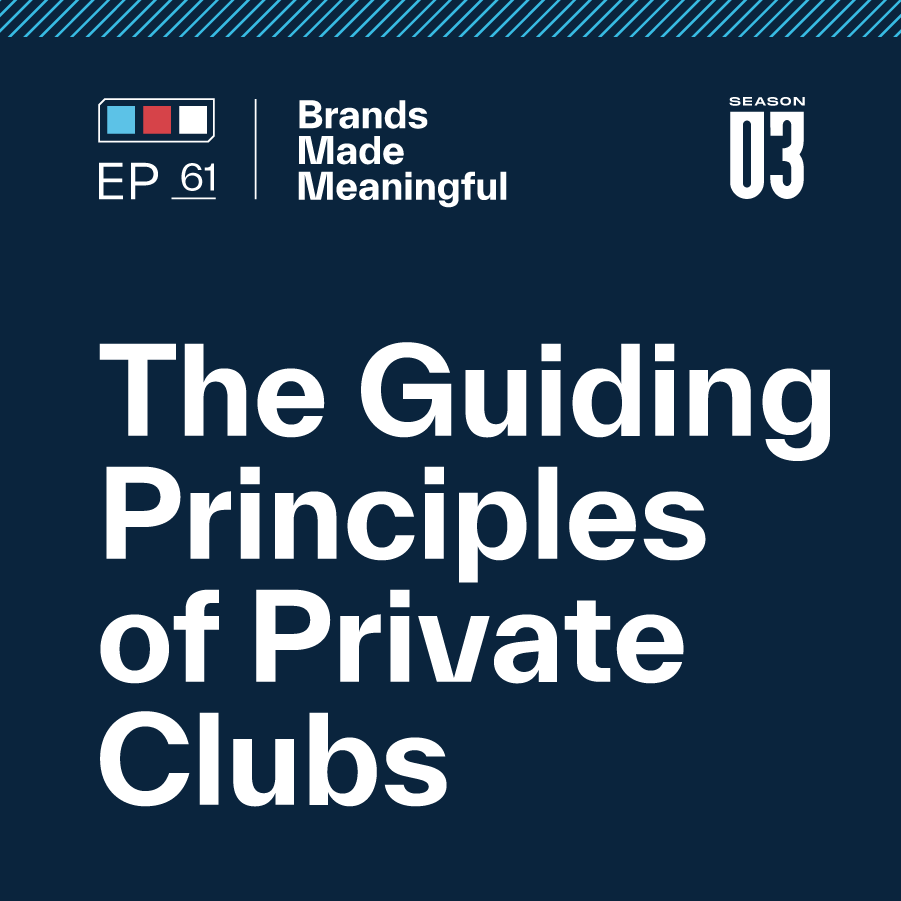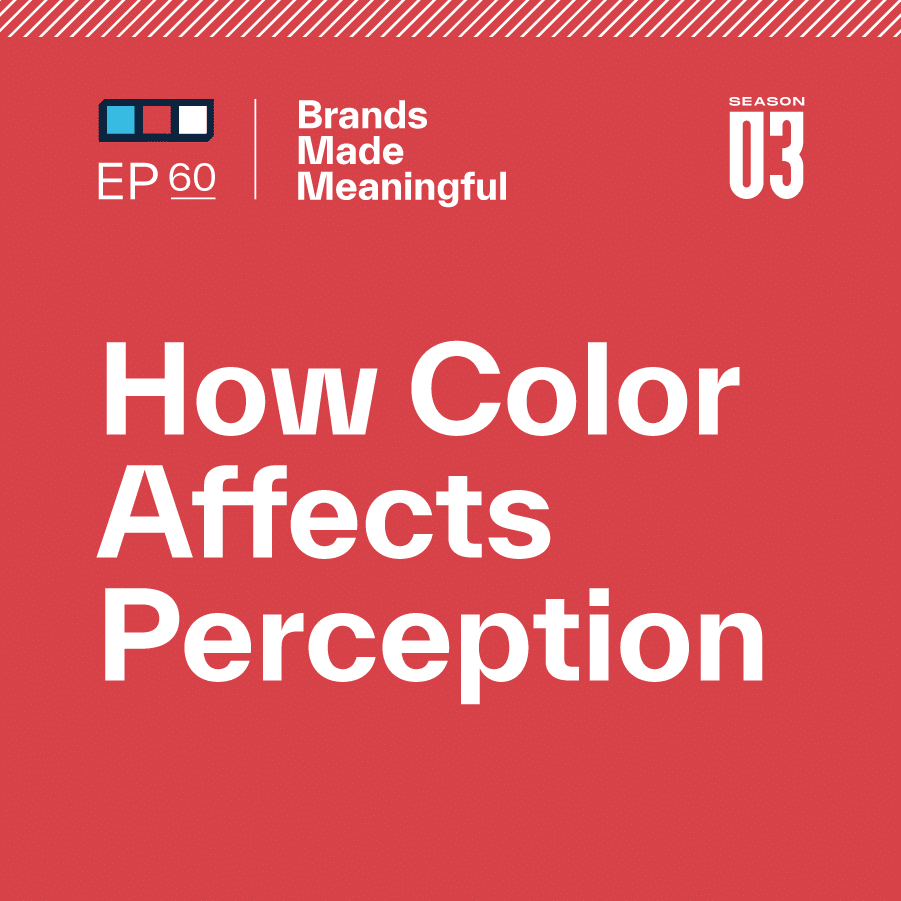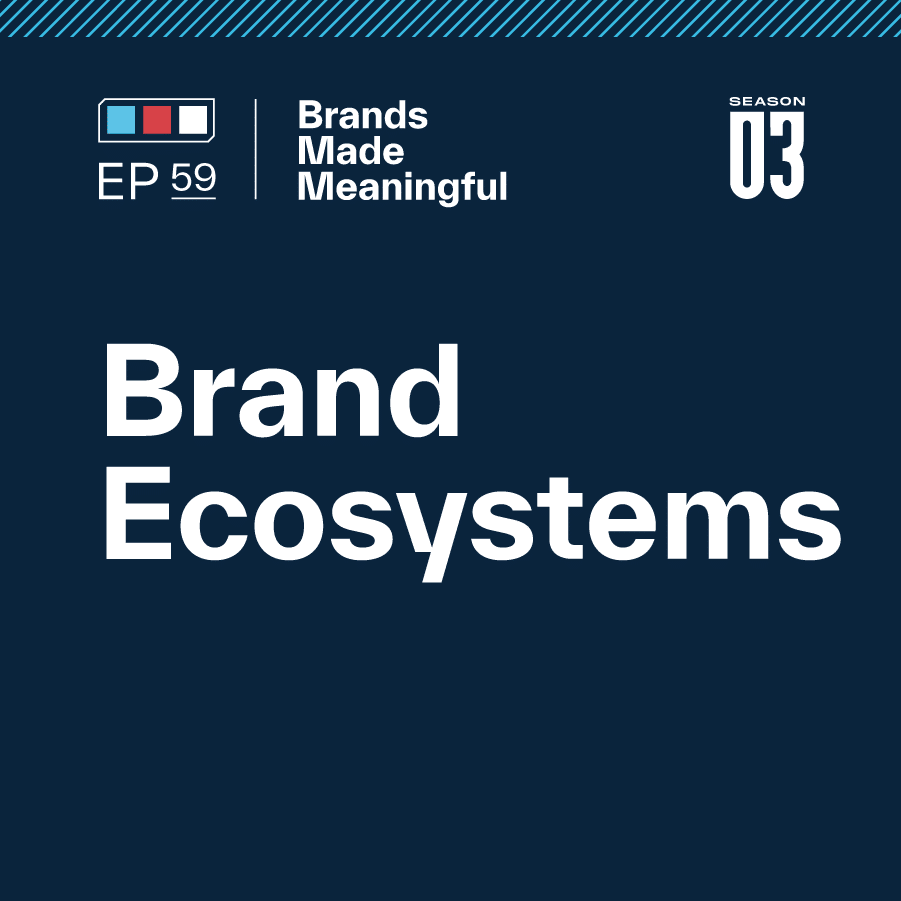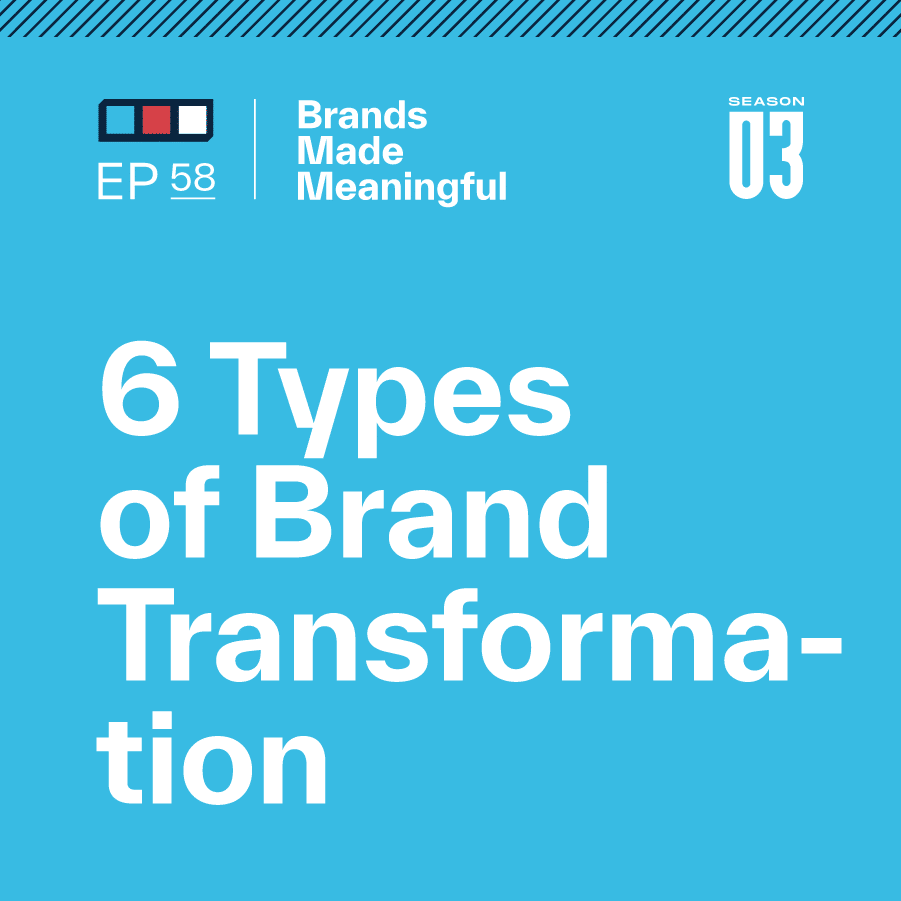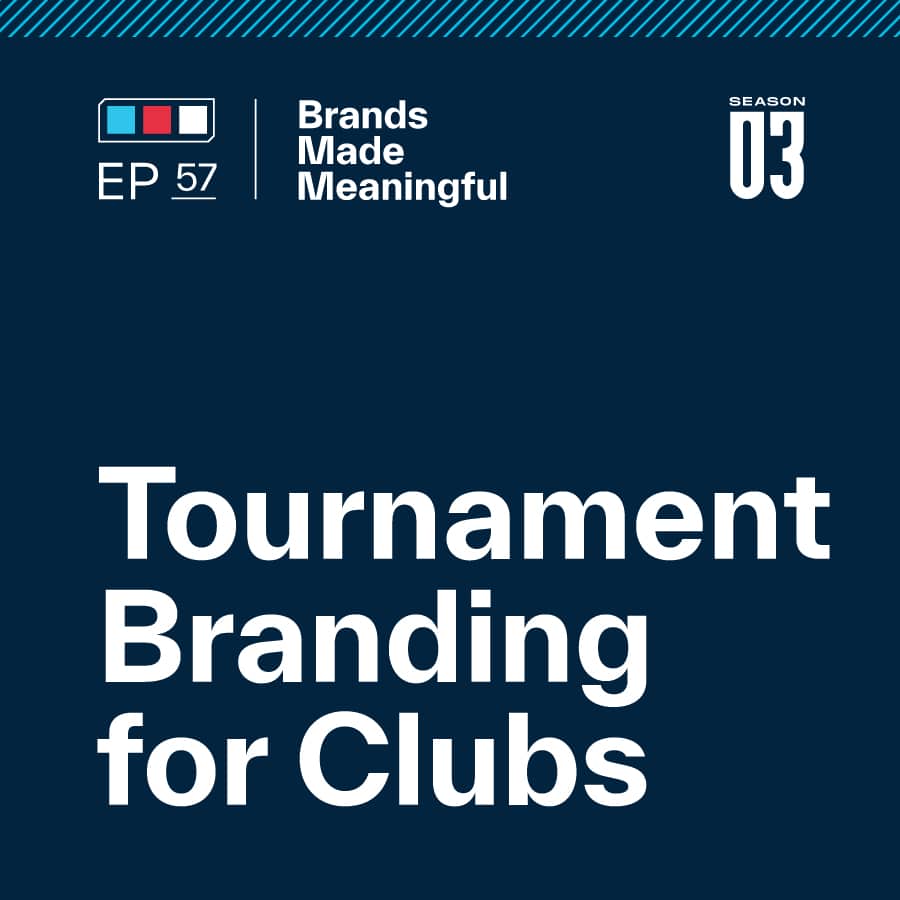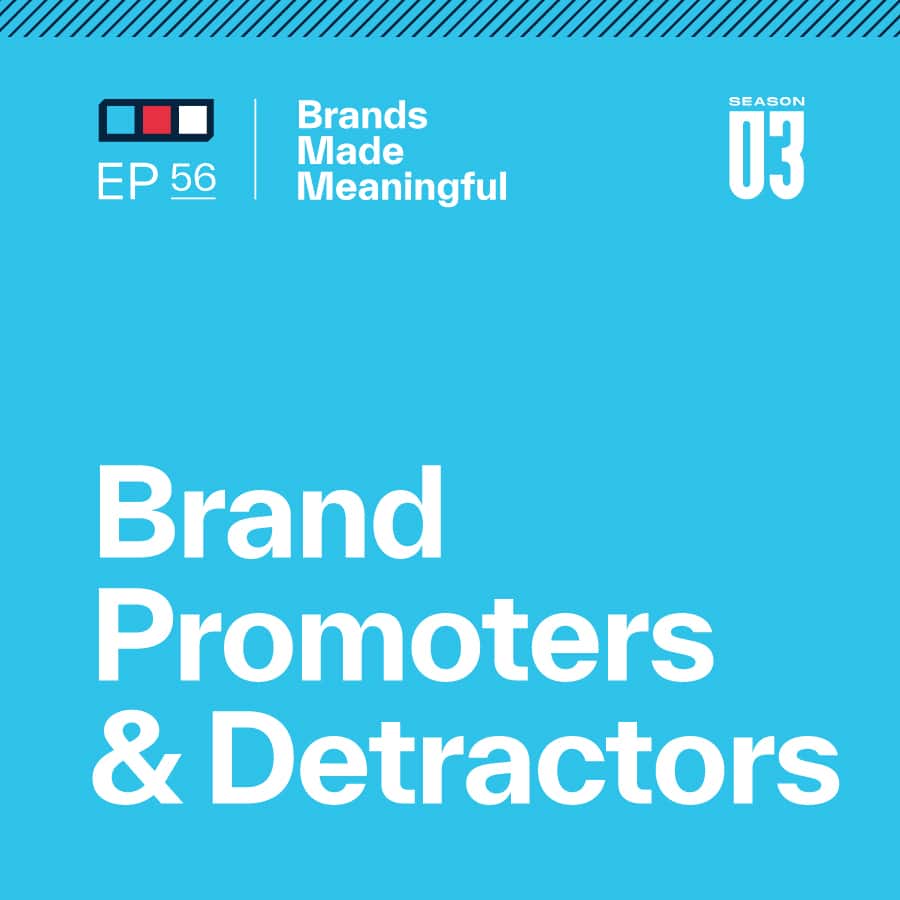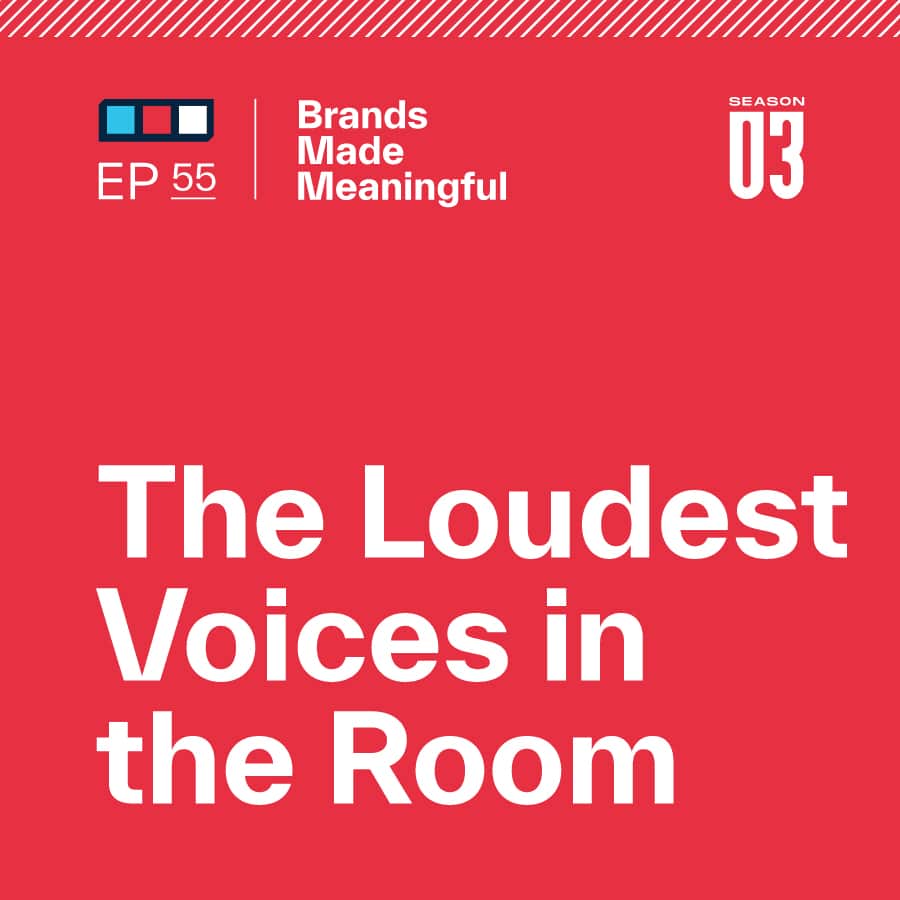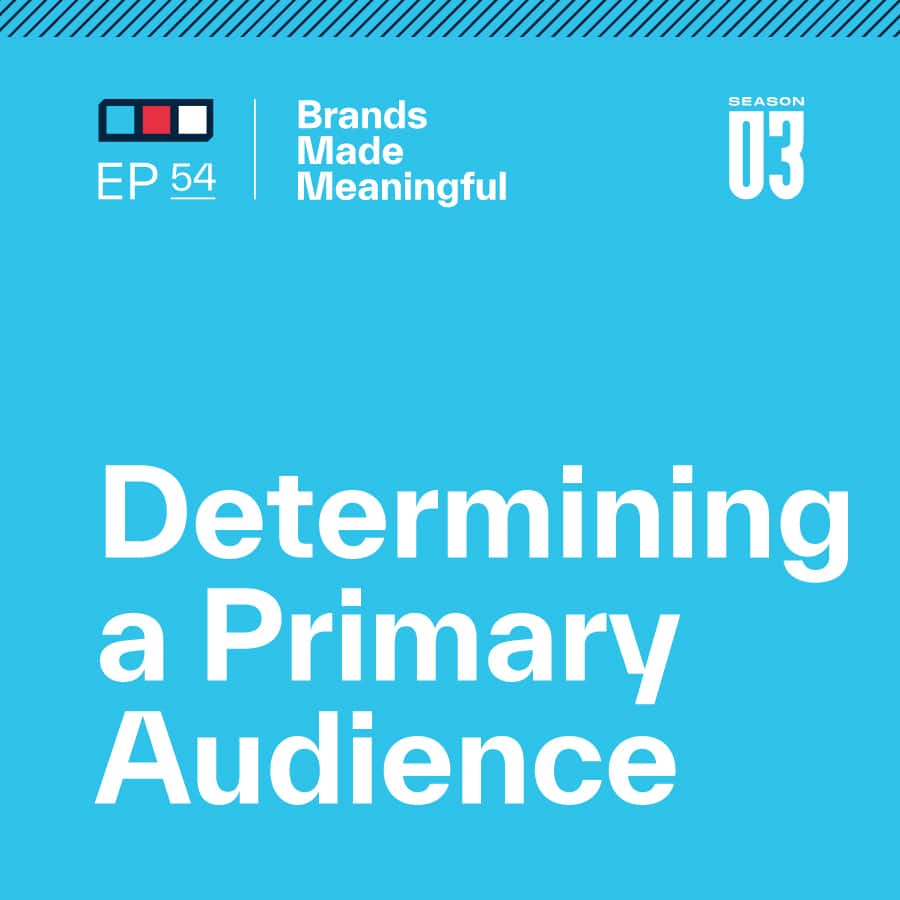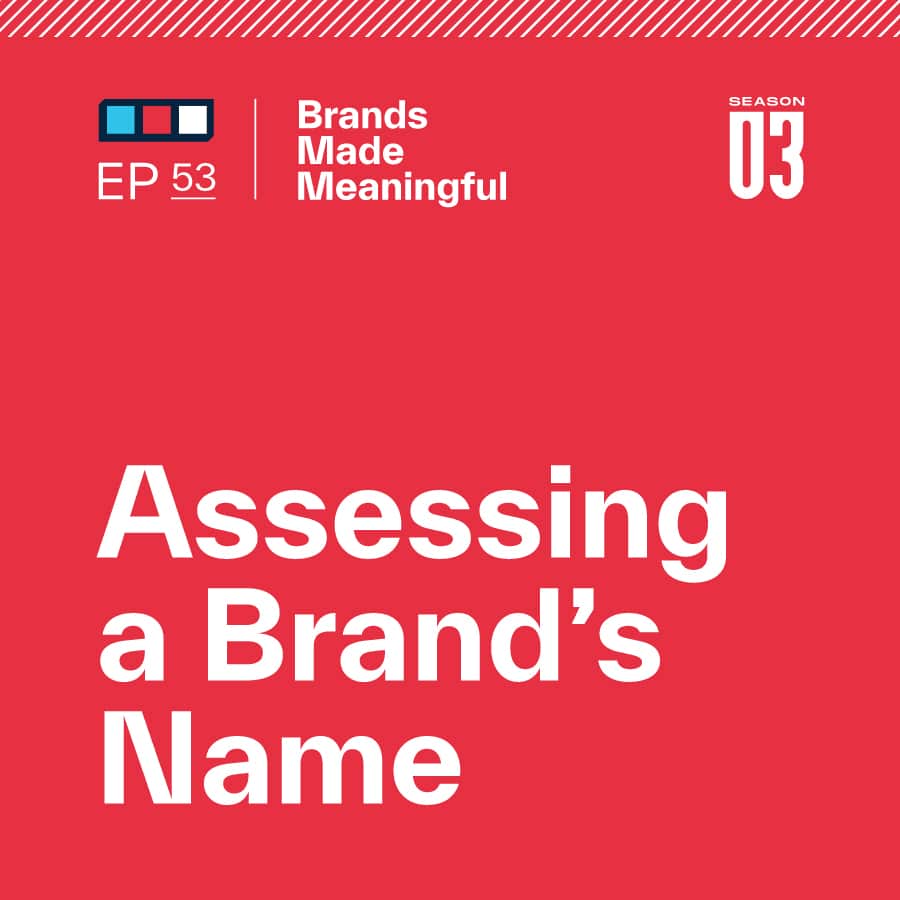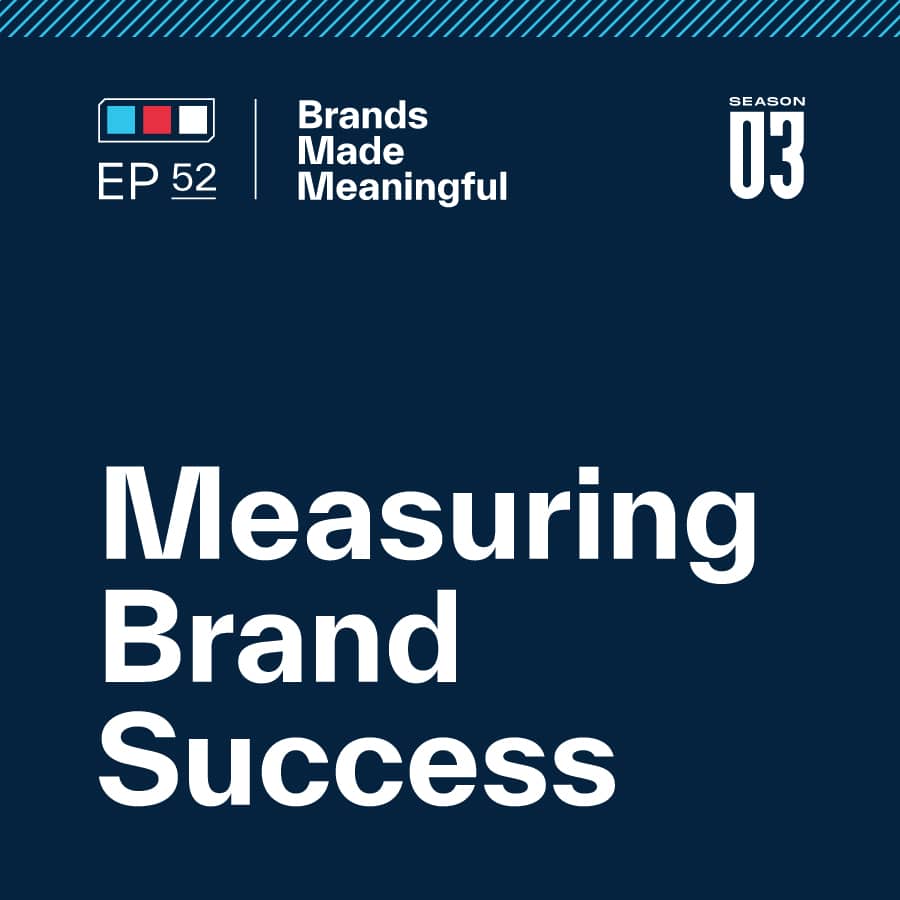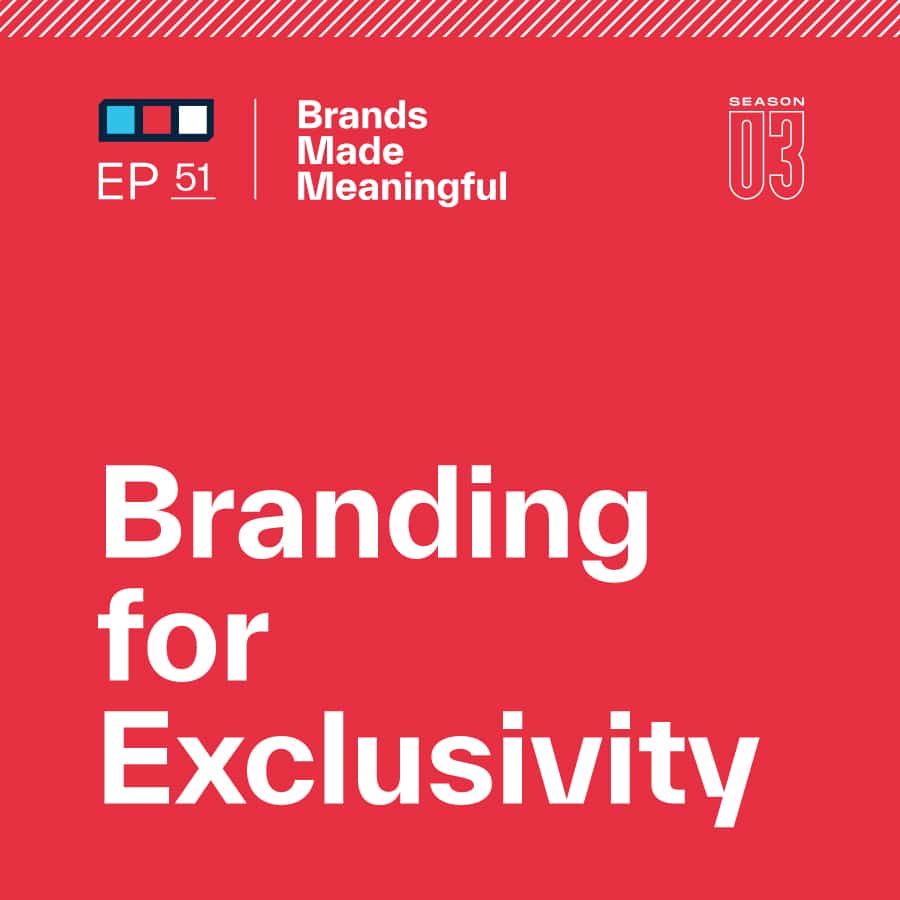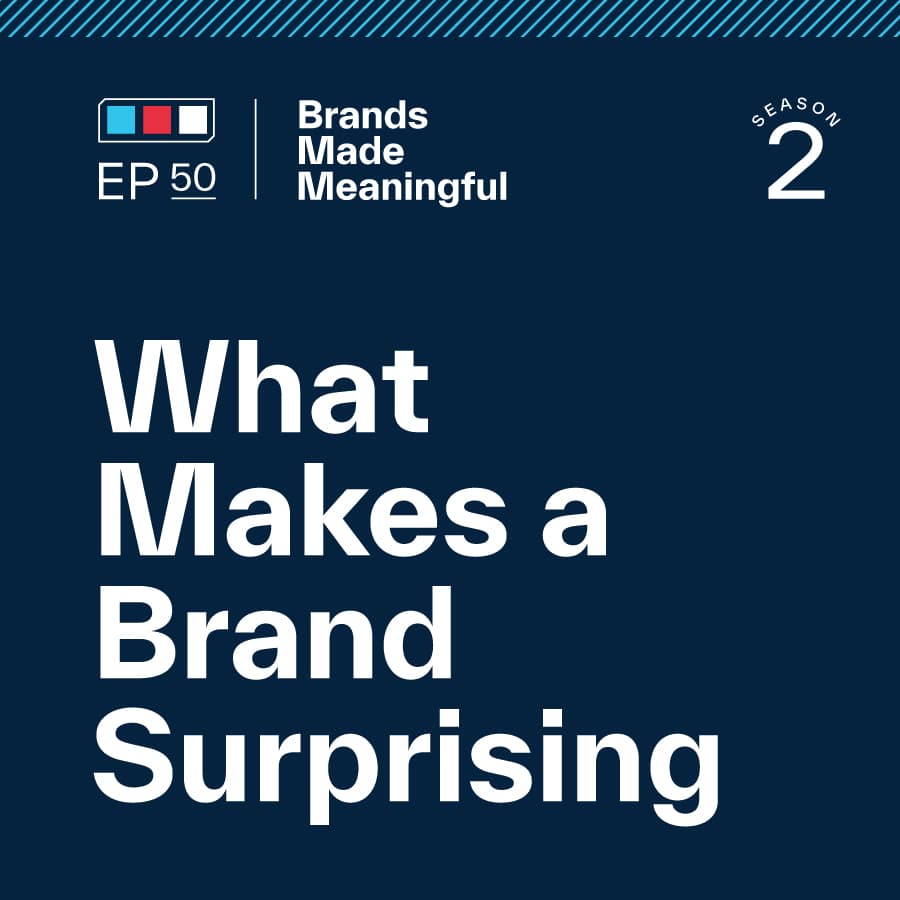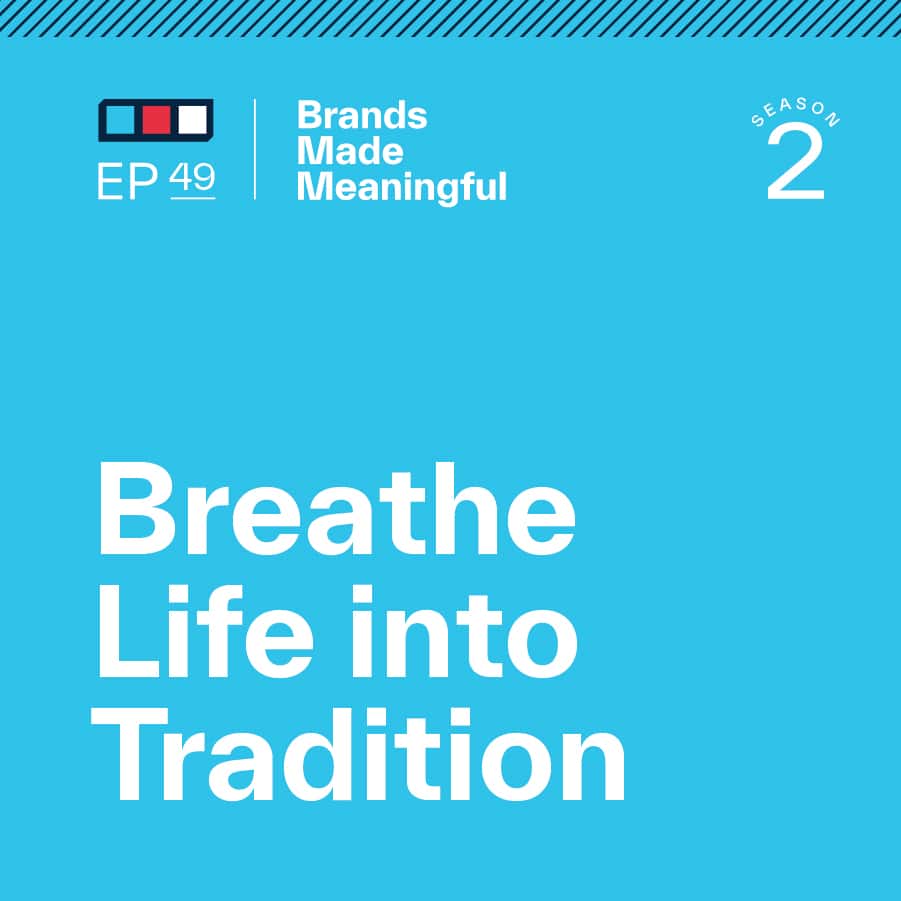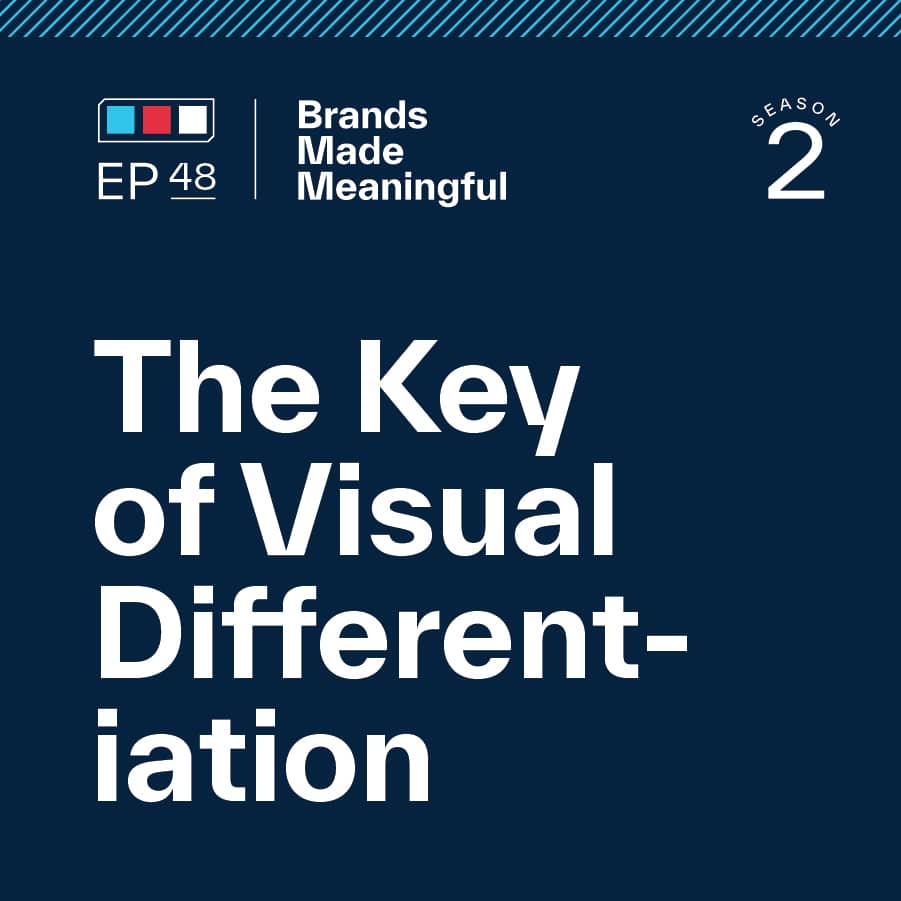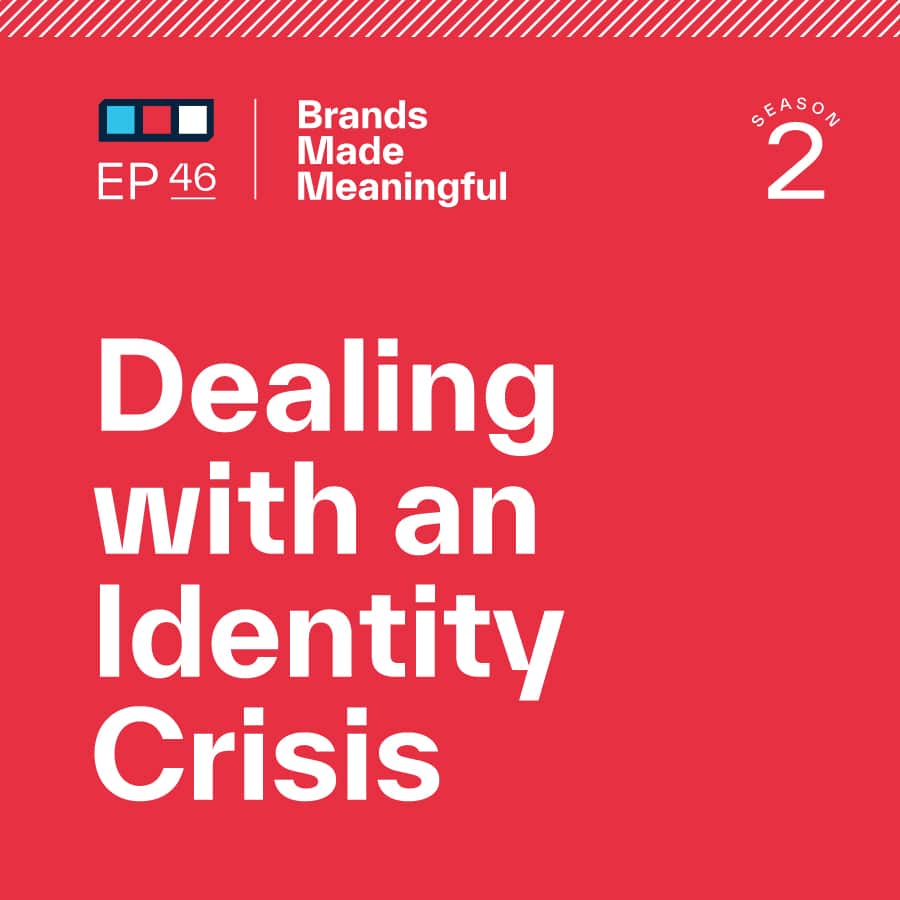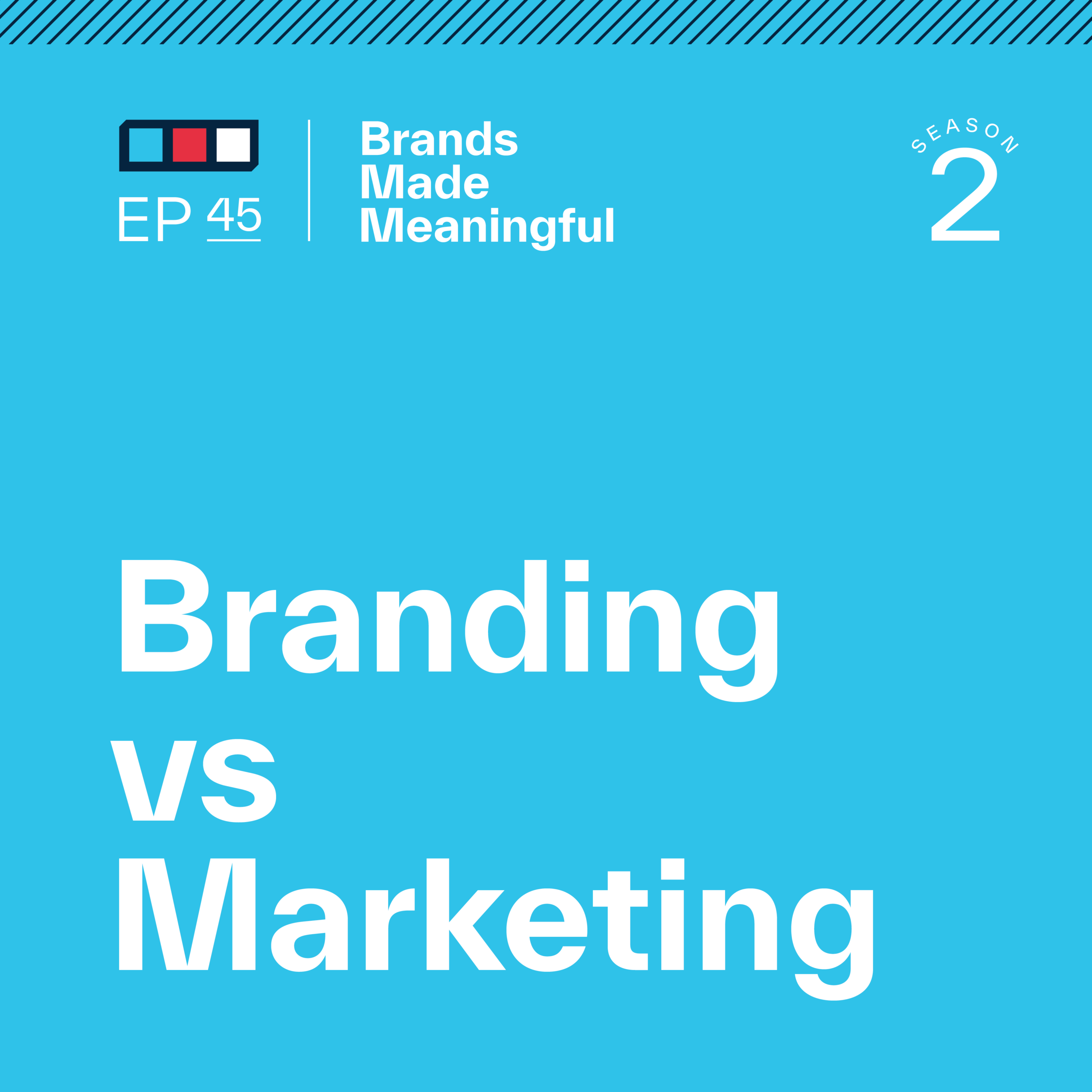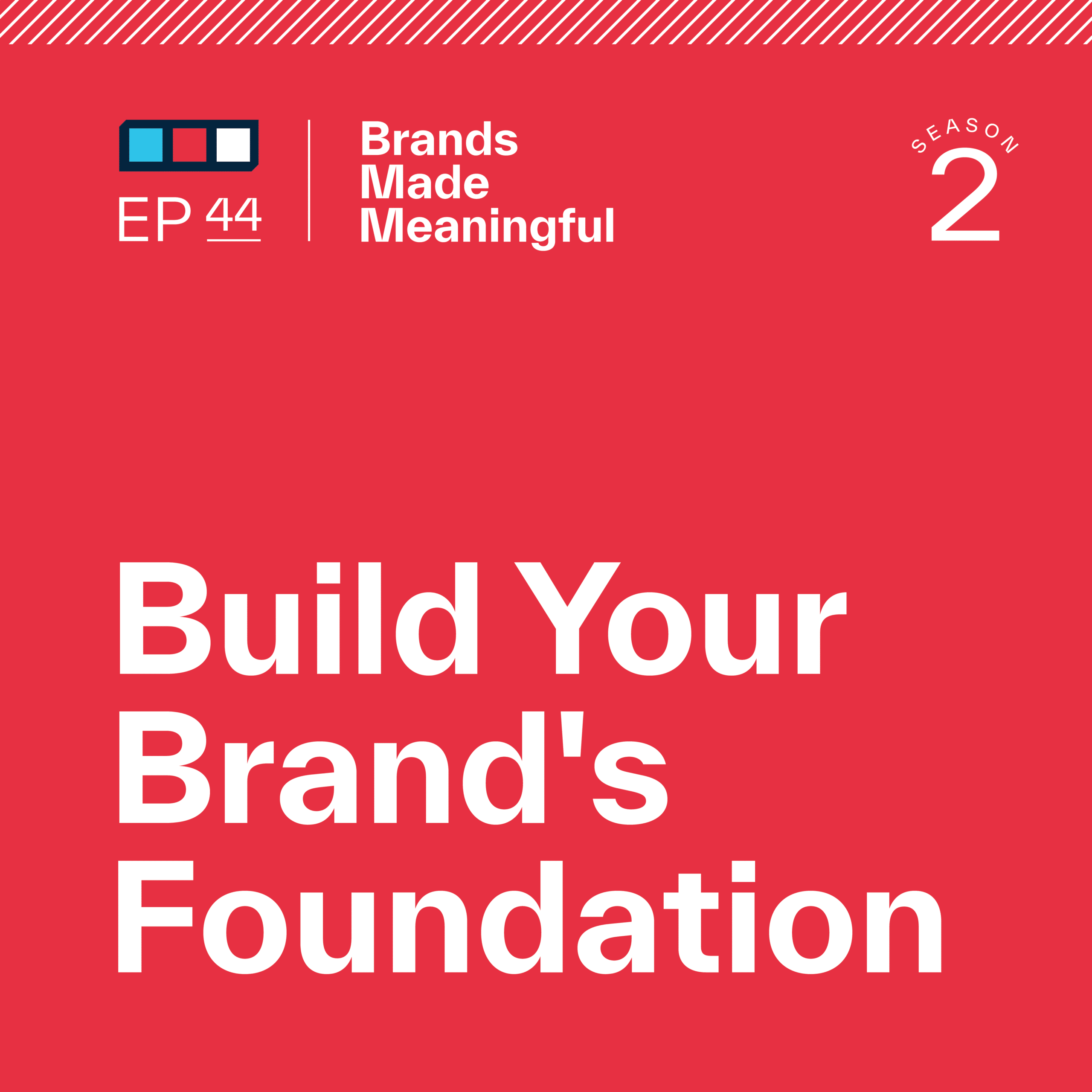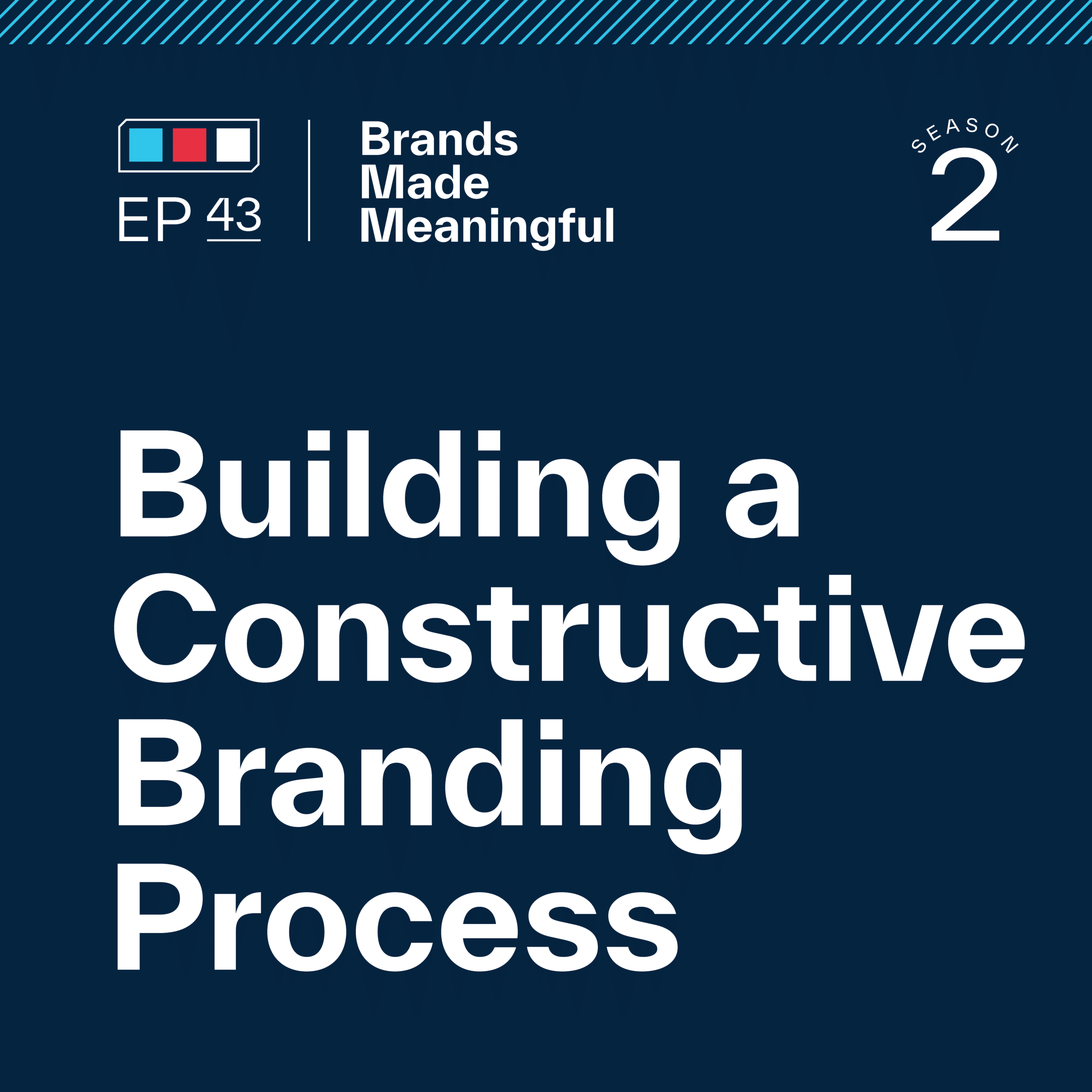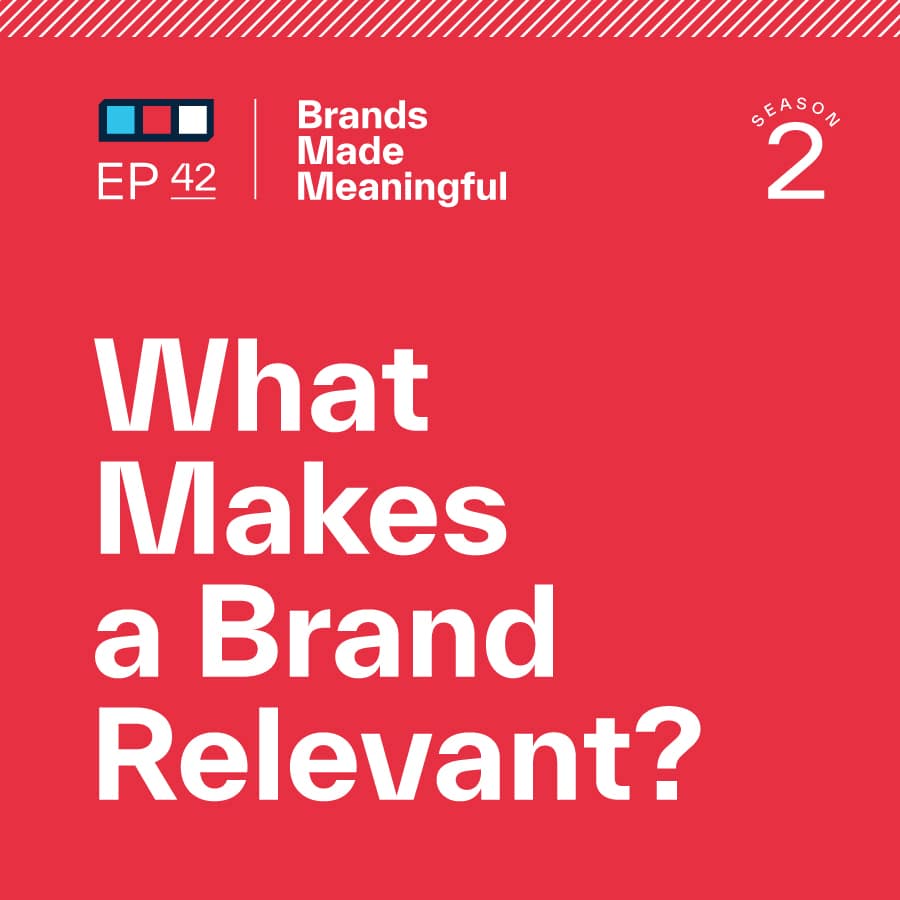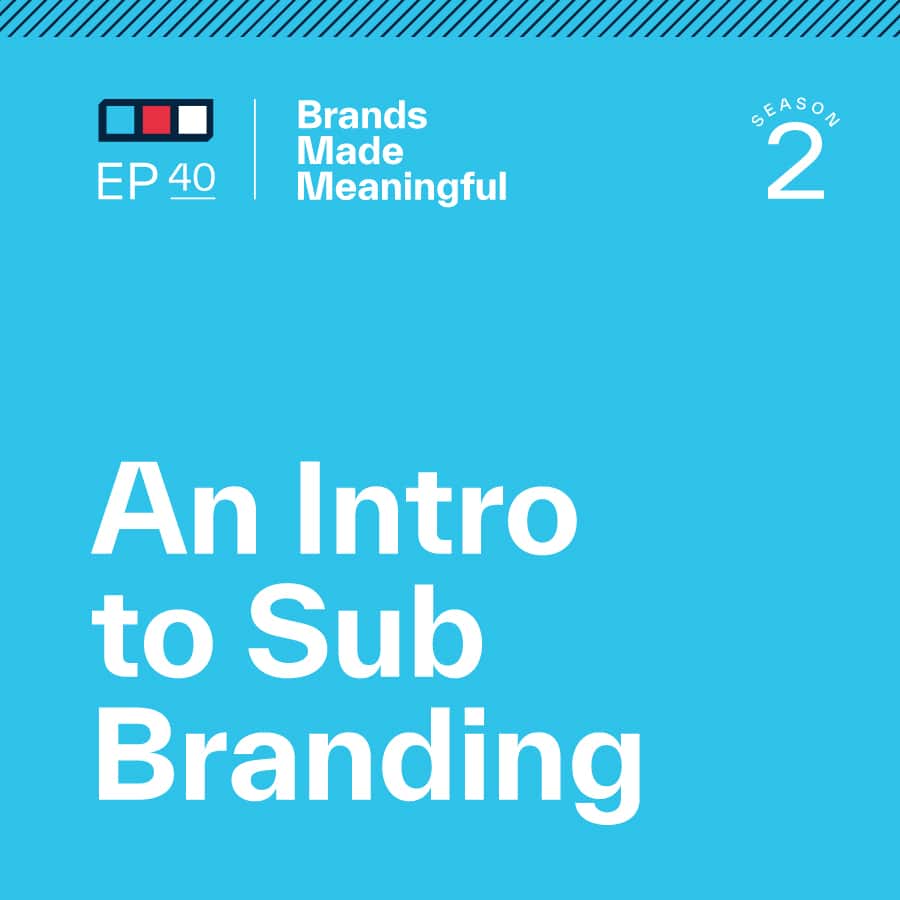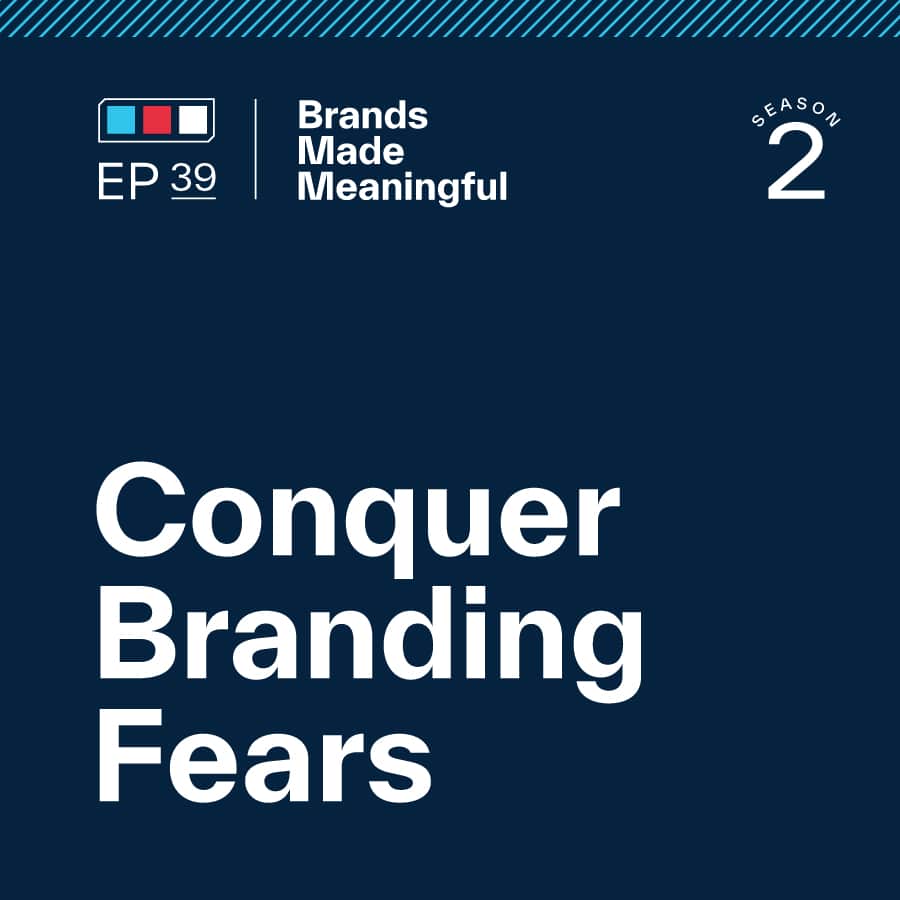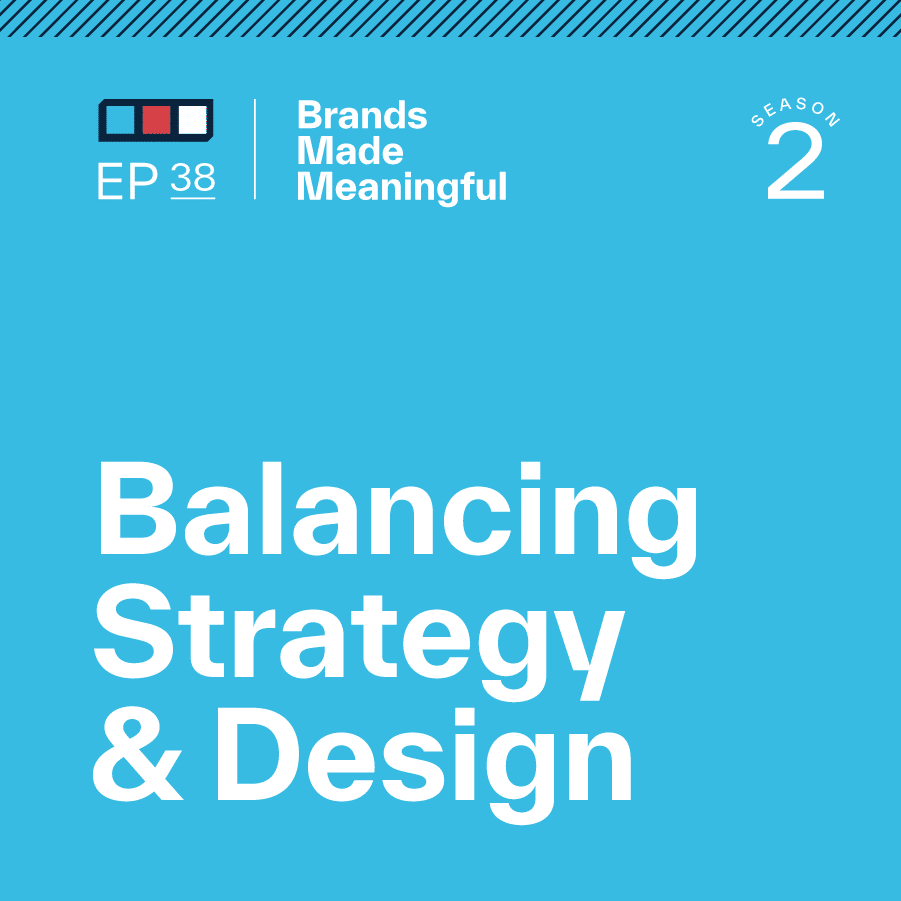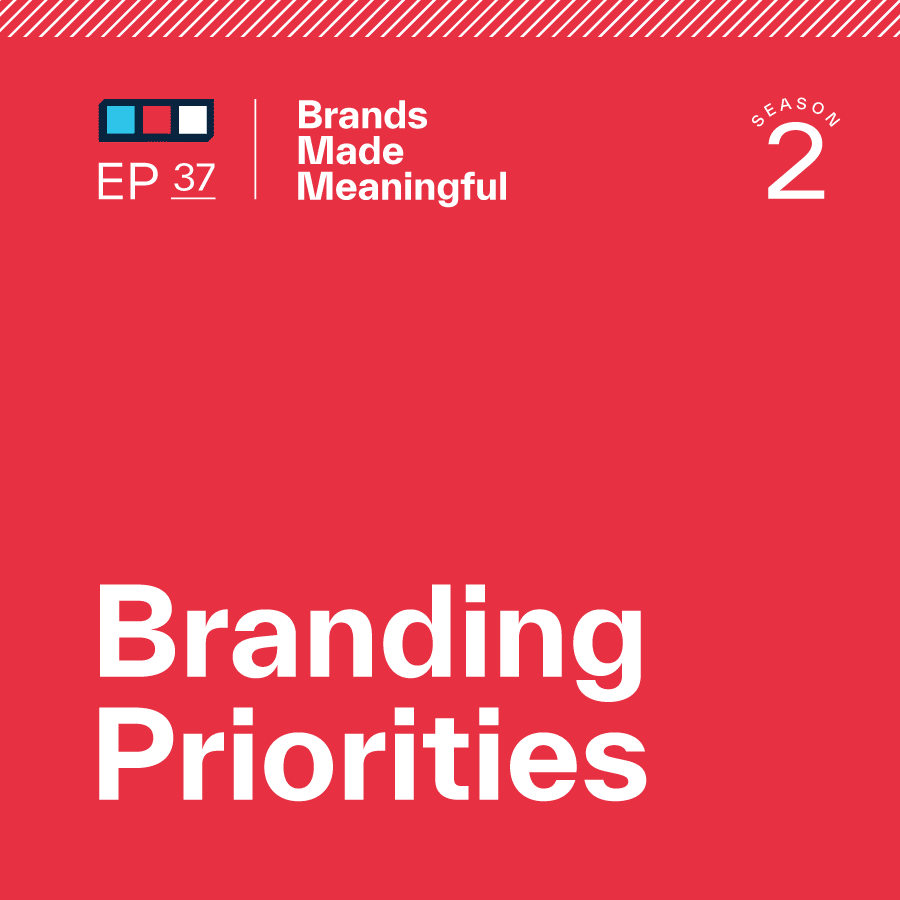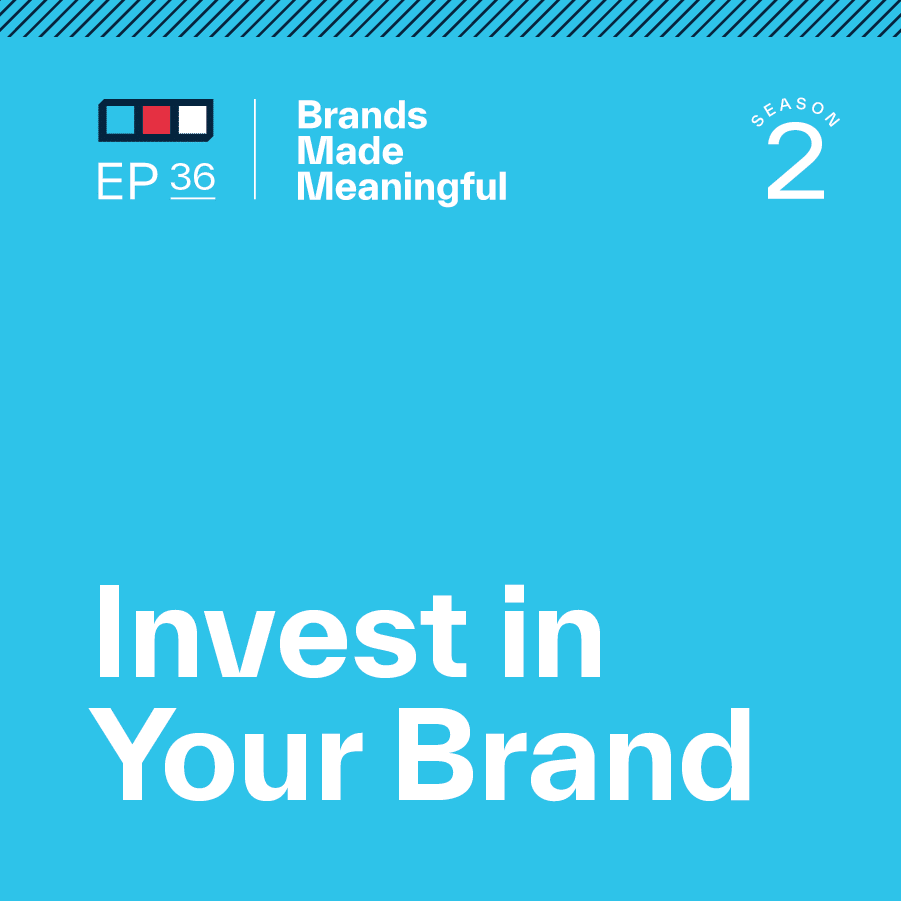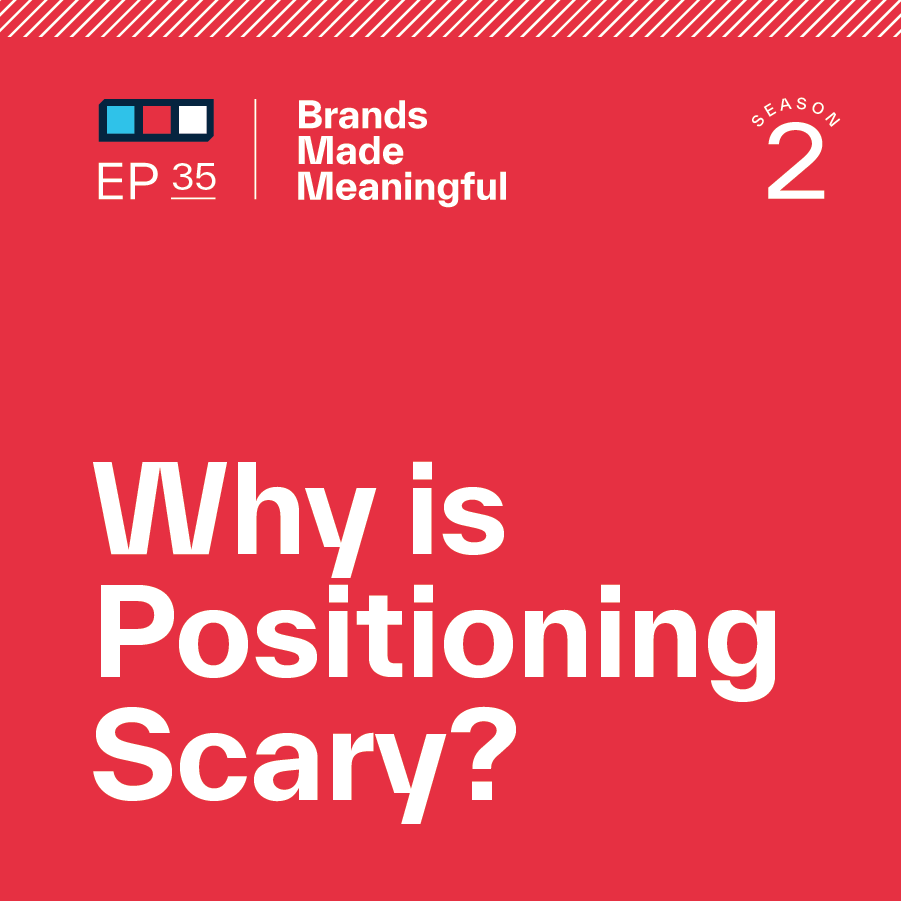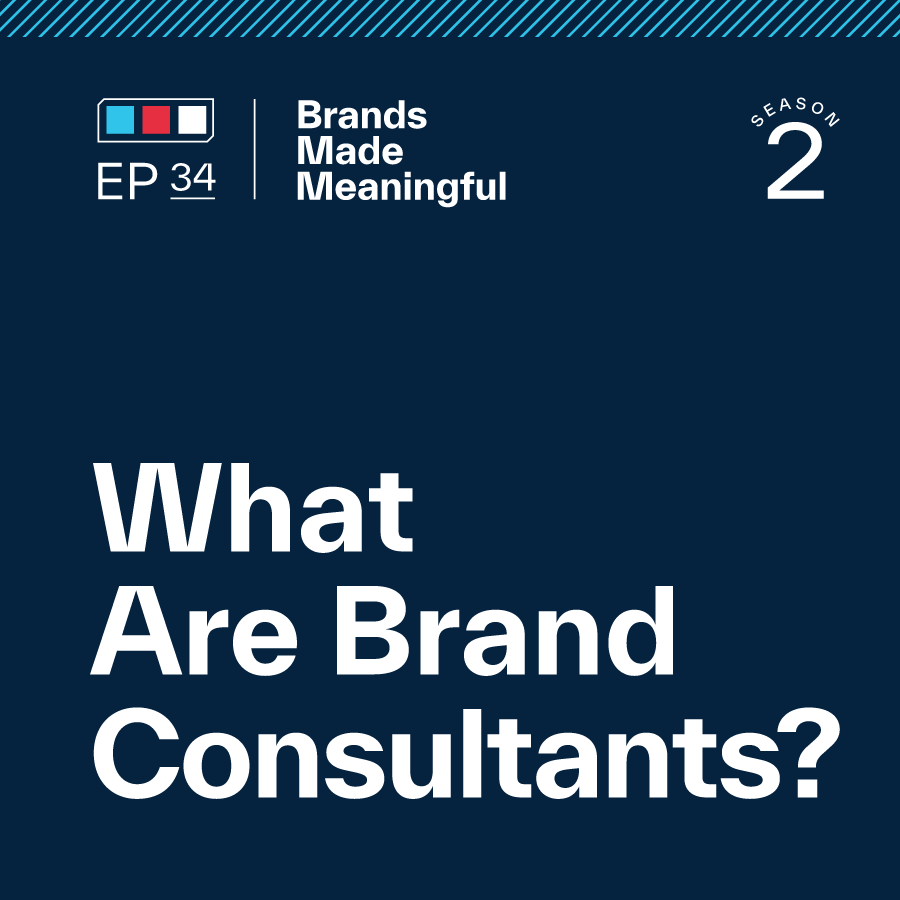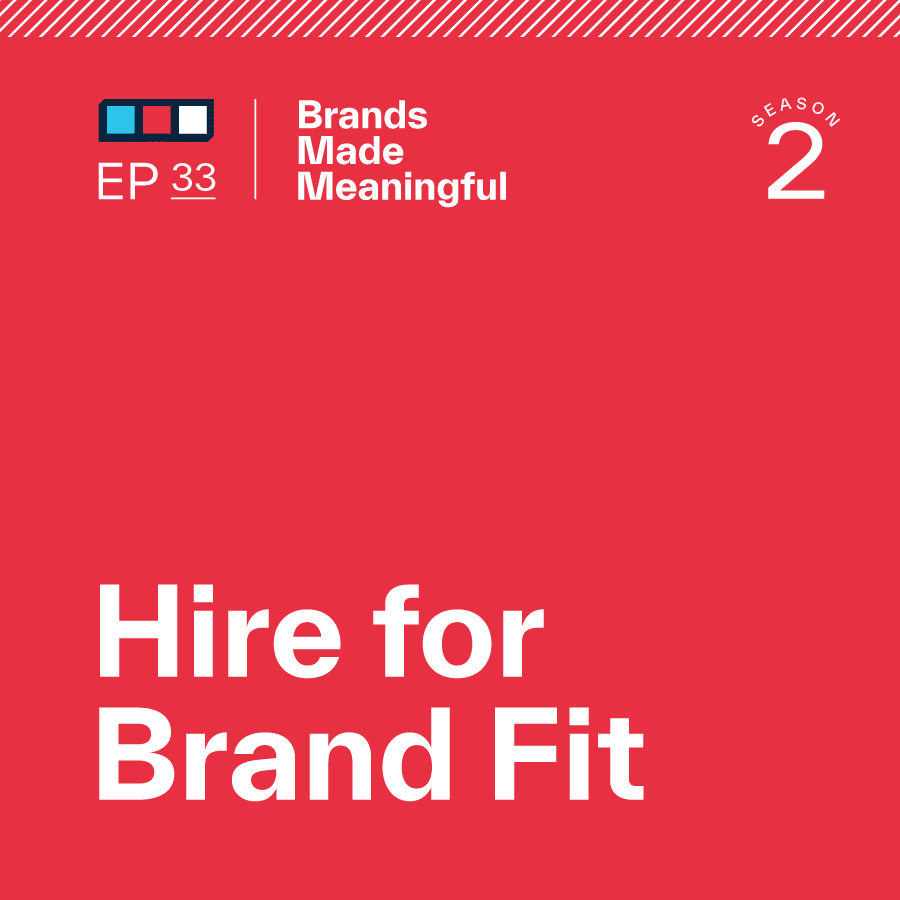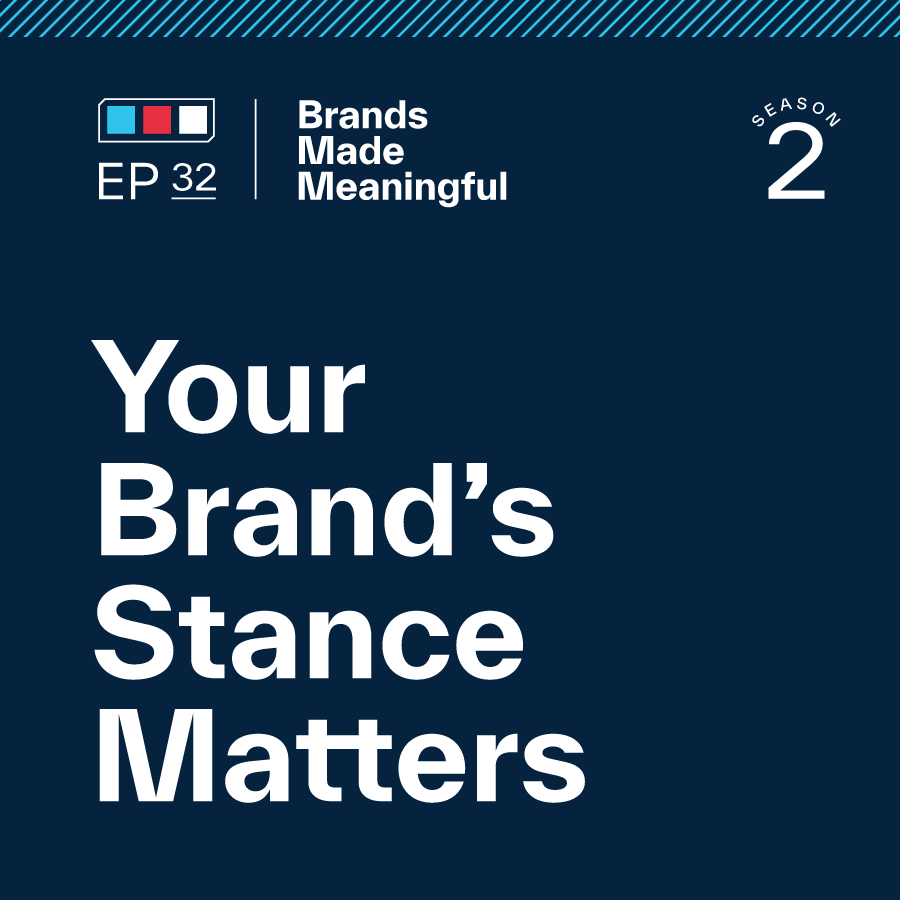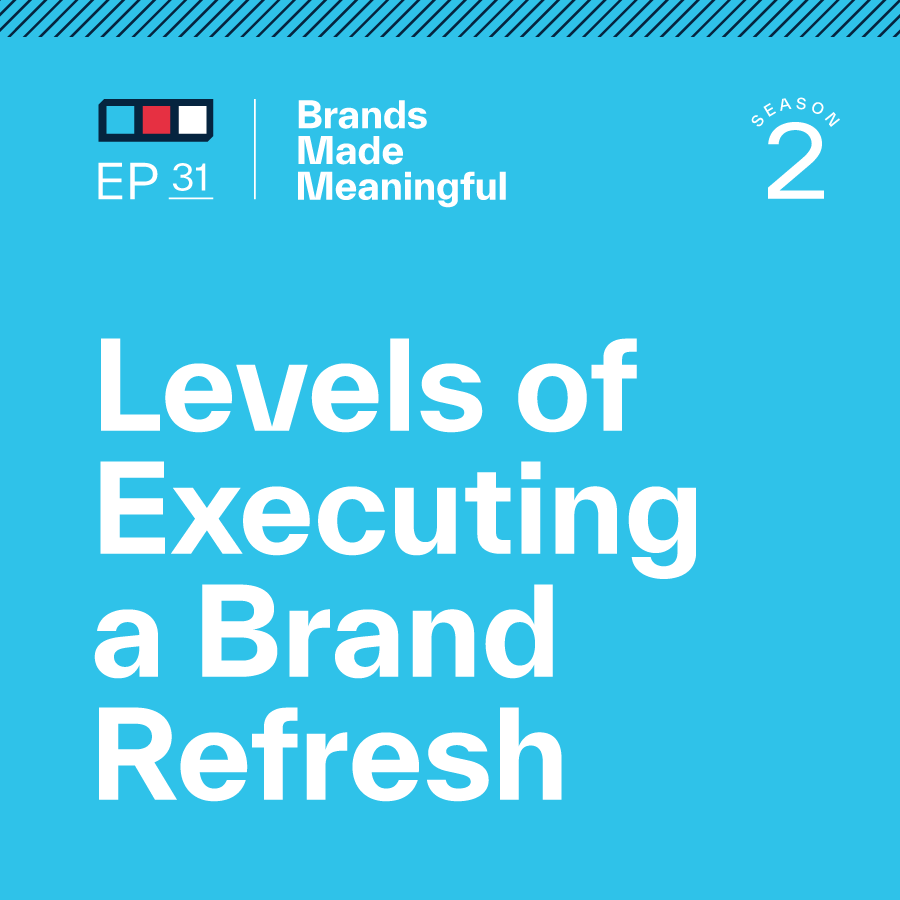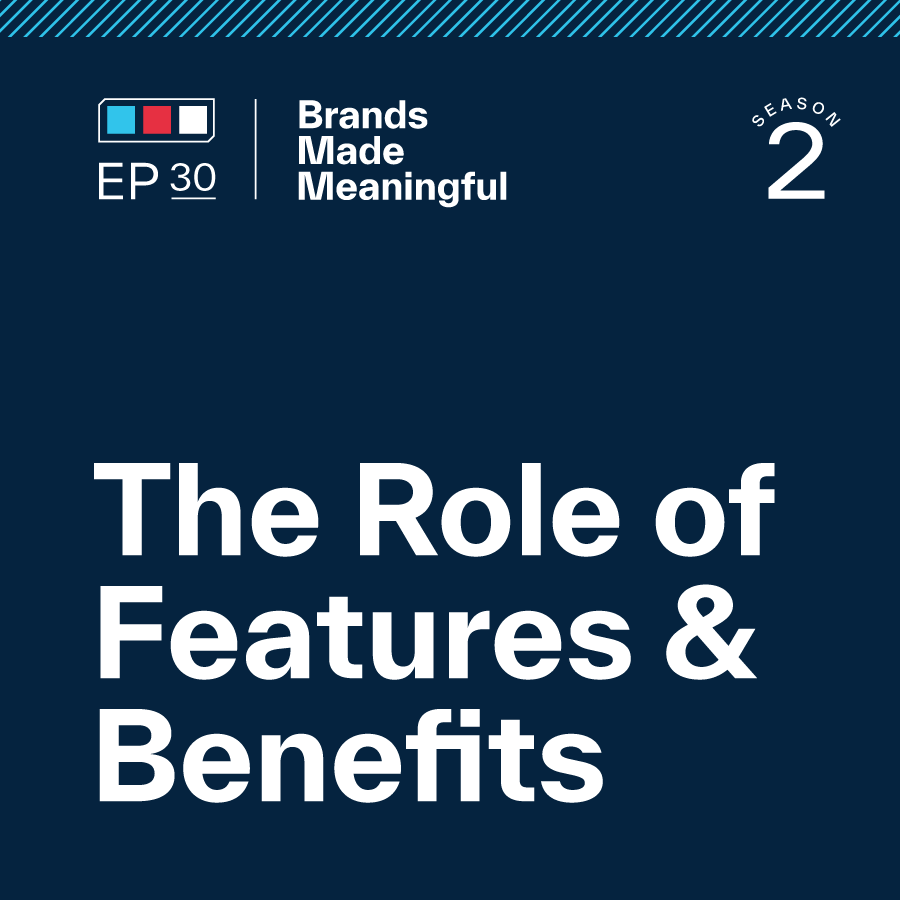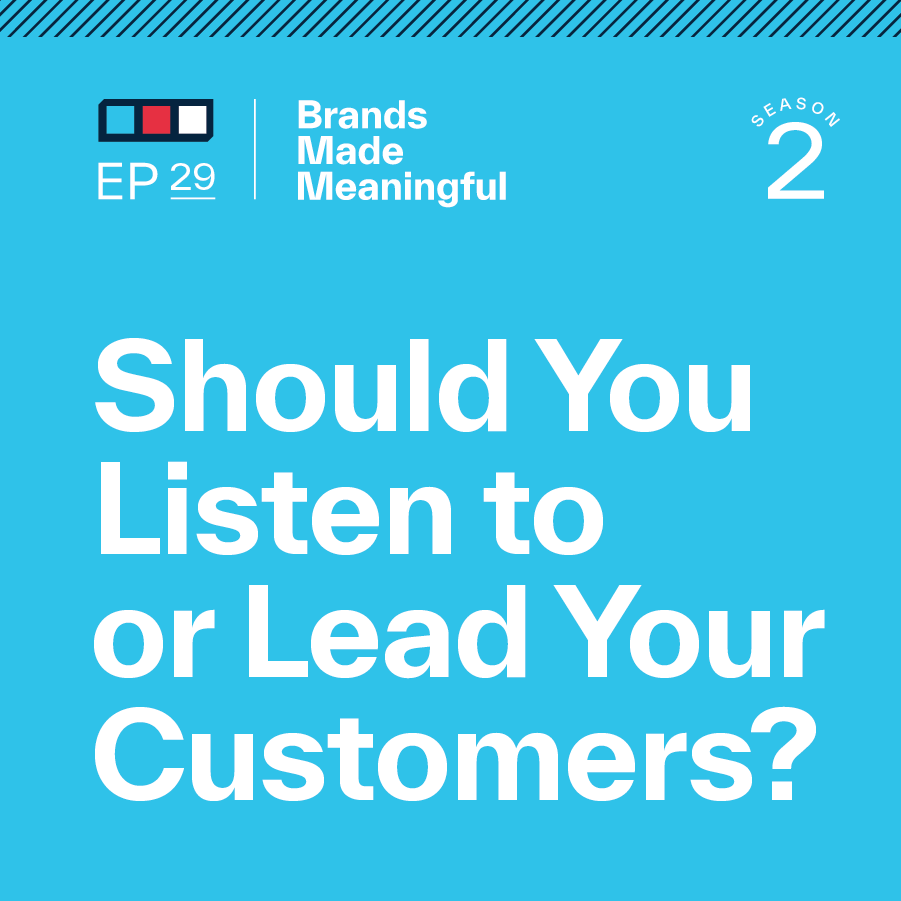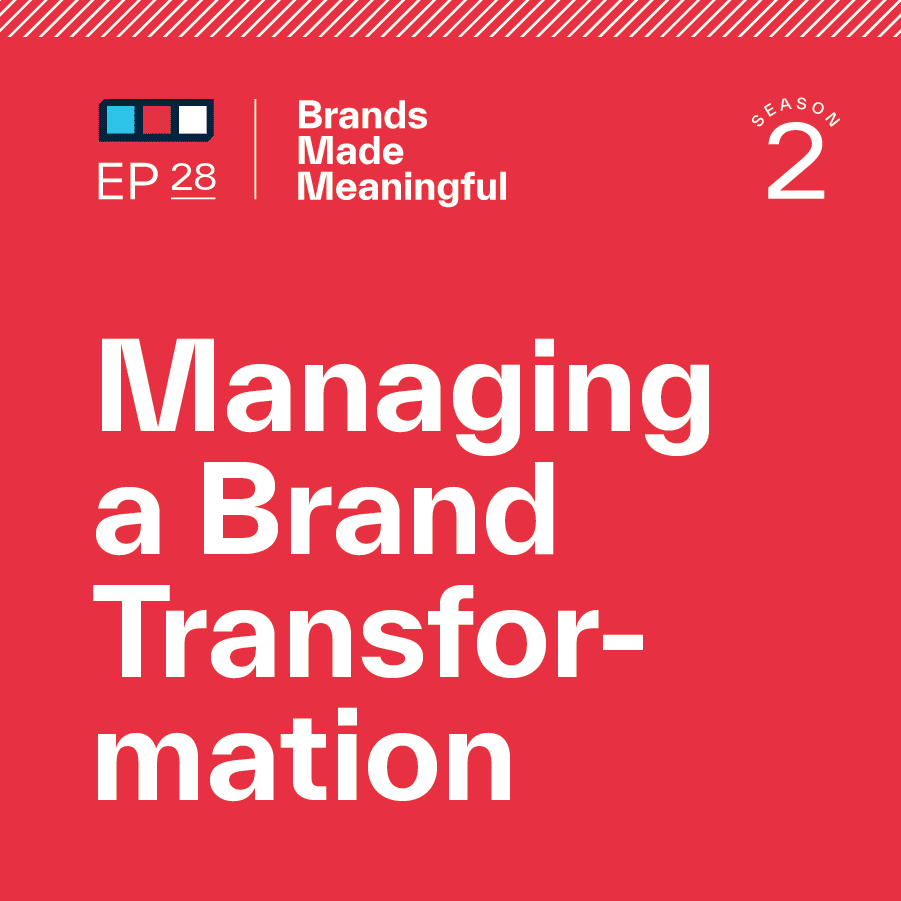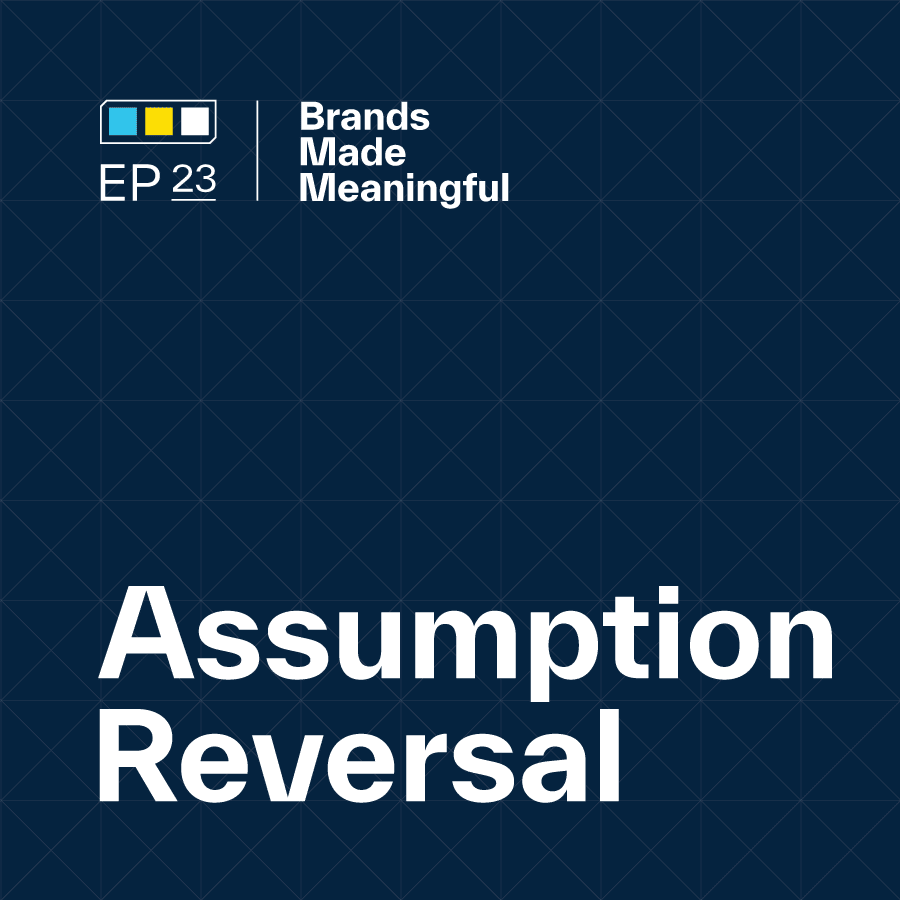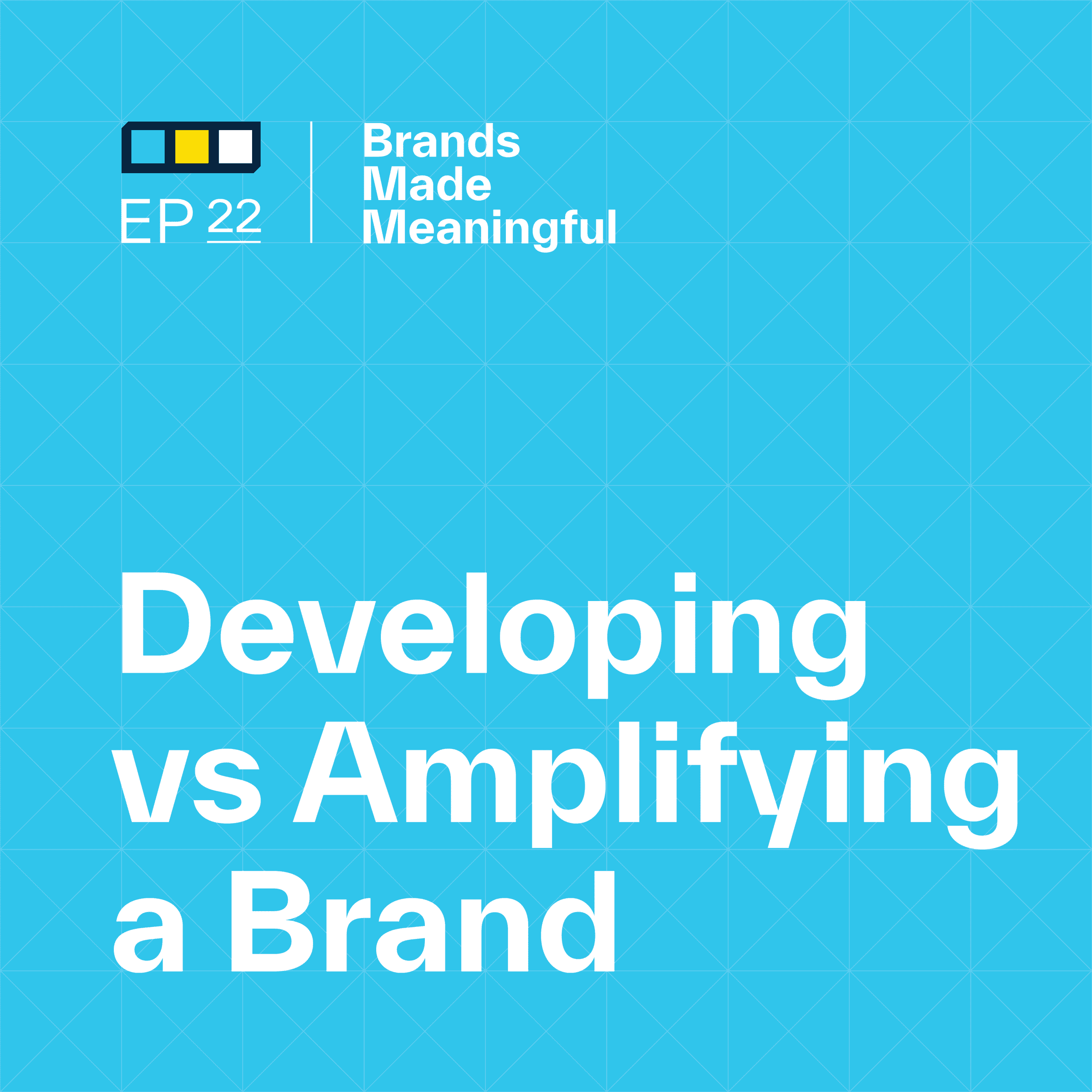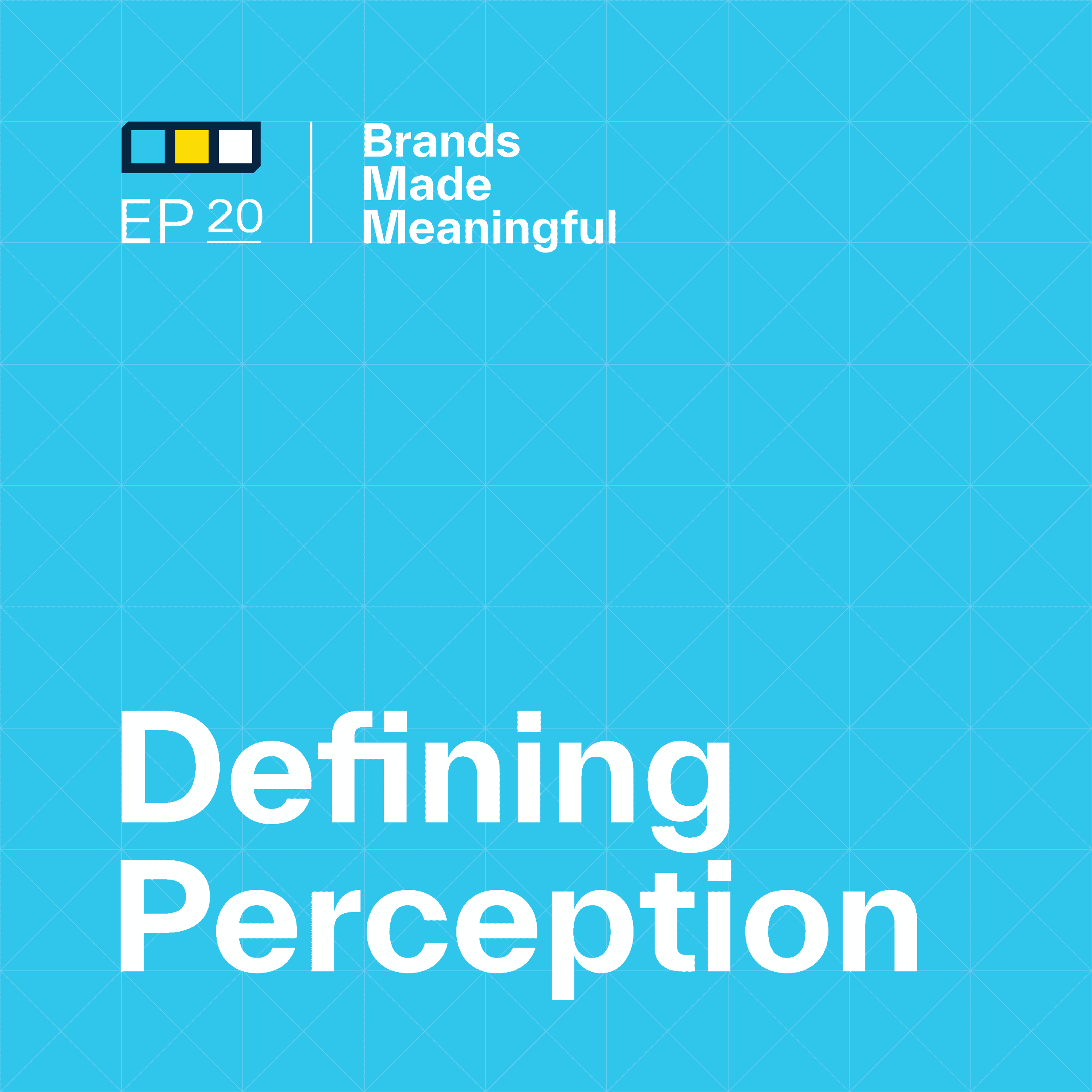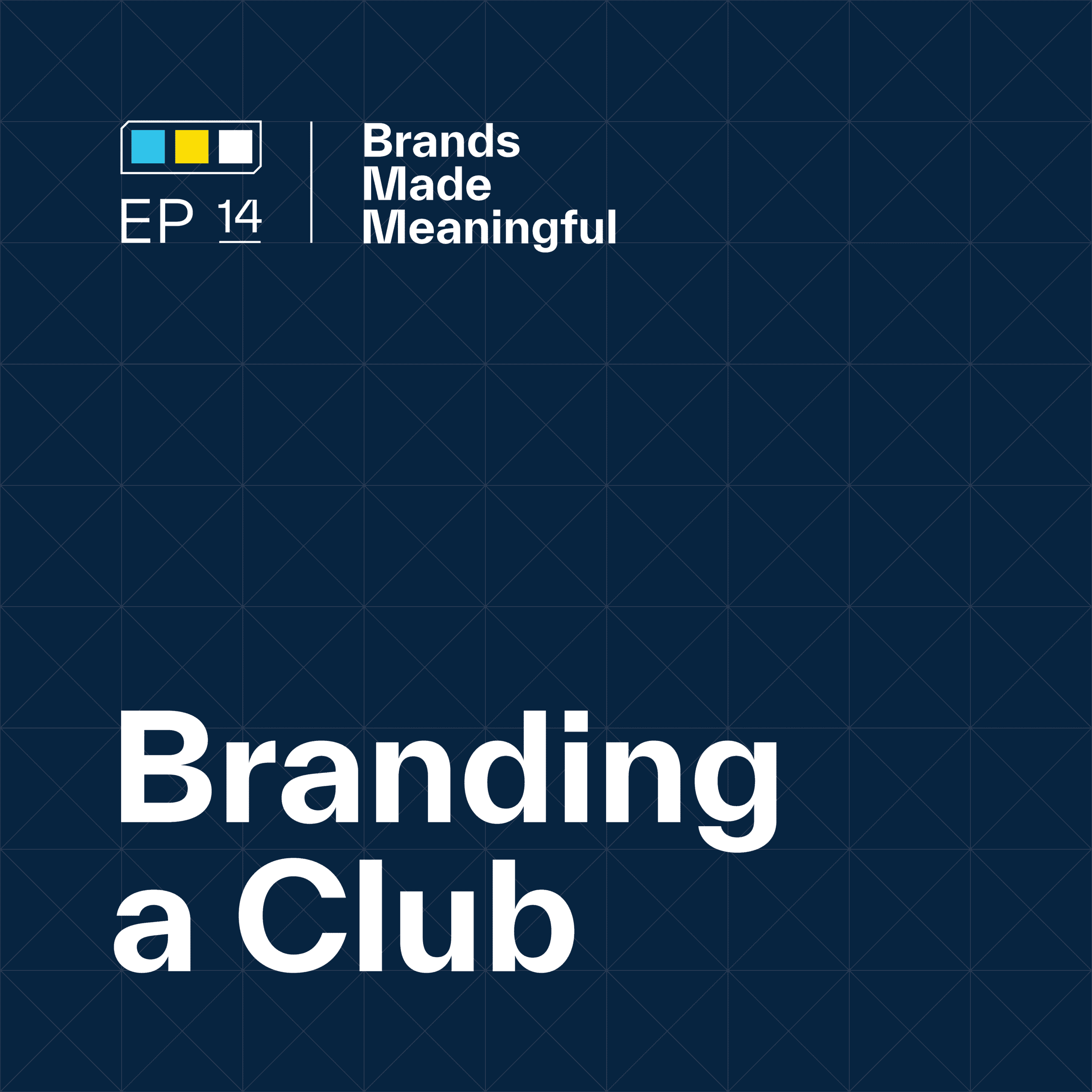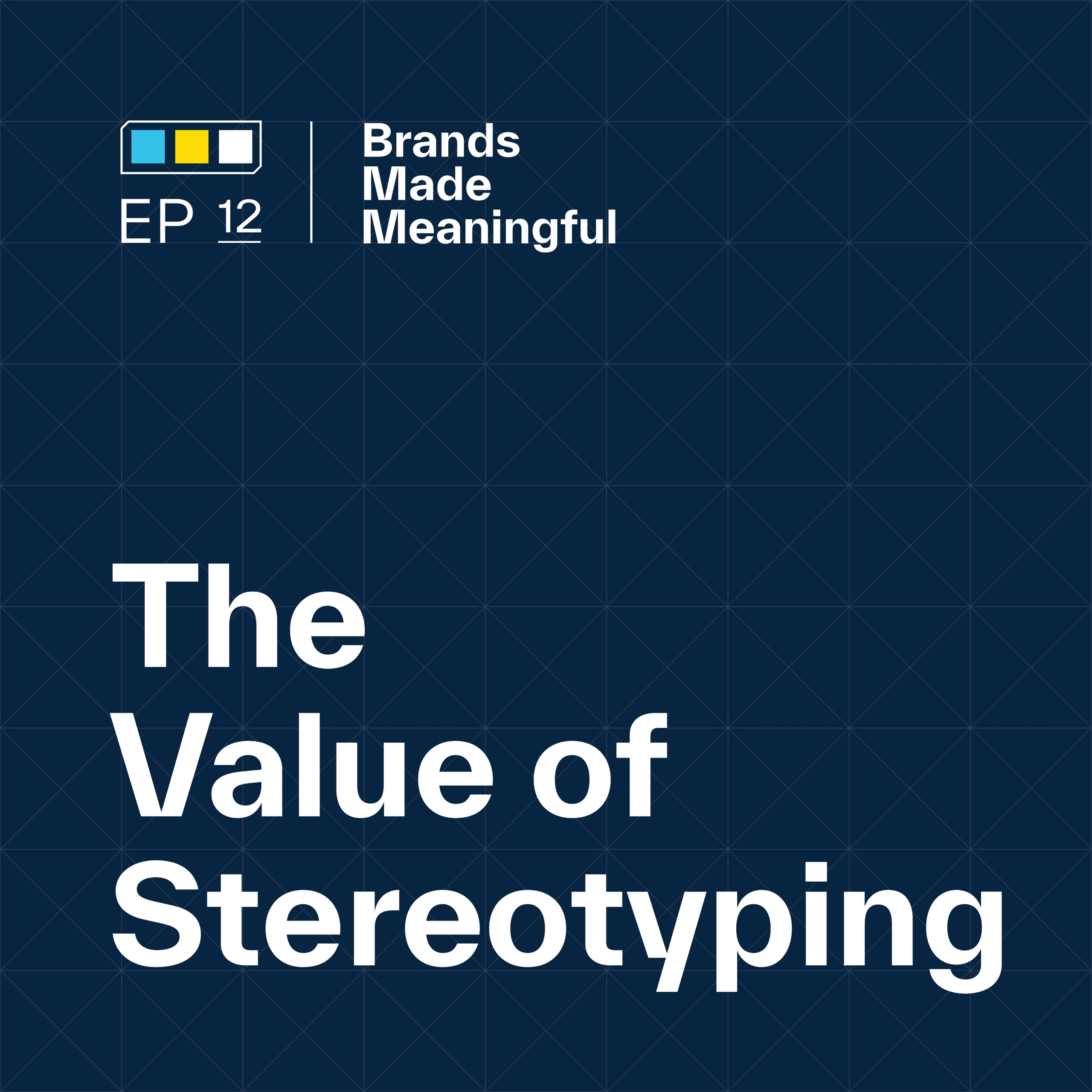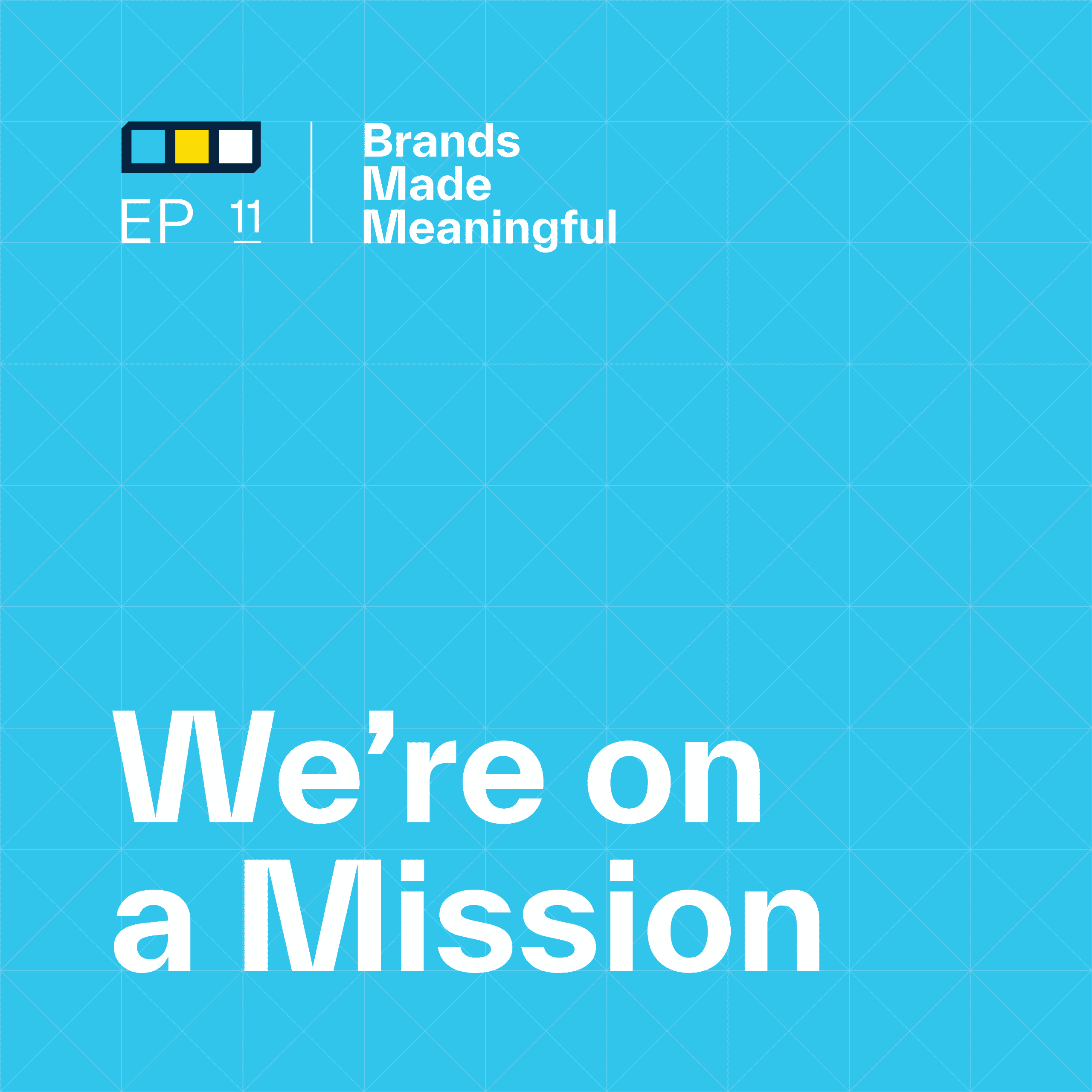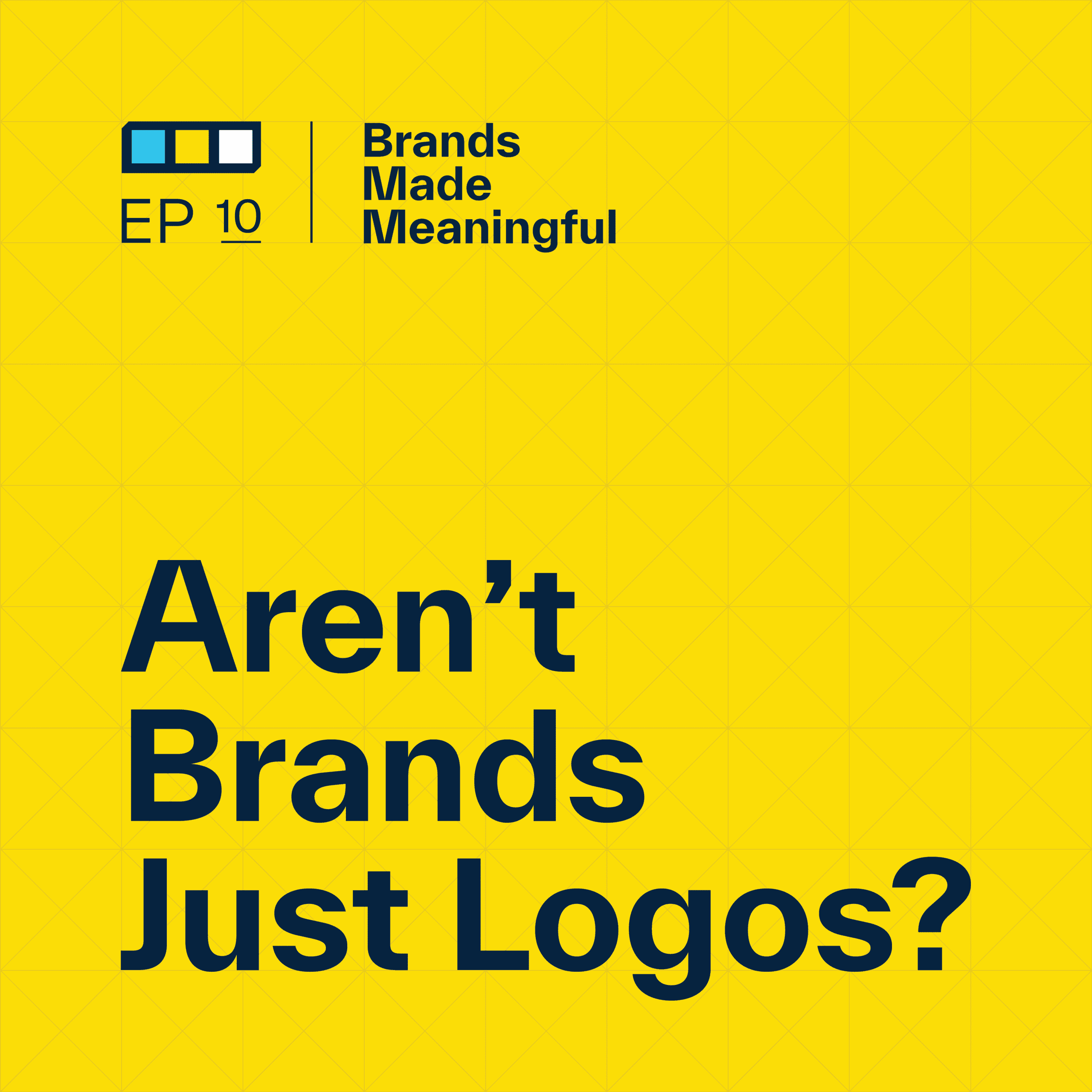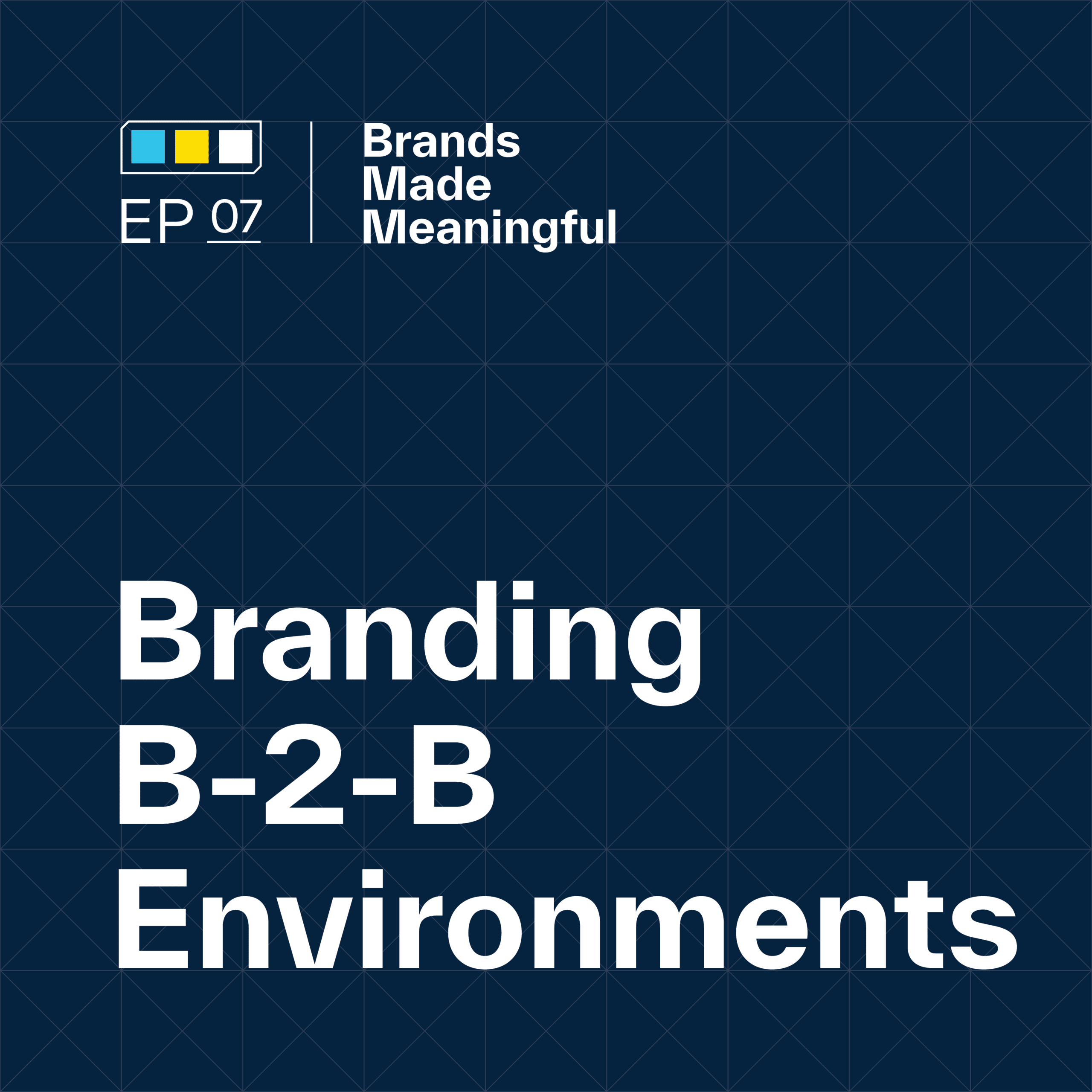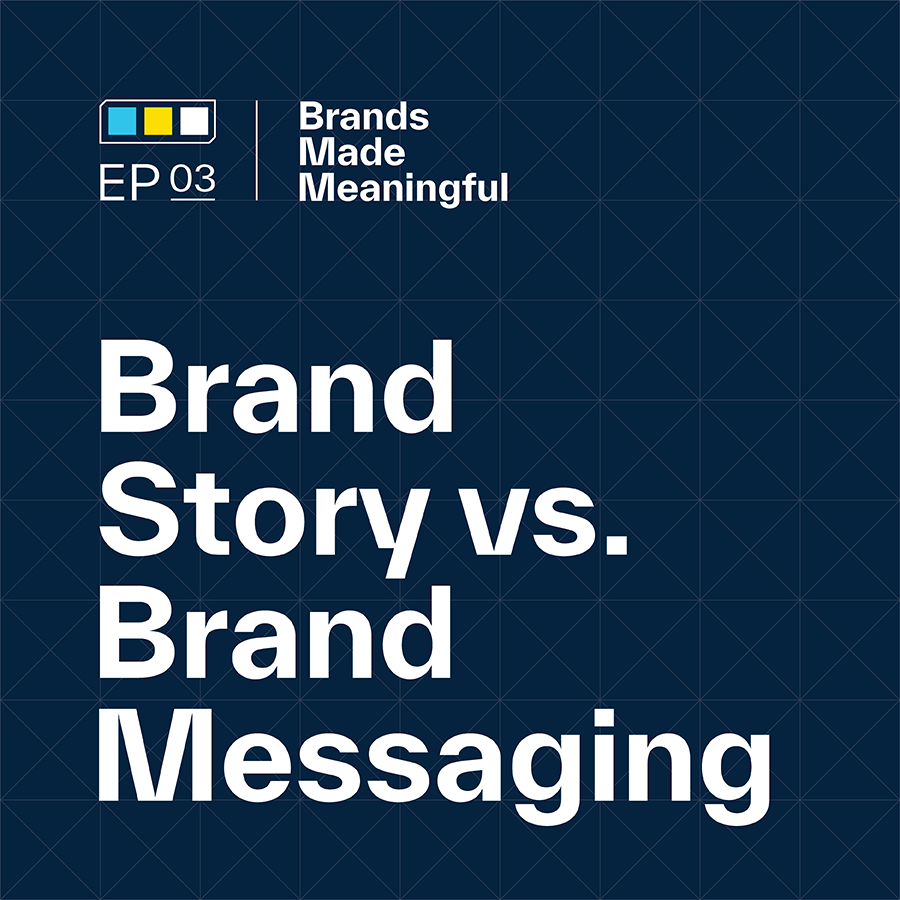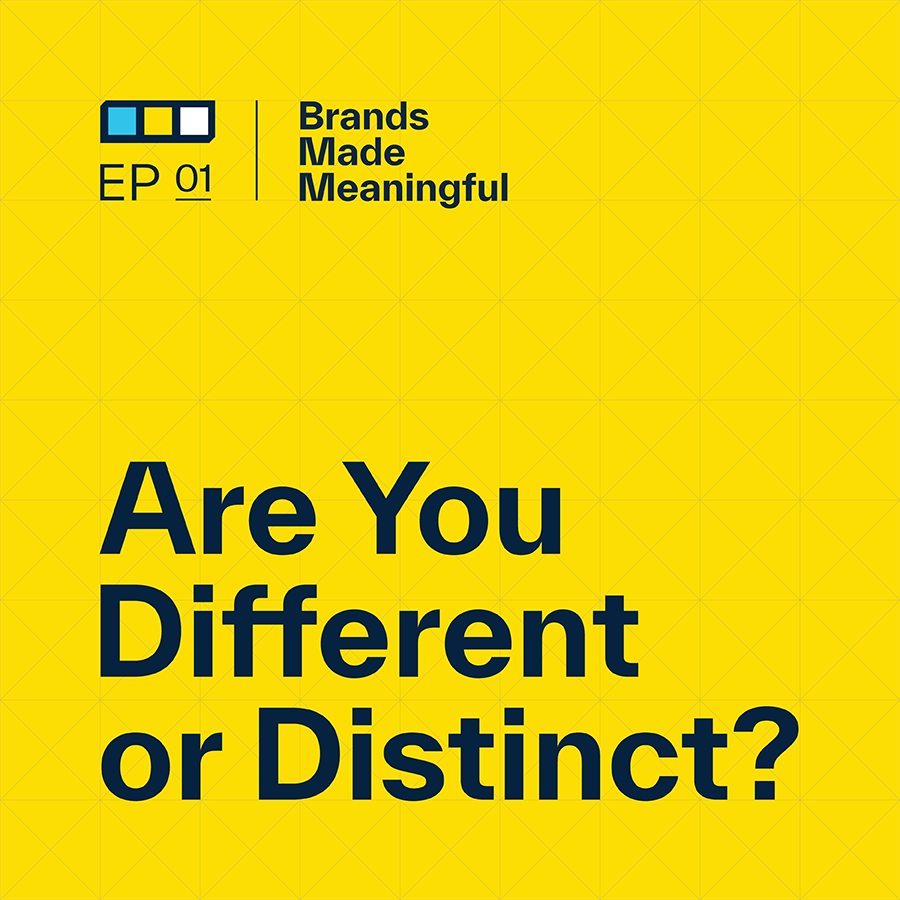EPISODE 27
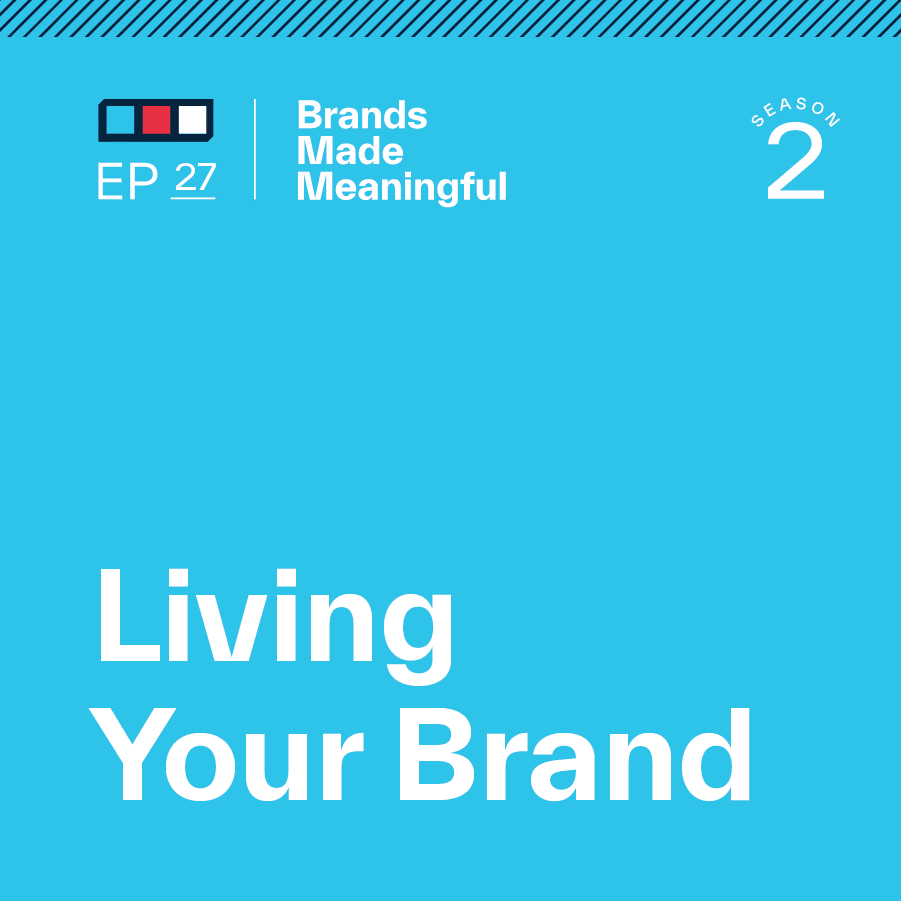
Living Your Brand
Episode 27
Your brand is not this shiny trophy on the shelf. It is something that you are molding every single day.
EPISODE TRANSCRIPTION
What’s next? What happens after that or what’s before? How do you know if you need to redevelop a brand? All these other things?
Tucker It really comes down to living a brand. And what does that mean? And I think that a lot of people have a sense of what it is, but we’re going to try to define it and make sure that we can articulate how to do it and the best ways to look out for it.
Expand Full Transcript
Derek We actually were asked this question directly recently by somebody that said, Once we get this stuff done, you guys are helping us clarify our brand, you’re helping us articulate what our culture’s all about. Maybe we’re helping them kind of lay out guiding principles like mission and vision. But before we get into language and messaging and the other tactical aspects of branding, the question they asked was, How do we live this? What does living our brand mean and what does that look like? And it was one of the greatest questions that we’ve been asked recently because that means this person is engaged and interested, and I think we know why. Part of it’s because this person’s been tasked at this organization as essentially the brand police. So I think we’ll talk about that connotation coming up. But it led us directly to this conversation that says, What is living your brand? What is that?
Tucker Well, at its core, a brand is built on values and beliefs. When we develop a brand, when we are working with people who already have a brand, the first thing that we talk about is, So what do you value and what do you believe? What are the things that make you guys unique? But when employees and leadership live a brand, it means that that brand is permeating across the culture, across what you’re offering within your products and services. And people feel that perception when they interact with the people that are a part of that brand.
Derek So what we’re saying is, once you’ve defined what your brand is all about, it’s walking the walk. It’s not just creating a tagline or putting your mission up on the wall. It’s literally, What is this in action look like? The other thing that you just said is that its part of living our perception. So, specifically, when we say perception, what do we mean?
Tucker The way that people think about you. Think about experiences. You create an experience for a customer. They come away from it and they feel a certain way. But a part of that experience is the interaction between you and that customer, like the physical or the conversational interaction. We’re saying if you’re living your brand, you’re creating that perception just by the way you talk, by the way that you carry yourself, by the way that you interact with them. The things that you say can really make an impact on the way that you’re perceived. And that’s kind of the direction that we’re going.
Derek I also think of perception, an extension of perception, or another word that I that helps me put that into context is reputation. And so if you’re going to nurture your own reputation, then it’s not just what you say, it’s what you do. It’s following up or living up to your word. It’s being aware of the interactions that you have with other people. And all of that applies to your brand as we’re digging in today. So why does living your brand matter?
Tucker When we work with clients, and even before we work with clients, we’re really clear that a brand should not remain on the wall of a conference room. The brand should not remain on a document hidden away in leadership servers. It should not be something that just is a great idea, a good concept, and then put away. It’s really about how we take that concept and make it a reality. And the only real way to make something a reality in the brand world is by having people buy into it and actually use the behaviors that we talk about when we develop the brand.
Derek It’s also not something that gets developed, launched, shared with the team, and then never spoken of again.
Tucker And what we find is that a lot of people think of brand as a marketing tool. And it is a marketing tool, and that’s great, but it’s really an organizational tool. And the people that kind of hide it into the marketing department, or when you said the brand police which is in the marketing department generally, is that brand or communication piece that says don’t do this, do this, don’t do that. How do we break it out of that realm and not have it be so siloed into marketing and say, Our perception is created by everyone in this organization, and giving them the tools to do that is really going to help them live their brand?
Derek So this matters. This living your brand matters because it is walking the walk in real life, in action. We pick on the core values or the mission statements that some organizations land on for not being meaningful or meaningful enough for being entry-level table stakes, the attributes that we expect out of everybody. But if we’re going to take that one level deeper, then the next thing we pick on are organizations that choose certain values or identify them as important to them but then we witness them not actually living up to those values.
Tucker When we say they’re all talk, it’s like if someone you know that you’re good friends with and they’re like, Well, they always say this, but they do something else, we do the exact same thing within the brand context to say, You say you value, let’s say, customer service and customer flexibility. But when you actually are interacting with people, you’re very rigid in the way that you say, Nope, this is our offering. You can’t have any more, any less. This is just what it is. That’s a really good example of saying, You want to be like this. That’s great. But the way that you’re actually creating that perception is that you’re difficult to work with and not flexible.
Derek So that value might be aspirational. But you haven’t figured out yet the tools or the ways to actually nurture it, reinforce it, reward it, but to promote that so that it actually is happening and you’re not just falling back into old habits or you haven’t actually chosen a value that’s actually authentic for your organization.
Tucker You asked earlier, Why does this matter and why do we do it? And I don’t think we necessarily answered that question. But to say when employees live the brand that you have, they really have passion for what you’re doing. Pride in the company. They understand that their role works towards something bigger and how they contribute to that overall perception. This is super powerful when they understand how they fit into the larger business goal, then they can really own their role and make it the best possible thing for the organization.
Derek We hear metaphors like, we’re all on the same bus in the right seats heading in the right direction. But the metaphor for what you just described is more like the rowing-the-boat metaphor. We’re just along for the ride. We’re actively invested and participating in what this organization is about because we align and we believe and we see ourselves in this place that you’re going.
Tucker So if you think about it in that boat metaphor, it’s like what we do is we work with organizations, we work with leadership to develop a really meaningful brand or redevelop their brand over the course of, let’s say, a year. And then that brand or boat, for example, is built and we push it out into the ocean and that’s awesome. But everyone on it is rowing in different directions. It doesn’t matter how great the boat is, doesn’t matter how big or how fast or any of that stuff. If we’re not giving people the direction and the movement to have that work within themselves, then it’s not going to go the right way.
Derek I’m laughing because I’m remembering a canoe trip with my two boys, and I don’t know who is rowing and who is steering, but we were not in alignment. And you literally just don’t go anywhere. You kind of go in circles and sideways and you expend an incredible amount of energy, both physically trying to row and maybe even emotionally in trying to yell at each other and figure it out.
Tucker There’s frustration for sure.
Derek It’s crazy.
Tucker And then you go down that route and put it in a business context, put it in a cultural context to say, Wow, we’re all rolling in different directions. We’re all really frustrated with each other. Nobody understands. No one understands why this policy is being put in place or no one understands why people are interacting like this. And that creates this toxic culture. That’s why people say, I don’t like working where I live. I can’t really articulate what’s wrong. It just feels not right. And that’s probably because you have different values and expectations than what’s actually going on every day. I think that it’s easy to throw someone under the bus. There’s usually a brand or communications department leader who’s in charge of this and we would call them the brand police. But it’s really not on them to police everything. The goal of a brand in today’s world is to create a great platform for our employees. And when we say platform, we mean not a box. We’re not trying to box them in and say, Here are the rules, do exactly this and nothing else.
Derek It’s not a brand in a box.
Tucker Exactly. It’s supposed to be a platform that allows employees to go, Oh, I get what you’re trying to do there, and then build off of it. If we’re not going to build off of it, then it’s going to be stale. It’s going to not last very long.
Derek I don’t think we can stress this enough. The brand is not a marketing thing. The brand is literally synonymous with the heartbeat of your organization. And it’s super common for that word brand to land in the marketing department and to be dumped completely in the responsibility of that one person. Brand police connotate punishment, brand jail, you know, thinking about some of the other ways we can do this. But that’s the opposite of what we’re trying to do. That is completely 180 degrees away from nurturing and growing and being inclusive with this heartbeat versus putting them in the corner and scolding them for using a logo incorrectly.
Tucker Your brand should inspire people internally and externally.
Derek Not scare them.
Tucker Not scare them. If your brand is so robust and difficult to use and it’s like, I don’t quite understand how this all works and I don’t even want to touch it because it’s so complex and I don’t know, I’m just going to do my job either way. Then there’s a problem because then it’s not clear, it’s not inspiring, it’s not going to help you move forward. I think a lot of people like to get all cloudy and complex with the brand stuff because it makes them feel like they’ve gotten a lot out of it. But the brand really is nothing if no one knows how to use it because then it’s just going to be this nice shiny thing sitting on the table that doesn’t get used properly.
Derek And that matters because if you do it right, your team will inherently know how to take this upon themselves to continue to foster this. Once a new brand is launched or a new set of values is shared, the next three months, six months, or the next 12 months becomes easy, becomes part of your culture, becomes growing it and fostering it, and it becomes easy because everybody’s inspired and it’s not left to that one person’s responsibility.
Tucker So let’s talk about some red flags. Let’s assume that whoever’s listening has the perfect brand platform in place. Their foundation is awesome. Their values are super defined and meaningful to how they do and probably want to do business with people. Their beliefs are unique to them rather than being industry-wide and they provided this opt-in, opt-out opportunity for employees to get the right fit and understand that. So if they have all those great things, either developed or redeveloped or perfect as is, what can we say are red flags when you look across your organization and you’re trying to find this fault of not living the brand?
Derek I think one that jumps to mind for me is that people within the organization are not living it. They’re not doing anything to advance the culture, to work towards the mission. They might not even know what the brand stands for. If you ask them.
Tucker Basically, they’re not contributing. They’re not moving something forward. They’re not coming up with an idea that is matching this or inspiring that to move forward.
Derek And it could be that they don’t feel inspired to contribute because they either don’t know what the values are or they don’t agree with or align with them. Or it could be that inside that organization, they don’t feel they’ve been empowered or given the permission to actually get involved and advance.
Tucker So then what happens if you have a brand and the people that are in leadership and across the organization aren’t contributing to that brand and aren’t actually building it and doing the things that they said that they would, what happens then?
Derek People are going to leave. One way is people check out. If nobody’s living it and you as an employee are looking at leadership and while they’re preaching, they’re saying one thing but they’re doing another. There’s clearly a fracture somewhere inside the organization of what we’re saying and what we’re doing. And if I don’t understand what we’re doing and where we’re going as an employee, I may have a hard time seeing myself as part of this organization in the long term.
Tucker It’s just like I said earlier, when you have a group of friends and all they talk about is starting this company and doing all this stuff but they tend to sit on the couch and eat Cheetos all day, I don’t believe them at all. And then you’re just like, I’m out of here. So then what happens? Everyone is leaving. But what if you’re sitting there and you’re going, They might be living the brand, but what if the brand isn’t correct? You’re looking at the brand from a platform standpoint and you’re saying, I don’t necessarily think those values or those beliefs are correct for what we’re trying to become. What do they do then?
Derek I think maybe this is one of the most common things that we run into. I think there are a bunch of things that can happen under this. One is the employee takes it upon themselves to define the brand as they see it from their perspective. They put into action the perception that they’ve experienced, which might not align with what the leadership intended it to be. So now you’ve got confusion, fragmentation, or worse, dissension.
Tucker And if you’re sitting there going, I don’t know if the brand we’ve set out to create is the right brand for what we need to be, you might be a part of that not good fit for the company. And that’s like a really unfortunate thing to look at and go, Oh, they all want to go this way and everyone believes it and all this, but I want to go this way. There might be another option out there and you might not be what we would call brand fit. Maybe your values don’t align or maybe your beliefs don’t align. And that’s just what it is. And I think that’s what we talk about opting in or opting out. If you’re not giving people in your organization an opportunity to opt in or opt out, then you’re not doing something right because then they can’t be all in or they can’t be all out. And that makes it really hard for people to take action and to do things and to push things forward.
Derek I’m not advocating for involving everybody in your entire organization in every single decision when it comes to your brand. The leadership has to step forward and make a start or at least empower somebody on the team to take that lead. In some organizations we work with, this is top-down. It starts with the CEO and/or the president and the C-Level staff, and they build this foundation and implement it and then nurture it and help it permeate throughout the organization. Another organization we’re working with has found that it’s actually way more successful with what they refer to as a bottom-up solution where middle management VP leadership came in. They identified the disconnects that they were experiencing at their level and the confusion at their level suggested a path to clarity, how they might be able to achieve that, and presented that to the C-Level and they got on board and then maybe fine-tuned it a little bit.
Tucker And if you’re sitting there going, Well, which one’s best for my organization? It really depends on your organization. In the first organization you had, leadership and management and underneath, there was a good spread between the demographics and the understanding and the experience. In the second example, there was a big disparity between the high-level leadership and the middle leadership. And the age gap for them was just much larger to say, Hey, we’re seeing a lot of changes down here. You guys are thinking that it’s the same organization it was 20 years ago and it’s just not. And so they felt like bottom-up makes more sense because the people who are in the trenches every day understand it and their industry moves so fast that it’s just different. And so I think when you ask, Which one’s better for me if I’m looking to redevelop? It’s really looking at your industry, your company, and the people around you to see what’s the best way that you can make sure that you’re getting all the perspectives you need.
Derek Absolutely.
Tucker So how do we know if there are issues? Kind of back to the red flags. But to say if there are issues, people aren’t living their brands. You mentioned people aren’t moving it forward. No one’s coming up with new ideas. There’s really a lack of inspiration. What other things could we look at that kind of give us the cue that something might be off, either that that person in their position isn’t living the brand because they aren’t a good brand fit, or the brand itself might have some challenges?
Derek One organization that we’re working with right now, as we’re talking with some of the staff in helping us in our own discovery phase, we’ve been asking the staff, Where’s this company going? What is the leadership’s vision for this organization? The common response across the board has been, I don’t know, but I trust that he’s got one. It feels like he knows what he’s doing. He hasn’t communicated it. I couldn’t tell you what it is, except we’re growing.
Tucker So there’s this kind of blind trust to go, We’re going somewhere. And I’m okay with that because I trust this person. And that makes it challenging for someone then to relay that idea of what we should be and make sure that their position does that.
Derek Another one that we bump into is asking three different employees within an organization, What do you do? What does this company do? What are you guys all about? And we’ll often get three completely different narratives, not the same story told through three different people’s descriptions, but three completely different narratives.
Tucker Another red flag that we can see across those things is when you roll out a brand, you develop a brand. It depends on the organization we’re working with. There are organizations where we roll out this redeveloped brand and it all goes great. And they go, Okay, thanks, Hand over everything to us. We got it, don’t worry about it. And that’s totally fine. And some people do a fantastic job, but some people have trouble with that rollout. They have trouble with what happens in the three, six, nine, and 12 months afterward. And another red flag would be to say when an employee comes back and they go, Wow, we did all this work, but nothing’s changed. Nothing in my world has changed at all.
Derek So, full transparency, that was one of my employees that said that. Hey, we’re people too – we’re human too – and we’ve been learning this by doing this with ourselves for ourselves too. We had rolled out a brand foundation, a vision, a mission, a purpose, core values, and what we said our brand story was all about. And we got excited. We talked about what it meant. And three or six months later, one of the people on the team said, Yeah, that was kind of great when we did it, but nothing’s changed and I have no idea how any of that actually affects me in my role and what I do because I guess I really don’t know what that mission even really means.
Tucker It was a real cobbler’s kid situation there. But no, it’s a really great kind of case study to go, That’s the problem. That’s a big red flag when someone goes, Yeah, I think this is all great and that mission statement is really inspiring to me, but I’m not using it. I don’t think of myself any differently. I don’t think of my role any differently. I haven’t noticed a difference. Then that means we’re not living it the way we had thought we could.
Derek So what we ended up having to do was take a step back and reevaluate, realize that we’d been too close to it, I’d been too close to it, fine-tune it, improve it, make it much more specific, much clearer. And when it came to what living that looked like, we completely redefined it and described it for ourselves.
Tucker I think it’s to be transparent about it. I think the leadership spends a lot of time on this stuff and it makes it easy to become defensive when it comes to owning it and saying, This person doesn’t believe it. And then that person could lash out right away and go, Well, they just don’t get it. And that’s on them. They just must not be a good fit. They should just not be here anymore. They get really defensive about it. Or there are other people that go, Maybe we didn’t get it right. Maybe there are cases for both. But what about when we work with organizations and we get the introduction, and this is before we’re even working with them, before we sign contracts or even start working on developing, redeveloping, working through brand challenges with them, what do we look for? I think that this is a super interesting question that we posed before on the pre-show that I thought, Wow, that’s a good question. It’s a knee-jerk reaction. You instinctively look for it. But what do you think?
Derek One of the cues that I watch for is who does all the talking and who doesn’t do any talking. If we’re in a meeting with, say, three people on a leadership team and we ask a question. We might even be looking at Jim. But Stacey answers the question that we asked Jim, and then Jim waits for Stacey to answer, and then Jim agrees. So I think kind of getting a sense of who is passionate. And some people can be passionate without being super vocal. But to kind of read the room. There’s a fair amount of psychology in this trying to understand literally body language – are arms crossed, how is that person reacting to what somebody else says, are they interrupting each other, and are they saying the same things? One of the things that we do without getting too far into the weeds around perception is on occasion we have an exercise. And that’s another really interesting conversation around the agreements, alignments, or sometimes spirited conversations that can come up. And especially when people disagree in front of us, how that conversation goes speaks a lot to me about if they’re even on brand in the first place.
Tucker I go back to some of the questions that we’ve heard, and some of the red flags we’ve already pointed out. It’s really situational, which makes it difficult, but they might come to us and go, Hey, we did this six, eight, nine, 12 months ago. But nothing’s really changed. That’s a huge cue. So obviously something’s wrong with the delivery of this brand. If they come back and go, Well, we have this whole foundation and we love it, but we’re not quite getting our customer service to that level, then we would go, Okay, where’s the disconnect? And so it’s really situational when you say, let’s diagnose it. And the symptom could be different than what the problem really is. And so you kind of get down that rabbit hole.
Derek If collaboration is one of your values and people are constantly complaining that nobody’s stepping up to help them when they’re overwhelmed, then there’s a red flag. Let’s pivot to solve. We’ve cued up a handful of things where if somebody is experiencing these issues, these red flags, there’s a couple of things that we’ve outlined that might help people get back on track.
Tucker Like I said, it’s situational, so it’s really difficult. But how could we create some form of checklist or some kind of to-do’s to build off of that? Number one – 1a – 1 with a star on it – if you haven’t done it, please, please, please define your core values, your beliefs, and your perception. So what are the real values that your company has? That your organization or your culture have? And they’re not just gimmes. They’re not just like, Oh, well, we value honesty.
Derek My favorite is integrity.
Tucker Integrity is a good one. But to say that we value something that’s deeper and more unique to that, or what do we believe really makes us unique compared to our competitors? They might believe in this and we believe in this. And that can define that a little bit easier for your employees and your perception. If people don’t know how they’re trying to create a perception, then it’s going to be really difficult for them to create a perception that they’re not sure what that is.
Derek If you spent the time to put together your core values, what you define and articulate what you as an organization believes in, and what you want your reputation to be, you’ve done the majority of the work of defining your brand. I’m not talking about look and feel and messaging yet, but you’ve now really kind of started to put your hands around that North Star.
Tucker And that’s kind of the main focal point of this foundation, this platform that people can build off of. If you give them a really good defined set of core values, core beliefs, and core perception, then you can kind of build off of that right there. And then you mix in mission and purpose and vision and the things that you expect. And so there are a lot of things that go into that. But if you can start with defining those things, that’s a huge thing. So if you haven’t done that, do that first or give us a call right now. Just stop the podcast right now and give us a call. Number two, we would suggest hiring for brand fit. This is a concept that I’ve heard a couple of times. This brand fit is like looking at someone who qualifies within the experience and knowledge of a role. When you say I’m hiring for capability fit, this is the same thing, but for brand, to say this person will perfectly create the perception that we’re trying to create. When you look at hiring someone, you shouldn’t just hire for their capabilities and their cultural fit. You should absolutely hire if they have the capacity internally within themselves to take our perception and grow it, within their role, whether that’s an internal role, external role, whether you’re a sales rep or a project manager, like figuring out how I can then live it, it makes it easier. So if you hire for that, it makes it way, way, way clearer for them in the hiring process that here’s our perception. They can start on day one understanding that a part of this job is creating perception.
Derek This seems like common sense. Hire the right fit. Hire the right fit people for the role. But we’re adding brand to that equation. We talk to people all the time who have people on staff that aren’t the right fit. And when we asked them, How did it come to be that they made it on the team in the first place? It’s oftentimes because they didn’t hire with the intention or with the filter or the lens to say, let’s make sure these people are living up to these things. Instead, they’re just hiring on gut and/or the talent for that role.
Tucker And the gut of the hiring manager who at the time knows how much has been defined for her to then build out this team. And so there’s a lot of guessing and understanding and maybe knowing, but maybe not knowing. So hire for brand fit and defining what that is can make it easier for hiring managers to really correctly hire not only for the people that they need but the perception that they’re trying to create within their own department. The third one that I would get into is really explaining this brand platform. It’s understanding that you’ve defined everything and that’s great. But developing core messaging that both internal and external audiences can then gravitate towards. This really helps with developing the language that can help someone be inspired by, okay, that might be our vision, but maybe that vision doesn’t inspire me. But there’s this whole other story that I can latch on to, and that in that language can really be helpful. When someone goes, How can I better the experience of either internal or external people depending on my role?
Derek So part of step three of brand training is that introduction, setting those expectations, describing how we behave, how we act in terms of living to our brand, what are our goals, and what can people be doing to reinforce that. And that’s different than what we’re going to pivot into next.
Tucker I think they’re one and the same. it’s this idea of training someone on your brand is almost like explaining your brand to the next level. It’s, Yep, you have them defined and that’s great. But when you explain your brand, you’re really training them on how to then use it to then say, Here are the experiences that are great. Here are the experiences that are not great. Here’s what we’re looking for. Maybe some stories that we can work off of. Here’s an example that someone did and this really resonates with the way we’re trying to create perception here.
Derek We have one client in particular that comes to mind that does a great job with this. They literally hand their employees materials that say, This is how we speak, This is what we say, These are words that we wouldn’t use because these words would not align with the reputation that we’re trying to grow.
Tucker And for them, it’s really sales oriented. And that’s great because the salespeople are part of that big perception externally, but you can use that across the organization. Think of it like an employee handbook. If your employee handbook is just defining the rules of working in a company, that’s great. But if it’s not defining the rules which the brand needs to help you get inspired by going, We say it like this – you don’t have to use these specific words – but this is what we mean by that. And here’s the theme or the ethos of why we talk like this. That can really help someone. Not everyone is a conceptual learner. People literally tell me what to do because I need you to tell me an example or two so that I can then move forward with that. They don’t necessarily always think vaguely.
Derek And the explanation, the storytelling, the sharing stories of people living examples within the organization of your values, of your desired perception, continuously help reinforce what you’re trying to do. There’s somebody smarter than me who said it takes the average person seven times to hear something for the first time, which is why you can’t roll this out one time at your annual company meeting and then forget about it forever or come back to it 12 months later. It needs to be literally part of your every day.
Tucker It’s like working out. If you work out once, you’re not going to feel a huge difference.
Derek But you just get really sore.
Tucker Yeah, but if you work out every day for six months, that’s extreme, but say that’s what you do. You start seeing changes, you start feeling the effects, your mood increases and your body starts changing. If you think about it in a brain context, if you do it once at an annual meeting once a year, everyone’s going to roll their eyes and be like, Yeah, we’re going that way. Sounds good. That becomes a really, really hard task of getting people bought in. And so if you’re really trying to get people to buy in, make it an everyday thing, make it a habit, build it into your daily routine. The last one, and this is really for the go-getters, for people who are trying to inspire the entire organization to live the brand every day, is to create something that we would call a brand hub. Create a program or a central hub, whether that’s online or a physical piece, that really defines and shares best practices for continuous improvement. Inspire people by giving them opportunities every single day to contribute to that hub. So think about things like the way that you look at a feed somewhere or like social media feeds. Like how can we build this into our daily lives where someone goes, Oh yeah, this happened today. Here we have it, we do it on Mondays. We build it into what I would call our brand hub as we have our Monday morning status. And every single Monday we go, What great thing happened last week that contributes to our perception in a right way? And the whole team’s here and we talk about it and we go, This is how we did it. Congratulations and great job. And this is how it all is. If you do that long enough, you look back for three to six months, you have a huge list of examples that people can then go right back to and say, Okay, that was a good example. Any time that you onboard someone new, they can look back at those examples and say, Oh, look at all these different things. These are real examples of something that somebody did. You can’t define those easily because it would take you all day to say, This is a good example of doing it, now go do it. Instead, go, that was great that you did that. Let’s write it down.
Derek You’re effectively rewarding for behavior, for the behavior that you are looking for that you believe is going to help your organization.
Tucker And some behaviors are expected like, Oh, we did this. I expected us to do that. That’s great. Here we go. Some of them are unexpected, like, Oh my God, I can’t believe we did that. That is perfect for the way that we want to be perceived. I never would have thought of that.
Derek And rewarding and recognizing the right behavior is the opposite of disciplining, policing, shaming, and essentially being the brand police.
Tucker So if you can go down those things and build kind of the central hub for your brand that people can then revert back to and reference and do things, it makes it easier to onboard, makes it easier at quarterly or annual meetings to go back to and look at all the great things we did that move our perception in the right way. It makes it easier to make it a daily habit to build on it. And for larger organizations, it’s for managers and employees to start adding to this and giving them the free will to edit this. As we said, it was building a platform and allowing them to grow the company off the platform instead of a box that they have to fit everything into.
Derek And I think that’s the takeaway from this conversation. Once you have established, clarified, and articulated what it is that you’re all about, what you care about, and what it is that you’re trying to do and how you behave, then when you share that with your team in a way that inspires them and invites them in to become part of this thing that they can see themselves in. So they’re motivated to take ownership and be empowered to grow it.
Tucker Your brand is not this shiny trophy on the shelf. It is something that you are molding every single day. Changes by customers’ perception, employees’ perception, all this other stuff. Take it off the shelf. Make sure everyone knows how to use it and then use it properly.
Derek And leave it off the shelf.
Tucker Leave it off the shelf. Shelves are lame anyways.
Derek Perfect.
Tucker Yeah, that was great.
Derek Thanks for listening. We look forward to the next time.
More Episodes Like This
Reclaiming Reputation Through Brand RevitalizationEpisode 85
Derek and Tucker discuss the potential that a branding initiative can have to restore a club’s reputation.
Branding The Club with Don KovacovichEpisode 84
Don Kovacovich, GM of The Club at Golden Valley, joins Derek & Tucker to discuss the impact that rebranding has had on his club and the opportunity it presents for other clubs
Changing a Club’s Membership ModelEpisode 83
Derek and Tucker discuss key considerations and challenges when changing your club’s membership model.
Connecting a Club with its Story with Jackie CarpenterEpisode 82
Derek and Tucker are joined today by Jackie Carpenter, author of People First.
Branding a Club AnniversaryEpisode 81
Derek and Tucker discuss the unique opportunity presented by milestone and anniversary dates for private clubs.
Private Club Storytelling with Ricky L. Potts, Jr., CCMEpisode 80
Derek and Tucker have the pleasure to speak with Ricky L. Potts Jr. about how powerful storytelling can be for your club members.
Opportunity in Club Facility RenovationEpisode 79
Derek and Tucker discuss pivotal key moments in your legacy and how to transform your story through renovation.
The Evolution of Club Members with Jon LastEpisode 78
Derek and Tucker are joined by Jon Last from Sports & Leisure Research Group to discuss the evolution of club members.
Member Branding vs. Product BrandingEpisode 77
Derek and Tucker discuss the challenges their client's have moved through when approaching differing styles of branding.
The Role of a Private Club's LogoEpisode 76
Derek and Tucker take a look back on private club logos they've designed over the years and explain the strategic reasons behind their choices.
Club Brand GovernanceEpisode 75
Derek and Tucker divulge the steps to evolving your brand while retaining your core values.
Seasonal Member MerchandiseEpisode 74
Derek and Tucker take a look at crafting specific merch to celebrate landmarks and special times of the year.
Who is Sussner?Episode 73
Derek and Tucker take a break from talking shop to talk about who they are and what they stand for.
Club Identities Beyond AmenitiesEpisode 72
Derek and Tucker discuss what it takes to stand out in unique ways for your club.
Little Things Mean EverythingEpisode 71
Derek and Tucker take a look at the often missed and easy to overlook.
Build Flexible Brand SystemsEpisode 70
Derek and Tucker break down the building blocks for long lasting branding.
The Club at Golden ValleyEpisode 69
Derek and Tucker take a close look at one of their recent rebrands.
When to Launch a Club RebrandEpisode 68
Derek and Tucker break down how to find the perfect timing when launching a club rebrand.
Steps to Launching a Club RebrandEpisode 67
Derek and Tucker break down the steps to take and the reasons why you should consider a club rebranding.
Brand Marketing vs. Brand DesignEpisode 66
Derek and Tucker define the line between marketing and design and how they intersect to inform one another.
Building Brand GuidelinesEpisode 65
Derek and Tucker show us how to build infrastructure guidelines to unify your brand experience across the board.
Club Identity SystemsEpisode 64
Derek and Tucker cover what Identity Systems entail and how to discern between internal and external methodologies.
Navigating Branding With a BoardEpisode 63
Derek and Tucker bring clarity to uniting your company under one cohesive vision.
Putting a Committee TogetherEpisode 62
Derek and Tucker assemble your need-to-know facts when putting together your committee.
The Guiding Principles of Private ClubsEpisode 61
Derek and Tucker go over the top ways private clubs can find the balance between pleasing old members while attracting new ones, all while making moves towards the future.
How Color Affects PerceptionEpisode 60
Derek and Tucker cover how to best convey your business with color.
Brand EcosystemsEpisode 59
Derek and Tucker break down how to craft effortless experiences when considering your brand as a whole.
6 Types of Brand TransformationEpisode 58
Derek and Tucker dive into 6 distinct types of transformations for a wide range of brands.
Tournament Branding For ClubsEpisode 57
Derek and Tucker discuss designing and delighting your club members with tailored events.
Brand Promoters & DetractorsEpisode 56
Derek and Tucker discuss how high level promoters increase your NPS and how to turn the tides on your detractors.
The Loudest Voices in the RoomEpisode 55
Derek and Tucker talk about gathering feedback while prioritizing every voice.
Determining A Primary AudienceEpisode 54
Derek and Tucker discuss if and when you should be honing in on your audience vs. casting as wide a net as possible.
Branding For ExclusivityEpisode 53
Derek and Tucker discuss the intricate process of naming your brand.
Measuring Brand SuccessEpisode 52
Derek and Tucker discuss how we measure our success in branding and a few key KPIs that help us understand our impact.
Branding For ExclusivityEpisode 51
Derek and Tucker breakdown how brands can create the perception that they are exclusive and only for a certain type of consumer.
What Makes A Brand SurprisingEpisode 50
Derek and Tucker break down the Sussner formula that we believe leads to a surprising brand.
Breathe Life Into Brand TraditionEpisode 49
Derek and Tucker discuss the intricacies and common pitfalls of branding for Private Golf Clubs.
They Key of Visual DifferentiationEpisode 48
Derek and Tucker break down the importance of differentiating your brand on a visual level.
Branding For Private GolfEpisode 47
Derek and Tucker discuss the intricacies and common pitfalls of branding for Private Golf Clubs.
Dealing With An Identity CrisisEpisode 46
Derek and Tucker breakdown how to identify and remedy a brand's identity crisis throughout thoughtful and intentional brand management.
Branding vs MarketingEpisode 45
Derek and Tucker discuss the differences between Branding and Marketing and how to make the two compliment each other.
Build Your Brand's FoundationEpisode 44
A brand's foundation is a critical element in being successful in the long-term.
Building a Constructive Branding ProcessEpisode 43
Derek and Tucker break down the steps required to build the most constructive and meaningful branding process.
What Makes a Brand Relevant?Episode 42
Relevance is a key piece of a brand's identity for creating clarity and connection.
Your Right to WinEpisode 41
Derek and Tucker discuss the “Right to Win” and the odds of your brand's success within your target market.
An Intro to Sub BrandingEpisode 40
Derek and Tucker discuss the nuances of developing sub-branding and strategies.
Conquer Branding FearsEpisode 39
Derek and Tucker dive into how to overcome the fear of change and the nature of constant refinement of your brand.
Balancing Strategy & DesignEpisode 38
Great strategy is a necessary foundation for great design—and great design brings great strategy to life.
Branding PrioritiesEpisode 37
Branding priorities are the actions and initiatives that shape or enhance a brand's identity, perception, and market position.
Invest in Your BrandEpisode 36
Investing in your brand benefits your company as a competitor in the marketplace, builds trust with customers, increases perception of quality, and drives employee engagement.
Why is Positioning Scary?Episode 35
Narrowing the brand's position is really a strategic decision to focus the brand's offerings, messaging and target audience on a specific niche or segment within the market.
What Are Brand Consultants?Episode 34
Derek and Tucker discuss the importance of hiring expertise with a wider breadth of knowledge than just visuals.
Hire for Brand FitEpisode 33
Hiring people that fit your brand is key in order to maintain brand authenticity, positive culture, and consistent messaging.
Your Brand’s Stance MattersEpisode 32
Your stance can help define your brand from a core level and make branding, hiring, and marketing not only easier, but more meaningful.
Levels of Executing a Brand RefreshEpisode 31
If you have a brand strategy in place, how do you execute it?
The Role of Features & BenefitsEpisode 30
Derek and Tucker discuss the importance of features and benefits within the context of branding, selling, and marketing your products and services.
Should You Listen To or Lead Your Customers?Episode 29
Within the challenge of any rebrand is the challenge of managing customers' perception of change.
Managing a Brand TransformationEpisode 28
Episode 28 discusses the highlights and challenges of rolling out a new brand, both internally and externally.
Living Your BrandEpisode 27
Your brand is not this shiny trophy on the shelf. It is something that you are molding every single day.
What Makes a Brand Authentic?Episode 26
Season 2 starts off with a discussion about building authentic brand experiences, both internally and externally.
Reviewing your Competition's CreativeEpisode 25
Derek and Tucker discuss the process of reviewing your competitors' creative strategy to better position your brand within the market.
Interviewing your Audience for InsightsEpisode 24
This episode details the process and benefits of interviewing your audience as part of the branding process.
Assumption ReversalEpisode 23
Derek and Tucker discuss how we change our thoughts and get into a different mindset to refine and revise our branding.
Developing vs. Amplifying a BrandEpisode 22
Another way to say it is, development is building and crafting your brand story, and amplification is then telling it.
Refreshing a Sporting Goods BrandEpisode 21
This episode shares the steps behind Sussner’s work in refining the Shock Doctor brand.
Defining PerceptionEpisode 20
Derek and Tucker discuss the positive and negative impacts of brand perception.
What is a Brand?Episode 19
Derek and Tucker discuss what defines a brand and what makes them successful.
Branding Golf Courses vs Golf ClubsEpisode 18
Derek and Tucker further hone in on golf course design.
Refreshing a Golf CourseEpisode 17
Derek and Tucker discuss the bar for golf course design – and how to push past it.
Let’s Talk Taglines Episode 16
Derek and Tucker talk taglines in today's episode.
Refreshing an Athletic DepartmentEpisode 15
Derek and Tucker sit down today to discuss what logos mean within branding.
Branding a Club Episode 14
Derek and Tucker discuss how to brainstorm branding a club.
An Intro to Internal Branding Episode 13
Derek and Tucker discuss the power behind internal branding.
The Value of Stereotyping Episode 12
Derek and Tucker sit down today to discuss the meaning of stereotyping within the branding world.
We’re on a Mission Episode 11
This episode digs into the rallying cry for the greatness your team is going to accomplish.
Aren’t Brands Just Logos? Episode 10
Derek and Tucker sit down today to discuss what logos mean within branding.
The Business You Are Really In Episode 09
Derek and Tucker sit down today to discuss how to discover what business you are really in to better understand your mission statement.
Clarity of Vision Episode 08
Derek and Tucker discuss the importance of looking ahead towards the big picture to better hone the purpose behind what we do in the now.
Branding B-2-B Environments Episode 07
Derek and Tucker discuss the Branding of Spaces.
It’s All in the Name Episode 06
Derek and Tucker discuss what a name can say - and not - about your company.
Delving Into Branding Data Episode 05
Derek and Tucker jump into the discovery phase of branding before it hits the drawing board.
Content Made Meaningful Episode 04
Today Derek and Tucker discuss the concepts within content and its common misconceptions such as the phrase "Content is King."
Brand Story vs. Brand Messaging Episode 03
Your story matters.
Visuals That Take The Cake Episode 02
Derek and Tucker sit down to discuss visual impact and what that could mean for your brand.
Are You Different or Distinct? Episode 01
It's not about being the only option, it's about being the right option. Join Derek and Tucker as they discuss Differentiation & Distinction.



